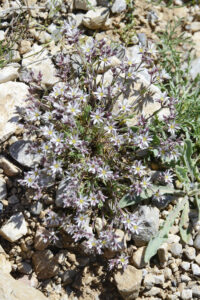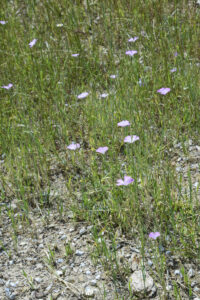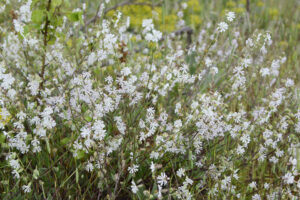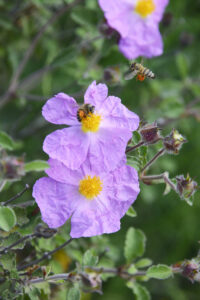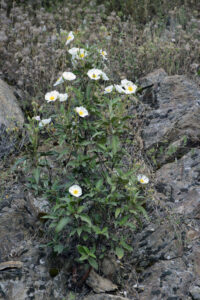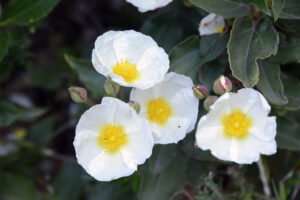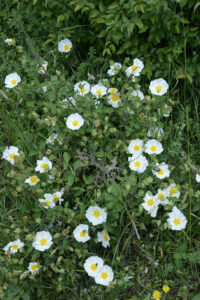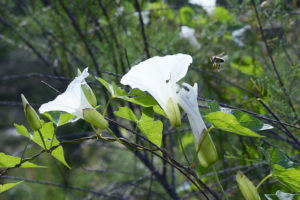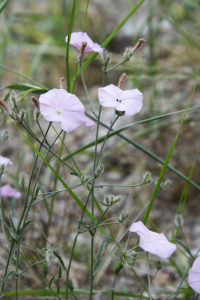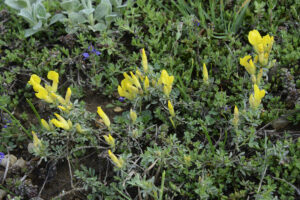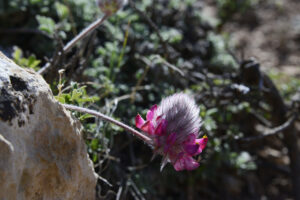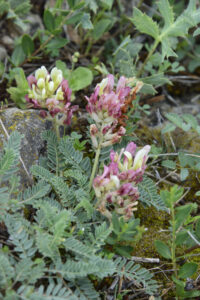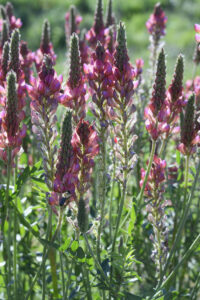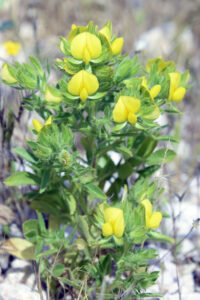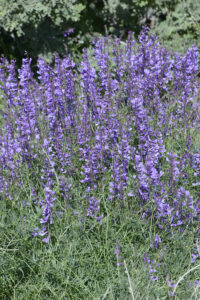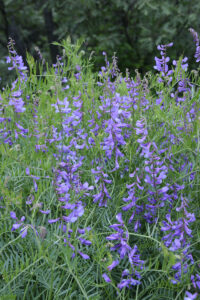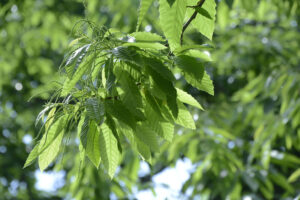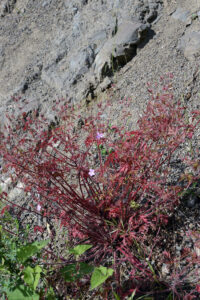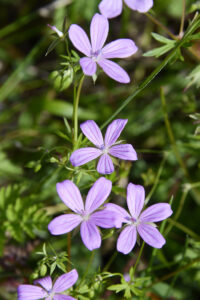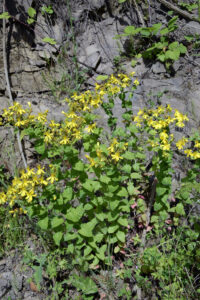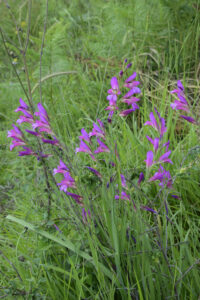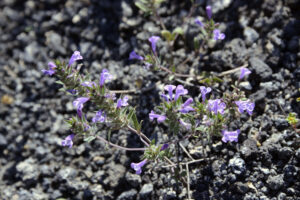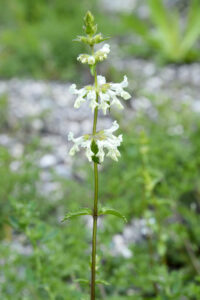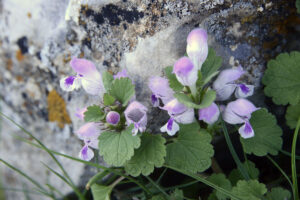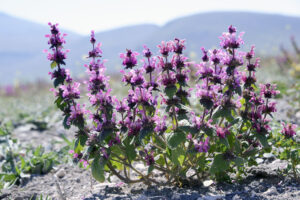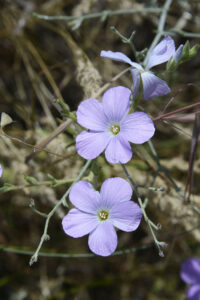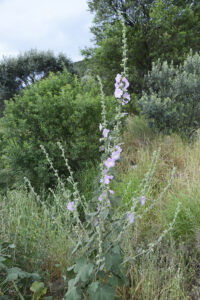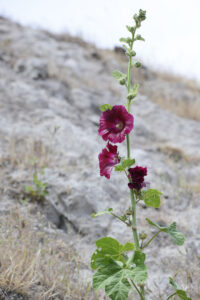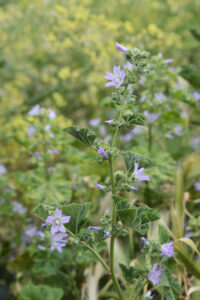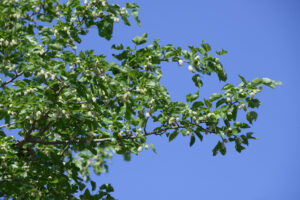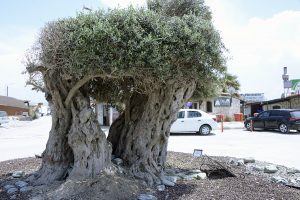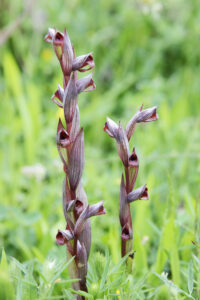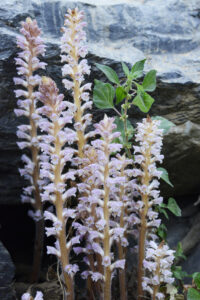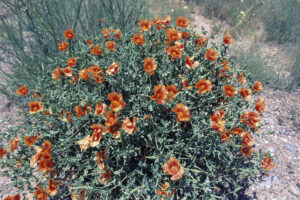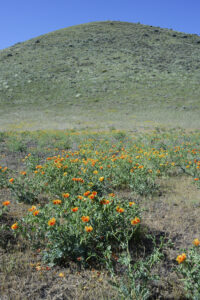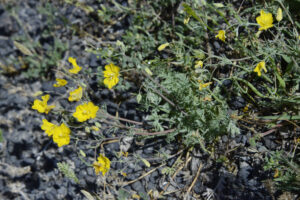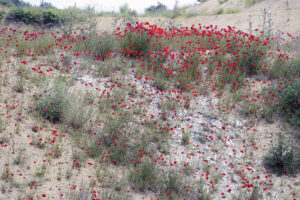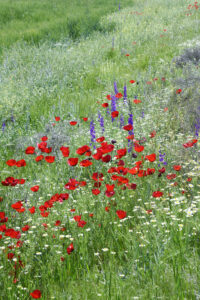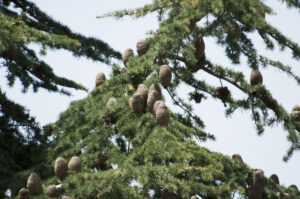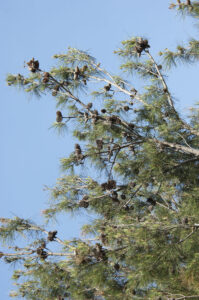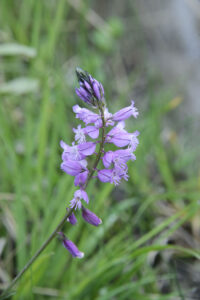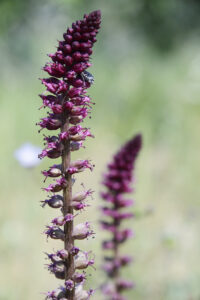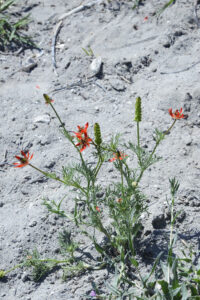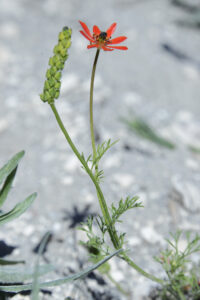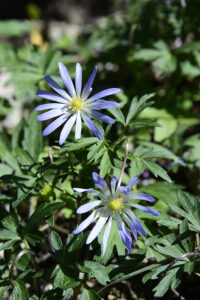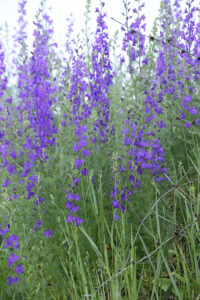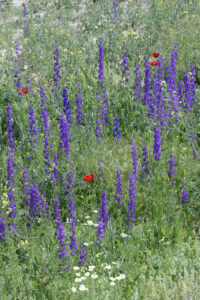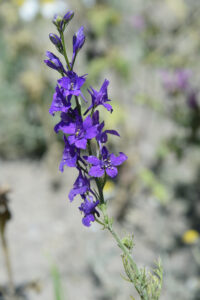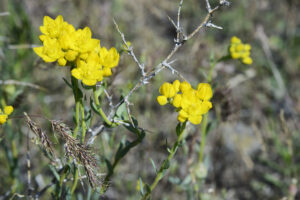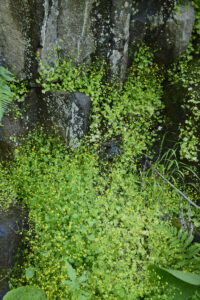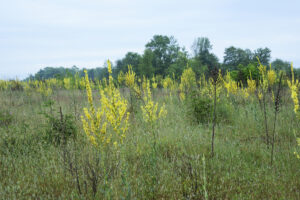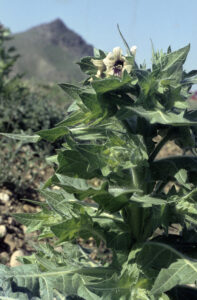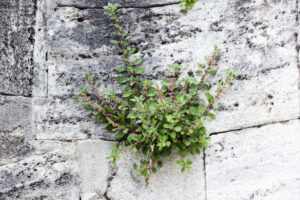Flora in Turkey
A species of horned poppy, Glaucium leiocarpum, Meke Gölü, near Karapinar, east of Konya. (Photo copyright © by Kaj Halberg)
Pontic rhododendron (Rhododendron ponticum), Çuhadaröğlu Geçidi (995 m), Dikmen Dağlari, south of Inebolu. (Photo copyright © by Kaj Halberg)
A species of mullein, Verbascum mucronatum, Pamukkale. (Photo copyright © by Kaj Halberg)
Oleander (Nerium oleander), Manisa, western Turkey. (Photo copyright © by Kaj Halberg)
This page shows pictures of plants, taken during 3 visits to Turkey, in 1973, 2006, and 2018. Families, genera, and species are presented in alphabetical order.
When writing the text, I have relied heavily on the websites turkiyebitkileri.com and Wikipedia, and to some degree on ibuflora.ibu.edu.tr and encyclopaedia.alpinegardensociety.net. The 2-volume book The most beautiful wild flowers of Turkey, by Erdoğan Tekin (2007), has also been of some usage. It contains many fine pictures, but unfortunately most of them are extreme close-ups, which cannot at all be used for identifying closely related species. There are no identification keys or any other methods to identify the plants. Furthermore, in several cases the pictures show wrong species, and there are also other errors in the work.
Nomenclature and distribution of plants largely follow Kew Gardens’ website Plants of the World Online (powo.science.kew.org). Regarding the etymology, I have relied on the website Wiktionary, and on an excellent book by Jens Corneliuson: Växternas namn. Vetenskapliga växtnamns etymologi. Språkligt ursprung och kulturell bakgrund (‘Etymology of scientific plant names’), Wahlström & Widstrand, 1999 (in Swedish).
This page shows a number of unidentified plants, and others are only tentatively identified. If you are able to identify any of these species, or should you encounter any errors, I would be happy to hear about it. You may use the address at the bottom of the page.
Map of Turkey, showing the most important mountain ranges, rivers, lakes, and cities. (Borrowed from freeworldmaps.net)
Habitats
Turkey is an incredibly varied country with rocky coasts, sandy beaches, coastal shrubberies, broadleaf, coniferous, and mixed forests, river valleys, lake shores, marshes, dry grasslands, barren semi-deserts, and mountain meadows that are veritable ‘flower gardens’.
This variety is reflected in the number of wild plants found in the country, almost 10,000 species, of which more than 3,000 are endemics.
Deciduous forest, near Kapısuyu, between Cide and Amasra, Black Sea. (Photo copyright © by Kaj Halberg)
Barren semi-desert, near Tuz Gölü, central Turkey. (Photo copyright © by Kaj Halberg)
Rocky coast, near Tirebolu, Black Sea. (Photo copyright © by Kaj Halberg)
Valley between Samsun and Çakallı, northern Turkey. (Photo copyright © by Kaj Halberg)
Kızılırmak River, near Kırıkkale, central Turkey. (Photo copyright © by Kaj Halberg)
Fig trees (Ficus carica), Karaburun Peninsula, west of Izmir. (Photo copyright © by Kaj Halberg)
Tapping resin from Turkish pines (Pinus brutia), near Çanakkale, north-western Turkey. (Photo copyright © by Kaj Halberg)
Snow-clad Uludağ Mountains, near Bursa. (Photo copyright © by Kaj Halberg)
Mixed forest with oriental beech (Fagus orientalis) and Nordmann’s fir (Abies nordmanniana), Uludağ Mountains. (Photo copyright © by Kaj Halberg)
Pine forest, growing on coastal rocks, near Kelebek Vadisi, west of Antalya. (Photo copyright © by Kaj Halberg)
Distant rainclouds move away, while sunshine illuminates the barren landscape around the ruins of the Hittite city Hattuşa, near Boğazkale, central Turkey. (Photo copyright © by Kaj Halberg)
Acanthaceae Acanthus family
This huge family, counting about 229 genera with c. 4,000 species of herbs, shrubs, climbers, or trees, is distributed in most parts of the world.
Acanthus
This genus contains about 30 species, found in south-eastern Europe, the Middle East, most of Africa, and from the Indian Subcontinent eastwards to southern China, and thence southwards to northern Australia.
The generic name is a Latinized form of Ancient Greek akanthos, meaning ‘with spiny flowers’, derived from ake (‘thorn’) and anthos (‘flower’).
A popular name of the genus is bear’s breeches. This strange name builds on a misunderstanding. A medieval Latin name of the plant, which Swedish botanist Carl Linnaeus (1707-1778) later named Acanthus mollis, was Acanthus sativus branca ursina (‘cultivated spiny flower (with) bear bracts’), alluding to the curved bracts of the inflorescence, which, to those who named the plant, apparently resembled a bear’s claws. Over time, branca was corrupted to breech, leading to the name bear’s breeches.
Acanthus hirsutus
This plant is restricted to the eastern Aegean Islands and western and central Turkey. There are 2 distinct subspecies, both with slender, lanceolate, dark green leaves, to 30 cm long, which are initially soft, but later becoming spiny. The inflorescence is a long, terminal raceme with hairy, spine-tipped bracts. Flowers of the nominate subspecies are entirely pale yellow or greenish-white, whereas those of ssp. syriacus have a reddish-purple upper lip.
The specific name is Latin, meaning ‘hairy’, alluding to the hairy bracts.
Acanthus hirsutus, western Turkey. (Photo copyright © by Kaj Halberg)
Aizoaceae Ice plant family, midday flower family
This large family contains about 135 genera and 1,800 species of succulents, almost all endemic to arid areas in southern Africa. A few species are found in the Mediterranean area, Australia, New Zealand, some Pacific islands, and America.
The family name is derived from Ancient Greek aeizoon (‘houseleek’), from aei (‘forever’) and zoion (‘a living thing’), alluding to the succulent, long-living leaves of the members, similar to the houseleeks (Sempervivum).
The name midday flower stems from Polish merchant and naturalist Jacob Breyne (1637-1697), who named a genus of the family in 1684, using the spelling Mesembrianthemum, derived from the Greek mesembria (‘noon’) and anthemon (‘flower’), thus ‘midday flower’. He had noticed that plants of this genus mostly opened the flowers around noon.
However, in 1719 German botanist Johann Jacob Dillenius (1684-1747) discovered that some members were flowering at night, so he changed the spelling to Mesembryanthemum, derived from the Greek mesos (‘middle’), embryon (‘pistil’), and again anthemon (‘flower’), thus ‘flower with the pistil in the centre’.
Carpobrotus Ice plants, Hottentot figs
A genus with about 15 species of creeping plants with succulent leaves and large, daisy-like flowers. Most species are endemic to southern Africa, but there are at least 4 in Australia and one in southern South America.
The generic name is derived from Ancient Greek karpos (‘fruit’) and brotos (‘edible’), like one of the common names referring to the edible fruit of some of the species.
Carpobrotus chilensis Chilean sea fig
The stems of this prostrate plant, previously known as Mesembryanthemum chilense, may be up to 2 m long, rooting at the nodes, and often forming carpets on the ground. The fleshy leaves are pointed, triangular in cross-section, to 7.5 cm long. The flowers are deep magenta, to 6.5 cm across.
It is native to southern Chile and Argentina, but is widely cultivated elsewhere due to the gorgeous flowers. However, it easily becomes naturalized and is regarded as an invasive pest in several areas, especially California.
Chilean sea fig, growing on the old town wall, Amasra, Black Sea. (Photo copyright © by Kaj Halberg)
Amaryllidaceae Amaryllis family
A family with about 75 genera and 1,600 species, mainly found in tropical and subtropical areas around the world.
Allium Onion
A huge genus with more than 1,000 species of herbs, distributed mainly in temperate and subtropical regions of the Northern Hemisphere, with some species in southern Africa. The core area of the genus is temperate areas of Asia, with almost 200 species in Turkey. At one time, these plants were placed in the family Alliaceae, which is now regarded as a subfamily, Allioideae, of Amaryllidaceae.
The inflorescence of these plants is very distinctive, consisting of a compact globular umbel on an unbranched stem. Initially, the umbel is enclosed in a papery spathe, which splits into lobes, when the stalked flowers unfold.
The generic name is the classical Latin name of garlic (A. sativum), which is described in depth on the page Plants: Plants in folklore and poetry.
An unidentified species of onion, Amasra, Black Sea. (Photo copyright © by Kaj Halberg)
An unidentified species of onion, Pamukkale. (Photo copyright © by Kaj Halberg)
Allium rotundum Round-headed leek, purple-flowered garlic
This plant often divides, forming large growths, stems to 90 cm tall, leaves 2-5, flat and narrow, to 40 cm long. The rounded umbels may contain up to 200 bell-shaped flowers, to 7 mm across, petals purple, sometimes with white margin.
It is found from Germany and European Russia southwards to Morocco, Jordan, and Iran, growing in disturbed places, including fields, along roads, open slopes, and beaches.
Round-headed leek, Pamukkale. (Photo copyright © by Kaj Halberg)
Round-headed leek, Aydın Dağları, near Izmir. (Photo copyright © by Kaj Halberg)
Leucojum Snowflake
Formerly, this genus contained 11 species, but 9 have been moved to the genus Acis, leaving only L. vernum (spring snowflake) and L. aestivum (below) in the genus.
The generic name is derived from the Greek leukos (‘white’) and ion (‘violet’).
Leucojum aestivum Summer snowflake
This pretty plant is native from the British Isles and the major part of central and southern Europe eastwards to Ukraine, the Caucasus, Turkey, and northern Iran. It has also become naturalized in Denmark, Spain, southern Australia, New Zealand, Nova Scotia, and much of eastern and western United States.
It grows to 60 cm tall, sometimes to 90 cm, leaves strap-shaped, to 60 cm long and 2 cm wide. The inflorescence is a terminal umbel with 3-7 nodding flowers on stalks to 7 cm long, corolla bell-shaped, to 4 cm long, petals white with a yellowish-green spot just below the tip.
The specific name is Latin, meaning ‘of the summer’, alluding to the rather late flowering time of this species, compared to that of the spring snowflake.
Summer snowflake, found on a coastal plain between Ünye and Terme, Black Sea. (Photo copyright © by Kaj Halberg)
Anacardiaceae Cashew or sumac family
A cosmopolitan family with about 83 genera and 860 species, mainly found in tropical regions, with some members in subtropical and temperate areas.
Cotinus
A small genus with 7 species, distributed in south-eastern United States and north-eastern Mexico, and from southern Europe eastwards to Kazakhstan, southwards to Syria, Iran, the Himalaya, and southern China.
The generic name is the Latin term for C. coggygria (below), derived from Ancient Greek kotinos, the term for the wild olive tree (Olea europaea). The connection between these two trees is hard to see.
Cotinus coggygria Smoke tree
This spreading shrub, growing to 7 m tall, is found from southern Europe eastwards to Kazakhstan, southwards to Syria, Iran, the Himalaya, and southern China.
The elliptic or ovate leaves, to 8 cm long, are green or bluish-green, turning yellow, orange, or scarlet in autumn. The numerous flowers are in large clusters, to 30 cm long, each flower to 1 cm across, with five pale yellow petals. Later, pinkish or purplish, feathery plumes grow from the flowers, surrounding the drupe, to 3 mm across.
The wood yields yellow, reddish, and purple dyes.
The specific name is derived from the Ancient Greek name of this tree, kokkygea. The common name refers to the numerous feathery plumes around the fruits, which, when viewed from a distance, have been likened to smoke.
Smoke tree with unripe fruits, surrounded by feathery plumes, Akbayir, near Cide, Black Sea. (Photos copyright © by Kaj Halberg)
Pistacia Pistachio trees
This genus, comprising about 11 species, is native to southern Texas, Mexico, Central America, southern Europe, northern and eastern Africa, and from the Middle East eastwards to China, Vietnam, and the Philippines.
The generic name is the classical Latin name of the true pistachio tree (P. vera), adapted from Ancient Greek pistakia.
Pistacia terebinthus Turpentine tree
A small, deciduous tree, to 10 m tall, native to the Mediterranean region, from Morocco and Portugal eastwards to Turkey, Lebanon, and Israel.
The pinnately divided leaves are to 20 cm long, with 5-11 ovate, glossy leaflets, to 6 cm long and 3 cm wide. The small, reddish-purple flowers are clustered in panicles, to 15 cm long, appearing with the new leaves in spring. The fruit is a globular drupe to 7 mm across, red or black when ripe. The entire plant emits a strong, resinous smell.
Young shoots are cooked as a vegetable. The seeds are edible and sweet, raw or cooked. They are used in pastries. An edible oil is also obtained from the seeds. Unripe red fruits and fruit stems are preserved in vinegar and salt, used as a relish to wine during meals. A coffee-like drink is made from roasting the fruits.
Resin from the bark is widely used for treatment of many different ailments, including cancer. It is also used as chewing gum, and to burn as incense. Tannins and a red dye are obtained from galls on the leaves, caused by aphids. The wood is used for carpentry and to make cabinets.
The word turpentine is derived from terebinthos, the Ancient Greek name of this tree.
Flowering turpentine tree, near Samsun, Black Sea. (Photo copyright © by Kaj Halberg)
Turpentine tree with unripe fruits, Pergamon, western Turkey. (Photo copyright © by Kaj Halberg)
Rhus Sumac
Sumacs are a genus of c. 35 species, distributed in subtropical and temperate areas, especially around the Mediterranean, and in Asia, Australia, and North America. Other species, which were formerly placed in Rhus, have now been transferred to the genus Searsia, others to Toxicodendron, including poison ivy and poison oak, described on the page Autumn.
The word sumac is derived from Ancient Syriac summaq (‘red’), referring to the red fruits of the genus. They have an acrid taste and are used as a spice. In North America, the fruits of staghorn sumac (Rhus typhina) are soaked in cold water to make ‘pink lemonade’, a refreshing beverage, rich in vitamin C.
Rhus coriaria Elm-leaved sumac
This species, also known by other names, including tanner’s sumac and Sicilian sumac, is native from the entire Mediterranean region eastwards through the Caucasus and the Middle East to Kyrgyzstan and Afghanistan. It is also found on the Canary Islands and Madeira.
It is a shrub, growing to 5 m tall, leaves pinnately divided, with 7-8 pairs of ovate leaflets. The inflorescence is a terminal cluster of small white flowers, which later become brownish-red or greenish-yellow drupes, with a very acidic taste. They are dried and crushed to be used as a spice, which, together with other spices, form a mixture called za’atar.
Leaves and bark contain tannic acid and were formerly used in leather tanning, hence the specific name, derived from the Latin coriarium (‘leather’ or ‘tanning’). Various parts of the plant yield red, yellow, black, or brown dyes. Oil from the seeds are utilized to make candles.
Elm-leaved sumac is very common in Turkey. This one has taken root on the wall of an abandoned house in Sultanahmet, Istanbul. (Photo copyright © by Kaj Halberg)
Apiaceae (Umbelliferae) Carrot family
A huge worldwide family, containing about 434 genera with c. 3,700 species of herbs.
The inflorescence of this family is unique. In almost all species, the flowers are arranged in terminal umbels, which may be simple, usually with bracts at the base, and each of the stalks, the so-called primary rays, ending in a flower. More commonly, the umbel is compound, consisting of a number of primary rays, each ending in a secondary umbel. Each of these umbels usually has small bracts, bracteoles, at the base, and a number of secondary rays, each ending in a flower. Usually, the secondary umbels together form a flat-topped inflorescence, mostly with white, yellow, pink, or purple flowers, rarely blue or bright red. The flowers have five petals and stamens. This also accounts for the sepals, if they are present. They are usually missing, however.
The family name is derived from the name of honey bees, genus Apis, referring to the fact that many plants of the family are much visited by bees and other nectar-sucking insects, in particular hovering flies.
This picture shows an umbellifer with unripe fruits, possibly a species of hogweed (Heracleum), Akbayir, near Cide, Black Sea. (Photo copyright © by Kaj Halberg)
Anethum
A small genus with only 2 species, native from the Mediterranean eastwards to Iran, southwards to the Sahel zone and southern Arabia.
The generic name is a Latinized version of anethon, the Ancient Greek name of dill (below).
Anethum graveolens Dill
This fragrant herb is probably a native of the Mediterranean, northern Africa, and Arabia, but has been cultivated in large parts of the world for so long that its place of origin is difficult to ascertain with certainty.
It is widely used in European and Asian cuisines as a vegetable, in soups, sauces, and cakes, and as topping on cold dishes and sour cream products. The seeds are used as a spice, especially in pickles and vinegar. In Jutland, Denmark, dill, thyme, and bog myrtle were once added to a local liqueur. It is also utilized as perfume in soap production, and has been used as an insect repellent.
The specific name is Latin, derived from gravis (‘heavy’) and olens (‘smelling’).
Dill is probably a native of the Mediterranean. In these pictures, it grows among boulders along the sea front in Istanbul. (Photos copyright © by Kaj Halberg)
Conium
This genus, which contains 6 species, is found in the major part of Europe, eastwards to western Siberia, Kazakhstan, and Xinjiang, southwards to northern Africa, Ethiopia, and southern Arabia, with an isolated occurrence in southern Africa.
Originally, the common poison hemlock (below) was called Cicuta in Latin and in several southern European languages, but as this name was also applied to another poisonous umbellifer, the water-hemlock (Cicuta virosa), Swedish naturalist Carl Linnaeus (1707-1778) decided to call it Conium after the Greek name of the plant, koneion, from konas, to ‘whirl around’, as it causes vertigo and death when eaten.
Conium maculatum Poison hemlock
This species is native to the Mediterranean and western Asia, but has become naturalized in other parts of Europe, in the Americas, and in New Zealand.
The specific name is Latin, meaning ‘spotted’, referring to the reddish spots on the stem. According to a Christian legend, these spots represent the brand, which was applied to Cain’s brow after the killing of Abel.
The common name hemlock is derived from the Anglo-Saxon words hem (‘border’, ‘shore’) and leác (‘plant’). According to a 14th Century herbal book, there are two kinds of hemlock, one being the “grete homeloc, called kex, or wode whistle, being of no use except for poor men’s fuel, and children’s play.” The word kex may mean ‘with a hollow stem’, or it may stem from a Swedish name of the plant, käx, which possibly refers to the similarity of the umbel to a primitive basket for catching fish, called käx. Wode is Old English for ‘mad’ or ‘insane’.
Other common names include poison parsley, devil’s bread, and devil’s porridge, all referring to its great toxicity.
Large specimen of poison hemlock, growing among boulders along the sea front, Istanbul. (Photo copyright © by Kaj Halberg)
Coriandrum
A small genus with only 2 species, native to the Middle East, Arabia, and the Caucasus.
The generic name is derived from the Greek koriannon (‘stink bug’) – a name that was probably given due to the very powerful fragrance of the common coriander (below).
Coriandrum sativum Coriander, cilantro, Chinese parsley
This species is probably native to the Middle East, Arabia, and the Caucasus, but is cultivated in most temperate and subtropical regions, and sometimes becomes naturalized. According to archaeological finds in the Nahal Hemar Cave in Israel, coriander was utilized as early as 8000 B.C. It was also cultivated in Ancient Egypt, and in Greece since at least 2000 B.C.
All parts of the plant are edible, and the species is utilized as food in most parts of the world. The strongly aromatic fresh leaves are eaten as a vegetable, and the dried seeds are a very common spice, either whole or ground, especially in Indian cuisine, where it is called dhanya. It is one of the main ingredients in the popular spice mixture garam masala. The root is used in Thai cuisine.
The specific name is Latin, meaning ‘sown’ or ‘planted’. The Spanish name cilantro is a corruption of Coriandrum, whereas the name Chinese parsley stems from the very popular usage of this herb in Chinese cuisine.
Coriander, growing at the edge of a field, Uluköy, northeast of Dinar, south-western Turkey. (Photo copyright © by Kaj Halberg)
Heracleum Hogweed, cow-parsnip
This large genus, comprising about 148 species, is distributed throughout the temperate Northern Hemisphere, and is also found in montane areas in subtropical regions, as far south as Ethiopia and the Himalaya.
The fruit of these plants is characteristic, strongly compressed and ribbed, the lateral ribs with a broad wing. Inside the fruit are club-shaped resin canals, clearly visible against the light.
The generic name was applied in 1753 by Swedish botanist Carl Linnaeus (1707-1778), alluding to the immensely strong Ancient Greek mythological hero Herakles (in Latin Hercules), undoubtedly referring to the profuse growth of many of these plants.
The common name hogweed is variously interpreted, either referring to pigs being fond of eating common hogweed (H. sphondylium), or as a derogatory term, a plant only fit for pigs. Cow-parsnip, used from about 1548, presumably alludes to the plant being eaten by cattle.
Heracleum platytaenium
This strongly aromatic plant, to 2 m tall, is restricted to Greece and Turkey. The stem is hairy, deeply groved, often more than 2 cm across, lower leaves trisect, more than 25 cm long, smooth above, downy below, leaflets with short, broadly ovate or rounded lobes, margin wavy, with small teeth. The upper leaves have very broad, inflated, toothed sheaths. Each inflorescence has 25-80 rays, to 18 cm long, with linear-lanceolate bracteoles. Flowers white, fruits broadly obovate or rounded, to 1.4 cm long and 1.1 cm wide.
The specific name is derived from Ancient Greek platys (‘flat’) and tainia (‘ribbon’ or ‘tape’). What it refers to is not clear.
Heracleum platytaenium, Boz Dağları, southeast of Manisa. (Photos copyright © by Kaj Halberg)
Smyrnium Alexanders
A small genus with 5 species, distributed from central and eastern Europe southwards to northern Africa, eastwards to Turkmenistan and Afghanistan. All species are found in Turkey.
The generic name is derived from Ancient Greek smyrnion (‘myrrh’). It may suggest that the Swedish naturalist Carolus Linnaeus (1707-1778), who named the genus in 1753, found that the fragrance of members of the genus was similar to that of myrrh.
Smyrnium perfoliatum Perfoliate alexanders
Stem to 60 cm tall, erect, ribbed, basal leaves pinnately divided, stem leaves yellowish-green, to 10 cm long and 8 cm wide, ovate or rounded with heart-shaped base, clasping the stem, which seems to grow through the leaf. Umbels with 7-14 rays, flowers bright yellow.
It is distributed from central and eastern Europe southwards to northern Africa, eastwards to the Caucasus, Turkey, and Syria.
The specific name is Latin, meaning ‘growing through the leaf’, referring to the way that each leaf encircles the stem.
Withered perfoliate alexanders with seeds, Karaburun Peninsula, near Izmir. This picture probably shows subspecies rotundifolium, which differs by the orbicular, entire or only slightly toothed upper stem leaves. Note the stink bugs. (Photo copyright © by Kaj Halberg)
Tordylium
This genus contains about 20 species, found from central Europe southwards to northern Africa, eastwards to Ukraine, the Caucasus, and Iran. About 17 species occur in Turkey.
The generic name is derived from Ancient Greek tordylion, originally tordylon, the name of T. officinale.
Tordylium apulum
This plant is found in most countries around the Mediterranean, growing in waste places and along roads. The stem is erect, branched, to 50 cm tall, sparsely hairy. The soft-haired leaves are pinnately divided, leaflets on lower leaves ovate, toothed, linear on upper leaves. Primary rays 2-8, outer flowers with one greatly enlarged, deeply 2-lobed petal. Bracts and bracteoles are linear. The striking fruit is round, flattened, to 8 mm across, knobby along the edge.
The specific name refers to Apulum, a site in the ancient kingdom of Dacia, located in present-day Romania.
Tordylium apulum with fruits, Troy, north-western Turkey. (Photo copyright © by Kaj Halberg)
Turgenia
This genus contains only 2 species, T. latifolia (below) and T. lisaeoides, which is restricted to Iraq.
The genus was named in honour of Russian statesman Alexander Turgenev (1784-1845), Director of the Department of the General Directorate of Religious Affairs of Foreign Faiths, appointed by Prince Dmitry Vladimirovich Golitsyn (1771-1844).
Turgenia latifolia
This species grows to 50 cm tall, stem erect, furrowed, coarsely hairy, leaves pinnately divided, with stiff hairs, segments lanceolate, toothed. Umbels are long-stalked, with 2-4 unequal rays, flowers red or pink, with notched petals. The fruit is ovoid, to 1 cm long and 5 mm wide, covered in reddish or purplish prickles.
It grows in waste places and ditches, and along roads, found from central Europe eastwards to European Russia and Xinjiang, southwards to northern Africa, Iran, and Pakistan.
The specific name is Latin, meaning ‘with broad leaves’.
Turgenia latifolia with fruits, Boz Dağları, southeast of Manisa. (Photo copyright © by Kaj Halberg)
Apocynaceae Dogbane family
This almost worldwide family contains about 415-425 genera with c. 4,500 species of trees, shrubs, or climbers, rarely herbs.
The family name is derived from Ancient Greek apo (‘away’) and kyon (‘dog’), alluding to the toxic dogbane (Cionura erecta), which was formerly utilized to poison dogs.
A large number of genera in this family formerly constituted the milkweed family (Asclepiadaceae), which is today regarded as a subfamily, Asclepiadoideae, of the dogbane family. Many members of this subfamily are remarkable for the complex mechanisms they have developed for pollination. Some species group their pollen into pollinia, similar to orchids. The foul-smelling flowers of some genera attract flies, which pollinate the flowers. The flowers of some genera have 5 cup-like structures, called the corona. The cups are filled with nectar, which attracts insects. An amusing description of the peculiar pollination method in the genus Asclepias is found on the page Plants: Plants in folklore and poetry.
Cionura erecta
This shrub or climber, the only member of the genus, has numerous stems, to 8 m long, initially green, later greyish-brown or grey, leaves stalked, ovate with heart-shaped base, to 10 cm long and 8 cm wide, pointed, bright green above, slightly bluish below, margin entire. Inflorescences are terminal, umbel-like clusters, corolla white, rarely pinkish or yellowish, to 1.2 cm across, segments triangular.
It grows in a large variety of habitats, including shrubberies, slopes, river beds, beaches, and waste places, from sea level to altitudes around 1,100 m, from the Balkans eastwards across Turkey and Syria to Afghanistan.
Cionura erecta, Manisa. (Photo copyright © by Kaj Halberg)
Nerium oleander Oleander
This shrub, the only member of the genus, is probably native from the Mediterranean region eastwards to the Indian Peninsula and Myanmar. However, it has been widely cultivated for so long that its place of origin cannot be identified with certainty.
It grows to 6 m tall, with numerous spreading stems. The leaves are in pairs or in whorls of 3, thick, leathery, lanceolate, pale green when young, later dark green, to 20 cm long and 3.5 cm wide. The flowers are in terminal clusters, red, pink, or sometimes white, to 5 cm across, deeply divided into 5 obovate lobes, and fringed around the corolla tube. The fruit is a narrow follicle, to 23 cm long, which splits open at maturity, releasing the downy seeds.
The generic name is derived from nerion, the Ancient Greek name of oleander. The specific name is the classical Latin name of the plant.
Oleander, growing along a stream, running through the calcium bicarbonate terraces at Pamukkale. (Photo copyright © by Kaj Halberg)
Oleander, near Manisa. (Photos copyright © by Kaj Halberg)
Oleander, Çandarli Bay, western Turkey. (Photo copyright © by Kaj Halberg)
Araceae Arum family
A very large, worldwide family, comprising 106 genera with about 4,000 species of herbs, rarely woody climbers.
The inflorescence is very distinctive, with a large, often brightly coloured blade, the spathe, which encircles a central club-shaped axis, the spadix, on which numerous tiny flowers are clustered, male flowers above, females below. The tip of the spadix often has a flowerless part, the appendage. In many species, the flowers are foul-smelling, attracting flies that pollinate the flowers. The fruit is a club-like cluster of berries, remaining on the spadix when the spathe has withered.
Dracunculus Dragon arum
This genus contains only 2 species, of which one is restricted to Madaira and the Canary Islands. The other species is presented below.
The generic name is derived from the Latin draco (‘dragon’) and the suffix ulus, which denotes something small. It is explained in different ways, one source says that the long spadix resembles a small dragon, hiding in the spathe, whereas another claims that it refers to the palmate leaves, which have been likened to dragon feet.
Dracunculus vulgaris Common dragon arum, dragon lily
This striking plant is found from Italy eastwards to Turkey, and also in northern Algeria. The palmate leaves are long-stalked, stalks and sheaths with red, green, and black spots or streaks. The huge, reddish-purple spathe grows from a stalk to 50 cm long, its blade to 50 cm long and 20 cm wide, and the dark-purple or blackish spadix is even longer. The inflorescence has a very unpleasant smell, like rotten meat, which lures flies into the base of the spathe, where they pollinate the flowers.
The specific name is Latin, meaning ‘common’.
Dragon arum, Ephesus (top), and Pergamon, both western Turkey. (Photos copyright © by Kaj Halberg)
Dragon arum, Emli Valley, Ala Dağları. Its leaves are much less divided than those of typical plants of western Turkey, and it may belong to a distinct subspecies. The shrub beneath the arum (probably a species of Astragalus) is covered in stems of cleavers (Galium aparine, see Rubiaceae). (Photo copyright © by Kaj Halberg)
Asparagaceae Asparagus family
Today, the worldwide asparagus family includes 114 genera with a total of c. 2,900 species. Following a number of genetic studies, a large number of genera, which were formerly placed in various other families, have been moved to this family.
Muscari Grape hyacinth
A large genus of about 80 species, found from central Europe eastwards to European Russia, southwards to northern Africa, and thence eastwards across Arabia and the Middle East to Kyrgyzstan and northern Pakistan. Some species have become naturalized elsewhere, including northern Europe and the United States. At least 30 species occur in Turkey.
Most of these plants have racemes of dense, urn-shaped, dark blue, pale blue, violet, or whitish flowers, which, when young, resemble bunches of tiny grapes, hence the English name. In fruit, the inflorescence usually becomes elongated and lax.
The generic name is derived from Ancient Greek moskhos (‘musk’), referring to the scent of some of the species. The name can be traced back to 1601, to Flemish physician and botanist Charles de l’Écluse (1526-1609), also called Carolus Clusius, who was among the first to study the flora of the Alps. The name was formally established in 1754 by British botanist Philip Miller (1691-1771).
Many of the species are very difficult to distinguish, and some of the species below are only tentatively identified.
Muscari anatolicum
This plant grows to 15 cm tall, with very dark violet flowers, white at the reflexed tips. They contrast greatly with the sterile flowers at the top, which are pale blue.
It is restricted to Greece and Turkey, and some authorities consider it threatened in the wild.
The specific name refers to Anatolia, the Asian part of Turkey.
Muscari anatolicum, Demirkazik, Ala Dağları. (Photos copyright © by Kaj Halberg)
Muscari armeniacum Armenian grape hyacinth
The flowering stem grows to 40 cm tall, leaves 3-5, linear or narrowly lanceolate, to 30 cm long and 5 mm wide, green. The inflorescence is a terminal raceme, ovate or cylindrical, elongating and lax in fruit. Fertile flowers obovoid or urn-shaped, to 5.5 mm long and 3 mm wide, sky-blue or violet, constricted at the mouth, with small white lobes, to 1 mm long. Sterile flowers at the top are few, same colour or a little paler.
This species grows in woods, shrubberies, and meadows, from sea level to an elevation of about 2,700 m, found in the Balkans, Greece, Turkey, and the Caucasus. It was named after Armenia in eastern Turkey and the Caucasus.
Armenian grape hyacinth, near Seydiler, north of Kastamonu. The composite with white flowers is common daisy (Bellis perennis), and the bluish foliage is cypress spurge (Euphorbia cyparissias). (Photos copyright © by Kaj Halberg)
Armenian grape hyacinth, Samsun, Black Sea coast. (Photo copyright © by Kaj Halberg)
Armenian grape hyacinth, Ilgaz Daği National Park, near Kastamonu. (Photo copyright © by Kaj Halberg)
Muscari bourgaei
Flowering stem to 10 cm tall, leaves 3-6, linear, to 15 cm long and 2.5 mm broad, tip rounded. The raceme is rather lax, to 3 cm long and 1.5 cm wide, not elongating in fruit, fertile flowers obovoid or urn-shaped, to 4.5 mm long and 3 mm wide, strongly constricted at the mouth, bright blue or violet-blue tube, lobes at tip about 1 mm long, white or pale blue. Sterile flowers same colour or paler than the fertile flowers.
It is endemic to western and southern Turkey, growing in mountain grasslands and on stony slopes, at elevations between 1,500 and 3,000 m.
The specific name honours French naturalist Eugène Bourgeau (1813-1877), who collected plants in numerous places, including the Canary Islands, North Africa, Turkey, Rhodes, western Canada, and Mexico.
Muscari bourgaei, Uludağ Mountains, near Bursa. (Photos copyright © by Kaj Halberg)
Muscari comosum Tassel hyacinth
This species is distributed in central and southern Europe, eastwards to Ukraine, and from north-western Africa eastwards to Iran. It has also become naturalized elsewhere, including Denmark, Poland, United States, and the British Isles, where it occurred as early as the 16th Century.
It is easily identified by its tuft of bright blue or violet-blue, sterile flowers above brownish-green fertile flowers, which are dark blue as buds. This tuft has given rise to the English name. The flowering stem is to 60 cm tall, flowers long-stalked, fertile flowers to 1 cm long, stalk about the same length. At maturity, they are greenish with a brown tip, opening at the mouth, which has tiny paler lobes. The leaves are linear, to 1.5 cm wide.
The specific name is Latin, meaning ‘with much hair’, presumably referring to the tuft.
Some authorities place this plant in the genus Leopoldia.
Tassel hyacinth, growing at the edge of a barley field, Boz Dağları, southeast of Manisa. (Photo copyright © by Kaj Halberg)
In this picture, tassel hyacinth grows in a pine forest near Pozantı, north of Adana. (Photo copyright © by Kaj Halberg)
Ornithogalum Star-of-Bethlehem
This large genus is distributed in England, central and southern Europe, eastwards to western Siberia, in the Middle East eastwards to Afghanistan, in northern, eastern, and southern Africa, and on Madagascar. Members are cultivated elsewhere, and some have become naturalized in northern Europe, Australia, and North America.
The number of species is disputed, the acknowledged number varying between 50 and 300. As of 2023, Kew Gardens accepts 214. About 60 species are found in Turkey.
The generic name is derived from Ancient Greek ornis (‘bird’) and gala (‘milk’). Other plants with names including gala usually contain milky juice, but as this is not the case with this genus, the name may refer to the colour of the flowers of some members resembling bird droppings.
The English name refers to the star-shaped flowers, likened with the star which, according to legend, appeared over Bethlehem, when Jesus was born.
An unidentified species of Star-of-Bethlehem, near Kandira, Black Sea. (Photo copyright © by Kaj Halberg)
Ornithogalum pyrenaicum Spiked Star-of-Bethlehem, Bath asparagus
A striking plant, with a flowering stem to 1 m tall, and a terminal cylindric raceme, to 20 cm long, containing up to 40 long-stalked flowers. Leaves all basal, linear, greyish-green, to 5 mm broad, often withered before the flowers appear. Petals to 8 mm long, variable in colour, yellowish, white, or greenish-white inside, mostly green outside.
It is distributed from England, Portugal, and Morocco eastwards to Ukraine, Turkey, and the Caucasus, growing in forests and meadows, from sea level up to altitudes around 1,400 m.
Young flower shoots may be eaten as a vegetable, with a taste similar to asparagus, hence the name Bath asparagus, which refers to the fact that this plant was once abundant near the city of Bath in England.
Spiked Star-of-Bethlehem, Boz Dağları, southeast of Manisa. (Photo copyright © by Kaj Halberg)
Scilla Squill
About 90 species, found in most of Europe (excluding Denmark, Sweden, Finland, and the Baltic States), eastwards to European Russia and Iran, and also in the major part of Africa. About 18 species occur in Turkey.
The generic name is a Latinized form of Ancient Greek skilla, the classical name of plants of this genus, and also of the closely related Drimia maritima. The English name is a corruption of scilla.
Siberian squill (S. siberica) is considered an invasive weed in England.
Scilla bifolia Alpine squill
Flowering stem erect, to about 25 cm tall, having a lax raceme with up to 15 long-stalked flowers, petals bright blue, lilac-blue, or purplish-blue, to 1 cm long and 2.5 mm wide, spreading. The twin leaves are basal, broadly linear, to 20 cm long and 1.5 cm broad.
This plant is found in central, southern, and eastern Europe, and in Turkey and Syria. It grows in deciduous woods and montane grasslands, at elevations up to around 2,000 m.
The specific name is Latin, meaning ‘with 2 leaves’.
Alpine squill, Uludağ Mountains, near Bursa. (Photo copyright © by Kaj Halberg)
Asphodelaceae
This family, comprising about 40 genera and 900 species, is distributed in temperate, subtropical, and tropical areas around the world.
Asphodeline King’s spear
This genus, containing 17 species, is found from Italy and Algeria across the Middle East to Iran. All species but one occur in Turkey.
The inflorescence is a long spike in most species, flowers star-shaped with 6 petals, usually with a darker mid-vein. The fruit is a globular or ovoid capsule.
The generic name is Ancient Greek, derived from Asphodelos, a closely related genus, whose name is of unknown origin. The English name refers to the straight, tall inflorescence of most of these plants.
Asphodeline anatolica
This stately plant grows an erect flowering stem to about 1.6 m tall, occasionally branched, leaves mostly basal, bluish, very narrow, to about 40 cm long. Inflorescence a many-flowered spike, flowers star-shaped, petals 6, to 2.3 cm long, white with a brownish mid-vein, stalked when in fruit, stalk to 2.5 cm long.
It is endemic to south-western Turkey, growing in open forests or stony habitats, at elevations up to about 1,300 m.
The specific name refers to Anatolia, the Asian part of Turkey.
Asphodeline anatolica, encountered in pine forest near Pozantı, north of Adana. (Photos copyright © by Kaj Halberg)
Asphodeline taurica
This species is distributed from the Balkans eastwards to the Caucasus, and from Crimea southwards to Syria, growing in stony places and forest clearings, at altitudes up to about 2,500 m.
The erect flowering stem is to 80 cm tall, leaves bluish, very narrow, growing all the way up to the inflorescence, which is a very dense, club-shaped terminal cluster, to 30 cm long, flowers white, petals to 1.5 cm long.
The specific name refers to Taurike, the Ancient Greek name of the Crimean Peninsula. Presumably, the type specimen was collected there.
Asphodeline taurica, Demirkazik, Ala Dağları. (Photos copyright © by Kaj Halberg)
Asteraceae (Compositae) Daisy family
This worldwide family is one of the largest, comprising about 1,620 genera with c. 24,000 species of herbs or shrubs, rarely climbers or trees.
The inflorescence consists of many individual flowers, called florets, which are grouped densely together to form a flower-like structure, the flowerhead, technically called the capitulum. The flowerhead is surrounded by an involucre, consisting of densely packed green bracts, often erroneously called a calyx. The central disc florets are symmetric, and the corolla is fused into a tube. The outer ray florets are asymmetric, the corolla having one large lobe, which is often erroneously called a petal. In some species, ray florets, or sometimes disk florets, are absent.
Achillea Yarrow, milfoil, sneezewort
A large genus with about 135 species, found in subarctic, temperate and subtropical regions of the Northern Hemisphere, with some species naturalized elsewhere. About 50 species occur in Turkey.
English herbalist John Gerard (c. 1545-1612) informs us that during the Trojan War the Greek hero Achilles used yarrow to stop bleeding on wounded soldiers. Hence, the name Achillea was applied to the genus by Swedish naturalist Carl Linnaeus (1707-1778). It was already mentioned as a medical herb in De simplicium medicamentorum facultatibus, written by Greek-Roman physician, surgeon, and philosopher Aelius Galenus (c. 129-210 A.D.), also known as Claudius Galenus or Galen of Pergamon.
Various plants, including yarrow, were found in a 50-60,000-year-old Neanderthal grave in Iraq, perhaps indicating that these plants were used medicinally. (Source: G.P. Shipley & K. Kindscher 2016. Evidence for the Paleoethnobotany of the Neanderthal: A Review of the Literature. hindawi.com/journals/scientifica/2016/8927654)
The name yarrow is a corruption of gearwe, an ancient Anglo-Saxon name for common yarrow (A. millefolium).
Achillea arabica
This species, also known as A. biebersteinii, may attain a height of up to 1 m, stem longitudinally striped, like the leaves densely or sparsely hairy, leaves linear, twice or thrice pinnately divided, to 12 cm long and 2.5 cm broad, primary segments numerous, ultimate segments few, pointed, to 4 mm long. Flowerheads numerous, sometimes more than 200, altogether to 10 cm wide, short-stalked. Involucre very small, to 4 mm long and 3 mm wide, bracts tiny. Ray florets 4-5, golden yellow, to 2 mm long, disc florets up to 30, same colour.
It is distributed from Bulgaria eastwards across the Caucasus to Uzbekistan and Kyrgyzstan, southwards to Arabia and Pakistan. It grows in coniferous forests, dry meadows, and fallow fields, and on steppe and rocky slopes, at elevations between 350 and 3,450 m.
Achillea arabica, Aydın Dağları, near Izmir. (Photos copyright © by Kaj Halberg)
Achillea biserrata
This species is restricted to northern Turkey and the Caucasus, growing in forests and open areas, from sea level up to altitudes around 2,400 m.
The stem is to 1 m tall, leaves undivided, lanceolate, pointed, margin double-toothed, sparsely hairy. There are between 5 and 20 flowerheads, altogether to about 12 cm wide, with stalks to 4.5 cm long. Involucre hemisphaerical, to 6 mm long, bracts ovate, with brownish margins, ray florets 7-8, white, to 8 mm long, disc florets up to 40, yellowish.
The specific name is Latin, meaning ‘with double teeth’, referring to the leaf margin.
Achillea biserrata, Çuhadaröğlu Geçidi (995 m), Dikmen Dağlari, south of Inebolu. (Photo copyright © by Kaj Halberg)
Anthemis Dog fennel, mayweed, chamomille
A very large genus with about 165 species, distributed in the entire Europe, eastwards to the Ural Mountains, Kazakhstan, and Pakistan, southwards to northern and eastern Africa. Around 35 species are found in Turkey.
The generic name is derived from Ancient Greek anthemon (‘flower’).
Anthemis arvensis Corn chamomille
A widely distributed plant, found from Iceland, northern Scandinavia, and north-western Russia southwards to northern Africa and Iran. It has also become naturalized in North America, Japan, Australia, and elsewhere. It grows in disturbed places, like roadsides and fallow fields.
A variable species, branched from the base, stems decumbent or erect, to 40 cm long/tall, downy. Leaves once or twice pinnately divided, to 3.5 cm long and 1.6 cm wide, oblong or oblanceolate in outline, segments linear or oblanceolate, about 0.5 mm broad, pointed. Flower stalks to 15 cm long, involucre to 1.3 cm broad, densely or sparsely hairy. Ray florets 5-20, white, to 1.5 cm long, disc florets yellow, to 4 mm long.
The specific name is Latin, meaning ‘growing in fields’.
Some species in this genus are very much alike and difficult to distinguish, and some of the pictures below may depict other species.
Corn chamomille, erect form, Karapinar, east of Konya. (Photo copyright © by Kaj Halberg)
Corn chamomille, prostrate form, Boz Dağları, southeast of Manisa. (Photos copyright © by Kaj Halberg)
Corn chamomille, erect form, Manisa. (Photo copyright © by Kaj Halberg)
Carduus Plumeless thistles
This large genus of spiny herbs, comprising about 90 species, is distributed in all of Europe, most of Africa, and temperate and subtropical areas of Asia. Many species are naturalized elsewhere, and several are regarded as invasive plants. About 20 species occur in Turkey.
The generic name is Latin, probably derived from Proto-Indo-European kars, which is ultimately from Sanskrit kaṣati (‘to scratch’ or ‘to rub’). The name naturally refers to the extremely spiny leaves and stems.
Carduus nutans Musk thistle, nodding thistle
The native range of this impressive plant is from the entire Europe eastwards to eastern Siberia, southwards to the Mediterranean, Iran, Xinjiang, and Mongolia. It has become naturalized in North America and Australia, where it is considered a noxious weed. It is very common in Turkey.
It may grow to more than 2.5 m tall, stem often woolly, winged, heavily armed with green or whitish spines, to 1 cm long, less armed above, where it may be completely thornless. All leaves are very spiny, basal ones tapering to winged stalks, blade to 4 cm long, once or twice pinnately lobed, stem leaves stalkless, shorter. Flowerheads borne singly at the end of the stem or on spreading branches, to 4 cm across, initially upright, later often nodding. Involucre hemispheric, to 6 cm long and 7 cm wide, bracts lanceolate to ovate, stiff, spreading or reflexed, to 1 cm long. Ray florets absent, disc florets very numerous, purplish-red, to 2.8 cm long.
The specific name is Latin, meaning ‘nodding’, referring to the often nodding flowerheads.
Large growth of musk thistle, near Aksaray, east of Konya. A few poppies (Papaver) are also seen. (Photo copyright © by Kaj Halberg)
Musk thistle in evening sun, Pamukkale. (Photos copyright © by Kaj Halberg)
Musk thistle, Boz Dağları, southeast of Manisa. (Photos copyright © by Kaj Halberg)
Carthamus Distaff thistles
This genus, containing about 40 species, is found from western Europe eastwards to Kazakhstan, southwards to northern and north-eastern Africa, Arabia, and the Himalaya. Several species have become naturalized elsewhere around the world. About 7 species occur in Turkey.
The generic name can be traced back to classical Syriac qurtema, the name of the safflower (C. tinctorius), originally from qartem (‘to cut off gently’), alluding to the picking of the florets of this species, which are used for dyeing. The common name presumably refers to these plants being used as distaffs, i.e. a device to keep the unspun fibres from being entangled before they were spun into thread.
Carthamus lanatus Woolly distaff thistle
A very spiny plant, to 75 cm tall, stems often many together, forming an impenetrable thicket, variable in colour, green, brownish, or straw-coloured, sometimes so densely hairy that it seems to be covered in spiders’ webs. Stem leaves glandular-hairy, green, to 6 cm long and 2 cm wide, ovate in outline, lobed or pinnately divided, margin densely spiny. Florets pale yellow, outer ones to 4.5 cm long, often recurved, inner ones to 3 cm long, erect.
It is native from the British Isles eastwards to Belarus and Kazakhstan, southwards to northern Africa, Iran, and the Himalaya, growing in dry areas, including fallow fields and waste places.
The specific name is Latin, meaning ‘woolly’, referring to the densely woolly lower stem.
Some authorities place this plant in the genus Phonus.
Woolly distaff thistle, Pamukkale. (Photos copyright © by Kaj Halberg)
Centaurea Centaury, knapweed
A huge genus, counting maybe between 600 and 700 species, found in Eurasia and Africa, mainly in temperate and subtropical regions. Their core area is Turkey, which has at least 170 species, many of them endemics with a very restricted distribution.
These plants do not have ray florets, but are characterized by most species possessing two types of disc florets, the outer ones much larger, fringed, sterile, acting as attractors to pollinators.
The generic name is derived from the Greek kentauros (‘centaur’), referring to Chiron the Centaur. According to Greek mythology, Chiron once had a festering wound on his foot, made by an arrow dipped in blood of Hydra, a many-headed serpentine monster with a poisonous breath and blood so virulent that even its scent was deadly. Chiron cured himself by dressing the wound with a member of this genus.
These plants have many common names, including centaury, knapweed, starthistle, and cornflower, the latter usually referring to two blue-flowered species, C. cyanus and C. montana, both described on the page In praise of the colour blue.
An unidentified species of knapweed, Samsun, Black Sea coast. (Photo copyright © by Kaj Halberg)
These pictures from Ala Dağları may show Centaurea triumfetti. However, the creeping plants look quite different from the pictures shown on the website ibuflora.ibu.edu.tr, under the name Cyanus triumfetti. (Photos copyright © by Kaj Halberg)
Centaurea chrysantha
Prostrate, or with a short stem to 10 cm tall, leaves in a rosette, stalkless, lyrate, densely woolly-hairy on both sides, terminal segment rhombic or rounded, to 1.3 cm broad, with 2 or 3 pairs of much smaller lateral segments, all ending in a tiny yellow thorn, to 1.5 mm long. Involucre to 2 cm long and 1.5 cm wide, bracts to 2 cm long, straw-coloured, spreading, with several spines to 6 mm long. Florets golden-yellow.
It is endemic to the Ala Dağları Mountains, growing on stony slopes at elevations between 1,000 and 2,200 m.
The specific name is derived from Ancient Greek khrysos (‘gold’), alluding to the golden-yellow flowers.
Centaurea chrysantha, Emli Valley, Ala Dağları. (Photo copyright © by Kaj Halberg)
Cirsium Thistle
A huge genus of spiny herbs with about 400 species, distributed in temperate and subarctic regions of Eurasia, northern and eastern Africa, and Central and North America, southwards to Columbia, Zambia, the Malay Peninsula, and the Philippines. About 65 species are found in Turkey.
The generic name is derived from Ancient Greek kirsion, according to Greek physician, pharmacologist, and botanist Pedanius Dioscorides (died 90 A.D.) the name of a kind of thistle, derived from kirsos (‘swollen vein’), alluding to its usage against swollen veins.
An unidentified species of thistle, Kapisuyu, near Cide, Black Sea. (Photo copyright © by Kaj Halberg)
Cota Golden chamomile
This genus, counting about 35 species, occurs from Europe eastwards to eastern Siberia, southwards to North Africa, Iran, Pakistan, and north-eastern China. Several species have become naturalized elsewhere. About 17 species are found in Turkey.
These plants were previously included in the genus Anthemis (above).
Cota tinctoria Dyer’s chamomile
Stem branching from near base, branches erect or creeping, to 45 cm tall/long, leaves greyish-green, to 5 cm long, twice or thrice pinnately divided, oblanceolate or obovate in outline, primary segments 3-5 pairs, lanceolate or linear-lanceolate, to 1.5 cm long and 5 mm wide, margin divided into 3-7 pairs of triangular lobes, which are generally strongly infolded, but sometimes flat. Involucre to 2 cm broad, sparsely or densely white-woolly. Ray florets c. 20 (when present), yellow or pale cream-coloured, to 1 cm long, disc florets yellow, to 4 mm long. The variety discoidea (illustrated here) has no ray florets, involucre to 1.5 cm broad.
It is found from almost the entire Europe eastwards to eastern Siberia, southwards to Jordan, Iran, and Kyrgyzstan, growing along roads, on exposed slopes, and among scree, from sea level to altitudes around 1,300 m.
The specific name is Latin, meaning ‘used in dyeing’, derived from tingo (‘soak in dye’), alluding to the former usage of this plant for dyeing.
Dyer’s chamomile, var. discoidea, Acigöl, east of Denizli. (Photos copyright © by Kaj Halberg)
Glebionis Daisy
This small genus, comprising only 2 species, is distributed in the major part of Europe, northern Africa, Arabia, and the Middle East, eastwards to Kyrgyzstan. Both members are also widely cultivated elsewhere as ornamental plants and have escaped in many countries. In Asia, they are cooked as a vegetable.
The generic name is derived from the Latin gleba (‘soil’) and ionis (‘characteristic of’). It is not clear what it refers to.
The common name is derived from Old English dæges eage (‘day’s eye’), referring to the fact that the flowers open in the morning and close at night.
These plants were previously included in the genus Chrysanthemum.
Glebionis coronarium Crown daisy
This pretty plant is common around the Mediterranean, on the Canary Islands, in Arabia, and in the Middle East, eastwards to Kyrgyzstan.
Stem erect, to 70 cm tall, unbranched or with a few branches above. Basal leaves soon wither. Stem leaves are sessile, blade oblong or narrowly elliptic in outline, to 10 cm long and 4 cm wide, once, twice or sometimes thrice pinnately divided. Leaves are gradually smaller up the stem. Flowerheads terminal, solitary or few together, with a stalk to 20 cm long. Involucre cup-shaped, to 3 cm across. Disc florets are yellow, whereas ray florets come in two forms, yellow, or white with a yellow base. The yellow-flowered form resembles corn daisy (below), but may at once be identified by its deeply divided leaves.
In Crete, tender parts are eaten raw or steamed.
The specific name is Latin, meaning ‘crowned’, alluding to its usage in wreaths in Roman times.
Crown daisy, growing at the edge of a plantation, Karaburun Peninsula, near Izmir. (Photos copyright © by Kaj Halberg)
Glebionis segetum Corn daisy
This gorgeous plant is probably native to the Mediterranean region, but has been widely cultivated elsewhere for centuries as an ornamental, and as a vegetable. Today, it occurs as a weed in most of Europe, eastern North America, China, and elsewhere.
It closely resembles the crown daisy (above), but its flowers are always bright yellow, and the leaves are toothed, not pinnately divided.
The specific name is derived from the Latin seges (‘crop’), referring to its cultivation.
Corn daisy, Tatlisu, Kapıdağ Peninsula, Marmara Sea. (Photo copyright © by Kaj Halberg)
Helichrysum Everlasting
This huge genus, which may contain up to 560 species, is widely distributed in Europe, temperate and subtropical areas of Asia, the major part of Africa, Madagascar, and Australia.
The generic name is derived from Ancient Greek helios (‘sun’) and khrysos (‘gold’), alluding to shape and colour of the flowerheads of several species.
The common name refers to the withered plants, which last for a very long time.
Helichrysum arenarium Yellow everlasting
A widely distributed plant, found from northern and central Europe eastwards to eastern Siberia, southwards to France, the Balkans, Turkey, Iran, Xinjiang, and Mongolia.
The entire plant is covered in greyish, woolly hairs. Stems several, sterile as well as flower-bearing, to 45 cm tall, grow from the thickened base. Basal leaves are often crowded, linear, elliptic, or spathulate, to 6 cm long and 8 mm wide, stem leaves linear, a little smaller, often with wavy margins. The numerous flowerheads are almost globular, to 4 mm across, in loose umbels, florets golden yellow, orange, or red. Three subspecies occur in Turkey, rubicundum, erzincanicum, and aucheri.
It grows in dry calcareous or sandy soils, grasslands, and heaths, from sea level up to elevations around 3,200 m.
The plant is used as a diuretic, and in treatment of gall bladder disorders, rheumatism, and skin problems. In Russia, it was formerly called ‘immortality herb’ due to its medicinal properties. Its leaves were also used as flavouring in meat dishes.
The specific name is derived from the Latin harena (‘sand’), earlier hasena, possibly from Etruscan. The name refers to the fact that this species often grows in sandy areas.
Yellow everlasting, Karaburun Peninsula, near Izmir. (Photo copyright © by Kaj Halberg)
Mantisalca
This genus, containing 6 species, is found from Norway and England southwards to Madeira and Morocco, eastwards to eastern Europe, Turkey, and Egypt.
The generic name is an anagram of the specific name salmantica (below).
Mantisalca salmantica Dagger flower
Stem erect, much branched, stiff, striated longitudinally, to 1.5 m tall, smooth or downy. Basal leaves in a rosette, stalked, lyrate or pinnately divided, stem leaves few, sessile, linear or lanceolate, toothed. Flowerheads ovoid, very narrow at the apex, to 1.9 cm long and 1.5 cm across, involucre with several layers of green, shiny bracts, ending in a sharp spine, which gave rise to the English name. Ray florets absent, disc florets purplish, sometimes white.
It has the same distribution as the genus.
Alexandrian mathematician, astronomer, and geographer Claudius Ptolemaeus (c. 100-170 A.D.) mentions a city in Spain, called Salmatica or Salmantica, which was founded by a Celtic tribe, the Vaccei. (Other sources say it was founded by the Vettones.) This name refers to the modern city of Salamanca.
Mantisalca salmantica, Pamukkale. (Photo copyright © by Kaj Halberg)
Notobasis syriaca Syrian thistle
This extremely spiny plant, the only member of the genus, is native to the Mediterranean region and the Middle East, from Madeira, the Canary Islands, Portugal, and Morocco eastwards to Iran and Oman. It mainly grows in dry areas, including semi-desert.
It grows to about 1 m tall, leaves spirally arranged on the stem, deeply lobed, grey-green or dark green with white veins and very sharp spines on lobes and apex. Flowerheads to 2 cm across, bracts numerous, spiny, ray florets absent, disc florets reddish-purple.
In Crete, the tender shoots are peeled and eaten raw.
The generic name is derived from Ancient Greek notos (‘spine’ – anatomical) and vasis (‘base’), hence ‘based on the spine’. This strange name alludes to the compressed achenes attached by the base of their upper side. The specific name refers to Syria. Presumably, the type specimen was collected there.
Syrian thistle, Karaburun Peninsula, near Izmir. (Photos copyright © by Kaj Halberg)
Onopordum Cottonthistles
A large genus with about 60 species, distributed from central Europe eastwards to western Siberia and Xinjiang, southwards to the Canary Islands, northern Africa, Arabia, and Pakistan. About 20 species are found in Turkey.
The generic name is derived from Ancient Greek onos (‘donkey’) and perdo (‘to fart’). This strange name dates back to French botanist Sébastien Vaillant (1669-1722) who named the genus in 1718, referring to a claim that “these plants induce farts in the donkeys that eat them.”
Onopordum illyricum Illyrian cottonthistle
This plant is native from south-western Europe eastwards across Turkey, Syria, and Iraq to western Iran, but has been introduced to Australia and California, where it has escaped and is regarded as a noxious weed.
The stem is erect, branched, winged, and spiny, sometimes reaching a height of 2.5 m. The spiny leaves may be up to 50 cm long, shallowly or deeply pinnately lobed, with 8-10 pairs of triangular lobes, which may again be lobed. Flowerheads are several, singly at the tip of branches, more or less globular, to 7 cm across, involucre lined with broad, lanceolate or ovate spines, to 5 cm long, woolly or with cobweb-like hairs. Ray florets are absent, disc florets reddish-purple, to 3.5 cm long.
The specific name alludes to Illyria, a kingdom, which existed from about 400 to 167 B.C., in a region in the western part of the Balkan Peninsula. In Greek mythology, Illyrius was the son of Cadmus and Harmonia, who eventually ruled Illyria and became ancestor of the Illyrians.
Illyrian cottonthistle, Pamukkale. (Photos copyright © by Kaj Halberg)
Pallenis Starwort, golden star
This small genus, containing 6 species, is found from the Canary Islands and the Mediterranean region eastwards across Turkey and the Caucasus to Afghanistan and Pakistan.
The generic name is derived from the Latin palea, derived from Sanskrit palava (‘chaff’), referring to the lobes of the receptacle, which somewhat resemble husks.
Pallenis spinosa Spiny starwort
A much-branched herb with reddish stem and branches, growing to about 60 cm tall. Leaves are alternate, lanceolate or elliptic, basal ones short-stalked, to 10 cm long and 2 cm wide, hairy, toothed, pointed, stem leaves sessile, oblong, pointed, to 7 cm long and 1 cm broad, entire, hairy. Inflorescences solitary at the end of branches. The 7-10 outer involucral bracts are leaf-like, ovate, spine-tipped, to 3.5 cm long, much longer than the ray florets, which are yellow, in 2 whorls, to 7 mm long, 3-tipped, disc florets very numerous, yellow.
This species has the same distribution as the genus.
The specific name is Latin, meaning ‘spiny’, alluding to the spiny bracts surrounding the flowerhead.
Spiny starwort, Karaburun Peninsula, near Izmir. (Photos copyright © by Kaj Halberg)
Picnomon acarna
This erect, very spiny plant, the only member of the genus, grows to 1 m tall, stem many-branched, winged, white-woolly, basal leaves to 30 cm long, in a rosette, slightly lobed, with short spines. Stem leaves alternate, white-woolly, oblong in outline, pinnately divided, with a golden-yellow spine, to 2 cm long, at the tip of each lobe. Flowerheads ovoid or cylindric, to 4 cm long and 1 cm wide, sessile, terminal, solitary or in groups of 2-5, rarely axillary, surrounded by numerous bracts, each ending in a multi-forked yellow spine. Ray florets absent, disc florets few, pink or reddish-purple, to 1.8 cm long, ending in 5 lobes. The whole plant often breaks off and becomes a tumbleweed.
It is distributed from the Canary Islands and the Mediterranean region eastwards across to Kazakhstan, Kyrgyzstan, and Afghanistan.
The generic name is derived from Ancient Greek pyknos (‘dense’ or ‘thickly’) and nomos (‘pasture’), referring to the fact that this plant is often abundant in pastures. The specific name is a Latinized form of Ancient Greek akorna, a name applied to a kind of thistle by Greek scholar and botanist Theophrastos (c. 371-287 B.C.).
Picnomon acarna, Karaburun Peninsula, near Izmir. (Photo copyright © by Kaj Halberg)
Silybum
A small genus with only 2 species, of which S. eburneum is restricted to Spain and north-western Africa. The other species is described below.
The generic name is derived from Ancient Greek silybos (‘tassel’ or ‘tuft’), presumably alluding to the numerous disc florets.
Silybum marianum Milk thistle
This species is distributed from the Azores and central Europe eastwards to western Siberia and Kazakhstan, southwards to the Canary Islands, northern Africa, Ethiopia, Arabia, and Kashmir. It has also been widely introduced elsewhere, and is considered an invasive weed in many places, including North America, Hawaii, Australia, and New Zealand. It grows on disturbed ground, such as fallow fields, along trails, and in villages. It seems to favour newly burnt areas.
The stem is erect, to 2 m tall, grooved, sometimes downy, leaves oblong or lanceolate in outline, to 60 cm long, pinnately lobed, spiny, green with milk-white veins and blotches. The flowerheads, to 12 cm long, are solitary at the end of the stems. They are surrounded by stiff, triangular, spreading bracts, to 4 cm long, which have small spines along the margin and a stout yellow spine at the tip. Ray florets are absent, disc florets numerous, to 3.5 cm long, reddish-purple.
It has been cultivated as a medicinal plant for thousands of years, and in some places young parts are eaten as a vegetable.
The specific name refers to a legend that the white blotches on the leaves arose from milk that dropped from the breasts of the Virgin Mary, when she was nursing her child during the flight to Egypt. This legend gave rise to another common name of the plant, St. Mary’s thistle.
Milk thistle, Kuş Gölü, north-western Turkey. (Photos copyright © by Kaj Halberg)
Sonchus Sow-thistle
A large genus with about 100 species, distributed in Eurasia, Australia, New Zealand, and Africa. There are about 7 species in Turkey.
Stem and leaves of these plants contain a milky sap.
The generic name is a Latinized form of sonkhos, the ancient Greek name for sow-thistles. The common name refers to the fact that pigs like to eat these plants, and to the leaves, which resemble young thistle leaves.
Sonchus asper Prickly sow-thistle
A stout plant, which may grow to 1.2 m tall, but is often much lower. The stem is often reddish. Leaves are extremely variable, obovate, spatulate, or elliptic, to 13 cm long and 5 cm wide, entire or irregularly divided, base eared and strongly recurved, clasping the stem, margin heavily spiny. Flowerheads relatively few, to 2.5 cm across, in an open terminal cluster. Ray florets numerous, bright yellow, disc florets absent.
This species presumably originates from the Mediterranean region, but has become naturalized in most parts of the world.
In Nepal, a paste of the plant is applied to wounds and boils. It is also collected for fodder, and tender parts are cooked as a vegetable. They may also be eaten raw as a salad.
The specific name is Latin, meaning ‘rough’ or ‘coarse’, naturally alluding to the leaves.
Other pictures, depicting this species, are shown on the pages Plants: Himalayan flora 1, and Plants: Urban plant life.
Prickly sow-thistle, Ilgaz Daği National Park, between Çankiri and Kastamonu. (Photo copyright © by Kaj Halberg)
Prickly sow-thistle, subspecies glaucescens, growing among boulders along the harbour in Istanbul. (Photos copyright © by Kaj Halberg)
Tanacetum Tansy
This genus, comprising about 100 species, is distributed in Europe, North Africa, the Middle East, and Central Asia, and northern North America. About 36 species, which were formerly placed in this genus, have been moved to the genus Ajania.
Disc florets are yellow, whereas ray florets are missing in most species. When present, they are mostly white.
The generic name is Latin, adapted from Ancient Greek athanatos (‘immortal’), probably referring to the persistence of these plants. The common name was adapted from Old French tanesie, a corruption of the Latin name.
Tanacetum partheniifolium
There is much confusion regarding the difference between this species and the well-known garden plant feverfew (T. parthenium), which probably evolved through selection from T. partheniifolium. The leaves of the latter are dark green or grey-green, with a pointed outline, whereas they are pale green and has a rounded outline in feverfew. Otherwise they are very similar.
Stems single or up to 3 together, to 80 cm tall, erect, branched, ridged. Leaves are mainly stalked stem leaves, once or twice pinnately lobed, to 10 cm long and 4 cm wide. Flowerheads 5-20, sometimes more, in an umbel-like cluster, involucre to 7 mm across, ray florets 10-20, white, to 1.2 cm long, disc florets yellow, to 2 mm long.
T. partheniifolium is native from Turkey and Ukraine eastwards to Turkmenistan, Uzbekistan, and northern Iran, mainly growing in dry or sandy areas, from sea level up to elevations around 2,000 m.
Tanacetum partheniifolium, Babadağ Geçidi Pass (720 m), near Devrek, south of Zonguldak. (Photo copyright © by Kaj Halberg)
Tanacetum partheniifolium has adapted to a life in cities. These pictures are from Istanbul, where it is very common, even growing on buildings. (Photos copyright © by Kaj Halberg)
Tragopogon Salsify, goat’s-beard
A genus with more than 150 species, the vast majority found in drier areas of Central Asia and the Middle East. About 20 species occur in Turkey.
The generic name is derived from Ancient Greek tragos (‘goat’) and pogon (‘beard’). In some species, the involucral bracts contract before noon, closing the flowerhead, which has given rise to the popular name Jack-go-to-bed-by-noon. During this contraction, the seeds protrude from the flowerhead, hereby resembling a goat’s beard. The name salsify is a corruption of late 17th Century French salsifis, from obsolete Italian salsefica, which is of unknown origin.
A composite, probably a species of Tragopogon, between Çorum and Sungurlu, northern Turkey. (Photo copyright © by Kaj Halberg)
A composite, probably a species of Tragopogon, Meke Gölü, near Karapinar, east of Konya. (Photo copyright © by Kaj Halberg)
Tragopogon coloratus
This pretty plant is found in Turkey, the Caucasus, and Iran. It grows to about 60 cm tall, stem erect, branched or simple, smooth, densely leafy, leaves often longer than the stem, narrowly linear, pointed, margin wavy. Flowerheads solitary, to 4.5 cm long, involucral bracts 6-8, lanceolate, sharp-pointed, a little longer than outher florets, which may be purple, reddish-brown, pinkish, or violet. Anthers are bright yellow.
Tragopogon coloratus, different colour forms, Çukurbağ, Ala Dağları. (Photos copyright © by Kaj Halberg)
Tussilago farfara Colt’s-foot
This is the only species in the genus, distributed all over Europe, North Africa, Turkey, the Caucasus, northern Iran, Central Asia, the Himalaya, and China. It is widely naturalized in North America. In Central Asia, it may occur up to elevations around 3,800 m.
This plant flowers early in spring, long before the leaves develop. The flowering stems, to 10 cm tall, are covered in whitish down, with scaly, purplish bracts. Flowerheads are solitary, terminal, to 3 cm across, nodding before and after flowering. The involucre is bell-shaped, covered in white down, to 1.8 cm long at fruiting. The bright yellow ray florets are very numerous, narrow, to 1 cm long, disc florets are orange-yellow.
The leaves, all basal, appear after the flowers have withered. They are long-stalked, green above, white-woolly below, very broadly heart-shaped, almost circular in outline, to 14 cm across, margin wavy, with many or few teeth.
Leaves and young flowerheads are used medicinally for cough. In China, the plant is also cultivated as a honey plant.
The generic name, from the Latin tussis (’to cough’), refers to the usage of the leaves. The specific name is from farfarum, the classical Latin name of the plant. The common name was given in allusion to the shape of the leaves. An old name for the plant was Filius ante patrem (‘the son before the father’), referring to the fact that the flowers appear long before the leaves.
The role of colt’s-foot in European folklore is related on the page Plants: Plants in folklore and poetry.
Colt’s-foot with seeds, Ilgaz Daği National Park, between Çankiri and Kastamonu. (Photos copyright © by Kaj Halberg)
Berberidaceae Barberry family
Members of this family, consisting of 17 genera with ca. 650 species, are mainly native to the northern temperate zone and some subtropical mountains.
Berberis Barberry
This huge genus contains about 500 species of spiny shrubs, of which the vast majority is found in northern temperate regions, with a few species in the Southern Hemisphere. 4 species occur in Turkey.
These plants have pretty, yellow flowers, which later turn into red, blue, or blackish berries.
The wood of many species is a source of a yellow dye, used for dyeing leather. Others are utilized medicinally. The Naga people of north-eastern India tie barberry spines together in a bamboo clip, called azialangba, using them as needles for tattooing.
The generic name was probably the classical Latin name of these plants, and the common name is a derivation of this name.
Berberis crataegina
This prickly shrub is restricted to Turkey, Iran, and Turkmenistan, found on stony slopes at altitudes between 800 and 1,900 m.
It grows to about 2 m tall, leaves obovate, pointed, with a small thorn at the end, inflorescences pendent clusters of yellow flowers. The fruits are initially red, later purple or black. They are edible raw and are rich in vitamin C. Juice, jam and jelly is also made from them, and they are used in soups and tea. Medicinally, they are utilized as a diuretic. Otherwise, the plant is used in treatment of jaundice, haemorrhoids, and fever. The fresh and dried root and bark are the source of a dye.
The specific name is derived from Crataegus (hawthorn), and the suffix ina, which denotes a similar, but smaller organism, thus ‘the small hawthorn’, alluding to the spines, of course.
Berberis crataegina, Emli Valley, Ala Dağları. (Photos copyright © by Kaj Halberg)
Betulaceae Birch family
Today, this family contains six genera of deciduous trees and shrubs, numbering about 167 species. Previously, only two genera, Betula (birches) and Alnus (alders), were included, but the former family Corylaceae (hazels, hornbeams, hop-hornbeams, and allies) is now regarded as a subfamily, Coryloideae, of Betulaceae.
Most members of the family are native to temperate areas of the Northern Hemisphere, with some species in tropical mountains and in the Andes. Male and female flowers are borne in separate inflorescences, males in pendulous catkins and females mostly in upright spikes. The seed is a nut or a winged nutlet.
Ostrya Hop-hornbeam
A genus with about 8 species of deciduous trees, found in 3 disjunct areas, in southern Europe, the Near East, and the Caucasus, in China, Korea, and Japan, and in eastern North America and Central America.
The generic name is the Ancient Greek name of the European hop-hornbeam (below), of unknown origin and meaning.
The common name refers to the leaves of European hop-hornbeam, which resemble those of European hornbeam (Carpinus betulus), and to the fruits, which resemble hops.
Ostrya carpinifolia European hop-hornbeam
This deciduous tree, growing to about 25 m tall, is native to southern France, the southern Alps, Italy, the Balkans, northern and southern Turkey, Lebanon, Syria, and the Caucasus. It is found in forests and shrubberies, often on dry stony hillsides, from sea level up to elevations around 1,700 m.
The bark on old trees is dark brown, fissured, and flaking. Leaves are short-stalked, ovate or oblong, pointed, to 9 cm long and 4.5 cm wide, strongly toothed, hairy along the veins on the underside. Male catkins to 10 cm long, female catkins to 6 cm. Fruits are in pendulous clusters, to 8 cm long, having 6-20 ovoid nuts, to 5 mm long, fully enclosed in a bladder-like involucre, to 2 cm long, initially yellow, later turning brown.
The specific name is Latin, meaning ‘with leaves like Carpinus‘ (hornbeam).
European hop-hornbeam with fruits, Zonguldak, Black Sea coast. (Photo copyright © by Kaj Halberg)
Boraginaceae Forget-me-not family
A huge family, comprising about 156 genera with c. 2,500 species of herbs, rarely shrubs, climbers, or trees. Most species are bristly-hairy. These plants are distributed in temperate, subtropical, and tropical regions, with a core area around the Mediterranean.
The family was named after the borage (Borago officinalis), native to the Mediterranean area and widely cultivated as a food plant and an ornamental. The popular name of the family is explained on the page Plants: Plants in folklore and poetry.
An unidentified Boraginaceae, probably a species of ox-tongue (Anchusa, see below), Meke Gölü, near Karapinar, east of Konya. Note the very narrow, almost smooth leaves. The orange flowers are a species of horned poppy, Glaucium leiocarpum. (Photo copyright © by Kaj Halberg)
Alkanna
A genus with about 66 species, found from the Mediterranean region eastwards to Iran, southwards to Yemen.
The generic name stems from Arabic al-hinna, the name of henna (Lawsonia inermis), from which a reddish-brown dye is extracted. In Moorish Spain, it was corrupted to alkanna, which became the name of dyer’s alkanet (A. tinctoria), whose root yields a red dye.
Alkanna orientalis
Stems many, to 50 cm tall, densely hairy, leaves hairy, margin wavy, basal ones lanceolate or oblong, to 20 cm long and 4 cm broad, stem leaves oblong or ovate, to 4 cm long and 1.5 cm wide. Corolla yellow or white, to 1.3 cm long and 1 cm across.
It is native to Turkey, the Caucasus, and Iran, southwards to Yemen, growing in stony places and on steppe, from sea level up to altitudes around 2,400 m.
Alkanna orientalis, Emli Valley, Ala Dağları. (Photos copyright © by Kaj Halberg)
Anchusa Bugloss, alkanet, ox-tongue
This genus contains about 38 species, native from Europe and North Africa eastwards to the Ural Mountains, Mongolia, and northern China, and also in Ethiopia and southern Africa.
The generic name is derived from Ancient Greek ankhousa, the name of Alkanna tinctoria, which was used as a cosmetic. The name bugloss stems from Ancient Greek bouglosson, the name of A. azurea (below), from bous (‘ox’) and glossa (‘tongue’), referring to the leaves, which are shaped like an ox-tongue and have a rough surface – just like the tongue of an ox.
Anchusa azurea Italian bugloss
This striking plant is bristly-hairy, stem erect, up to 1.5 m tall, many-branched, branches to 50 cm long, leaves variable, linear, lanceolate, oblanceolate, or elliptic, to 20 cm long and 4 cm wide, entire, hairy, sometimes with a wavy margin. Calyx to 1.5 cm long in fruit, divided into linear, pointed lobes, almost to the base. Corolla tubular, violet or dark blue, occasionally pale blue or whitish, tube to 1 cm long, lobes to 8 mm. The inflorescence elongates in fruit.
It is distributed from the Mediterranean region eastwards to Kazakhstan, and thence southwards to Arabia and northern Pakistan.
The flowers are much visited by bees. They are edible.
Italian bugloss, Uluköy, northeast of Dinar. (Photos copyright © by Kaj Halberg)
Italian bugloss, near Karasu, Black Sea. The yellow-flowered plant is a species of mullein (Verbascum). (Photos copyright © by Kaj Halberg)
Echium Viper’s bugloss
A genus with about 68 species, distributed from the Azores, Madeira, the Canary Islands, and the Cape Verde Islands eastwards to central Siberia and Xinjiang, and from Scandinavia and Finland southwards to northern Africa, Arabia, and Iran. No less than 29 species are endemic to the Macaronesian islands. Members have also become naturalized in many other places, including North America, southern South America, Australia, and New Zealand. About 8 species occur in Turkey.
The generic name is derived from Ancient Greek echis, meaning ‘viper’.Greek physician, pharmacologist, and botanist Pedanius Dioscorides (died 90 A.D.), author of De Materia Medica, 5 volumes dealing with herbal medicine, noted the resemblance between the shape of the nutlets and a viper’s head. The long stamens, sticking out of the flower, also resemble a viper’s tongue. The name bugloss is explained above under Anchusa.
Formerly, it was believed that these plants could be used as a cure for snake bite. British herbalist Nicholas Culpeper (1616-1654) says: “It is a most gallant herb of the sun; it is a pity it is no more in use than it is. It is an especial remedy against the biting of the viper, and all other venomous beasts, or serpents; as also against poison, or poisonous herbs. Dioscorides and others say that whosoever shall take of the herb or root before they be bitten, they shall not be hurt by the poison of any serpent.”
Echium italicum Italian viper’s bugloss, pale bugloss
This plant is native from the Mediterranean eastwards to Kazakhstan and Afghanistan, found in rocky and grassy habitats, as well as abandoned farmland, pastures, and waste ground, and along roads, from sea level to elevations around 2,000 m.
It is pyramidal in shape, stem densely hairy, to about 90 cm tall, leaves linear or narrowly oblong, basal ones short-stalked, to 25 cm long and 2 cm wide, stem leaves smaller, sessile. The inflorescence is pyramidal, the lowest branches arising from the axils of lower stem leaves. The corolla is usually whitish, pale pink, or pale blue, occasionally pale purple, to 1 cm long, stamens mostly exserted.
In Tunisia, young leaves are mixed with leaves of Rumex species and eaten in soup. Medicinally, the plant is used as a sedative, anti-inflammatory, andantioxidant, and for treating wounds, blisters, and bruises. In eastern Turkey, crushed leaves are applied to treat abscesses and rheumatic pain.
Italian viper’s bugloss, Ivrindi, west of Balikesir. (Photo copyright © by Kaj Halberg)
Italian viper’s bugloss, Boz Dağları, southeast of Manisa. (Photos copyright © by Kaj Halberg)
Italian viper’s bugloss, Karaburun Peninsula, near Izmir. (Photo copyright © by Kaj Halberg)
Echium plantagineum Purple viper’s bugloss
Winter annual or biennial, stem usually branched from the base, to 65 cm tall, hairy. Basal leaves rough, hairy, ovate or narrowly elliptic, to 28 cm long and 3.5 cm wide, with prominent lateral veins. Stem leaves are much smaller, linear-lanceolate, to 14 cm long, slightly clasping the stem. The inflorescence is a many-branched panicle, corolla sky blue, dark blue, or purple, occasionally pink, to 3.2 cm long, trumpet-shaped. The lower 2 anthers are exserted, the upper 3 hidden.
It is native from France, Portugal, and Morocco eastwards to southern European Russia, the Caucasus, and northern Arabia, but has become naturalized in a number of countries elsewhere. It is regarded as invasive in Australia, South Africa, and the United States. It grows in grassy and rocky places, on waste ground and river banks, and in fields, from sea level to elevations around 2,400 m.
It contains alkaloids, which are poisonous to non-ruminant grazers, such as horses, causing liver damage, which results in reduced weight, and death in severe cases.
The specific name refers to the leaves, which resemble those of certain species of plantain (Plantago).
Purple viper’s bugloss, Pamukkale. (Photos copyright © by Kaj Halberg)
Purple viper’s bugloss, Esemçe, near Mudanya, Marmara Sea. (Photo copyright © by Kaj Halberg)
Heliotropium Heliotrope
A huge genus with about 250 species, found in temperate, subtropical, and tropical areas around the world. About 16 species occur in Turkey.
The generic name is derived from Ancient Greek helios (‘sun’) and trepein (‘to turn’), stemming from an old superstition that these plants turned their inflorescences to the Sun.
These pictures from Pamukkale show either H. ellipticum or H. europaeum, which are extremely similar, with elliptic leaves and curled inflorescences with small white flowers. They were previously regarded as a single species. (Photos copyright © by Kaj Halberg)
Myosotis Forget-me-not
This genus with about 150 species is found in Asia, Europe, Africa, Australia, and North America.
The origin of the names Myosotis and forget-me-not, and the role of these plants in folklore, is described on the page Plants: Plants in folklore and poetry.
An unidentified species of forget-me-not, Emli Valley, Ala Dağları. Note the small, toothed leaves. (Photo copyright © by Kaj Halberg)
Myosotis alpestris Alpine forget-me-not
This circumpolar Arctic-montane species is distributed in mountains of Europe, North Africa, Central and East Asia, and North America, and it also occurs along the arctic coast, from the Kola Peninsula eastwards to Alaska.
The erect stems may grow to 45 cm tall, but are often much lower, sometimes tufted, covered in soft hairs. Basal and lower stem leaves stalked, narrowly oblanceolate or linear, to 8 cm long and 1.2 cm wide, hairy, upper stem leaves sessile, smaller. Inflorescences are scorpoid cymes, to 15 cm long, corolla blue, to 8 mm across, with white throat, encircled by 5 white or yellow scales.
Alpine forget-me-not, Emli Valley, Ala Dağları. (Photo copyright © by Kaj Halberg)
Nonea Monkswort
A genus with about 45 species, distributed from central Europe eastwards to south-eastern Siberia, southwards to northern Africa, northern India, and Mongolia.
An unidentified species of monkswort, possibly Nonea stenosolen, Ilgaz Daği National Park, between Çankiri and Kastamonu. Previously, this species was thought to be endemic to Turkey, but recently it has been found in Iranian Kurdistan. (Photos copyright © by Kaj Halberg)
Onosma
A very large genus with about 225 species, found from central Europe eastwards to central Siberia, southwards to northern Africa, Iran, northern Pakistan, Xinjiang, and Mongolia. Turkey is a core area for the genus, with no less than about 92 species.
I have several photos from Turkey, depicting members of this genus, but I have only been able to identify a single species.
An unidentified species of Onosma, central Turkey. (Photo copyright © by Kaj Halberg)
An unidentified species of Onosma, Uluköy, northeast of Dinar. (Photos copyright © by Kaj Halberg)
An unidentified species of Onosma, Bulanik, south of Çay. (Photos copyright © by Kaj Halberg)
An unidentified species of Onosma, Bulanik, south of Çay. (Photos copyright © by Kaj Halberg)
An unidentified species of Onosma, Demirkazik, Ala Dağları. (Photo copyright © by Kaj Halberg)
An unidentified species of Onosma, Emli Valley, Ala Dağları. (Photos copyright © by Kaj Halberg)
Onosma alborosea
This plant is restricted to Turkey, northern Syria, northern Iraq, and western Iran. It often grows in large clusters in cracks on rock walls. Stems to 20 cm long, usually simple, erect or ascending, with short hairs. Leaves to 6 cm long and 1.2 cm wide, obovate, oblong, or lanceolate-spathulate, tip blunt or pointed, shortly hairy. Inflorescence is a terminal cluster of tubular flowers, to 3 cm long, calyx densely hairy, corolla whitish or yellowish at first, later with a pink tip, finally turning bluish-violet, red, or dark purple.
The specific name is Latin, meaning ‘white-and rose-coloured’.
Onosma alborosea, Emli Valley, Ala Dağları. (Photos copyright © by Kaj Halberg)
Symphytum Comfrey
This genus, distributed in almost the entire Europe, eastwards to central Siberia, and in the Middle East, counts about 27 species. Kew Gardens claims that the genus is also indigenous in Canada, which I find rather odd.
The generic name is derived from Ancient Greek symphyo (’to make grow together’) and phyton (’plant’), like the common names comfrey (a corruption of the French conserve), boneset, knitbone, knitback, and bruisewort referring to the bone- and bruise-healing properties of common comfrey (S. officinale).
Symphytum brachycalyx
Stem to about 60 cm tall, downy, leaves oblong, ovate, or linear-lanceolate, basal leaves stalked, stem leaves sessile. Initially, the inflorescence is coiled, later erect, containing up to 15 white flowers, to 1.5 cm long. It grows in shady places, often in coniferous woods, and often near streams, at elevations between 800 and 2,100 m.
The specific name is derived from Ancient Greek brakhys (‘short’) and kalyx (‘case of a bud’).
This comfrey, observed in the Boz Dağları Mountains, southeast of Manisa, has tentatively been identified as S. brachycalyx. (Photo copyright © by Kaj Halberg)
Brassicaceae (Cruciferae) Mustard family
A huge family of herbs and some shrubs, with about 330 genera and c. 3,500 species, found in all continents except Antarctica, mainly in temperate areas. The highest diversity is around the Mediterranean, in the Middle East and Central Asia, and in western North America.
The family name stems from Brassica, the classical Latin term for cabbage. Petals are always 4 in number, arranged cross-wise, which has given rise to the alternative family name Cruciferae, from the Latin crux (‘cross’) and ferae (‘bearing’).
The fruit is a carpel, splitting into 2 valves, either less than 3 times as long as broad (a silicula), or more than 3 times as long as broad (a siliqua). A very difficult family, in which ripe fruits are often necessary for identification.
Unidentified Brassicaceae, Boz Dağları, southeast of Manisa. (Photos copyright © by Kaj Halberg)
Unidentified Brassicaceae, Emli Valley, Ala Dağları. (Photo copyright © by Kaj Halberg)
Siliquas of an unidentified Brassicaceae, Manisa. (Photo copyright © by Kaj Halberg)
Aethionema Stonecress
This genus, which contains about 67 species, is found from central Europe and northern Africa eastwards to Kazakhstan and northern Pakistan, with a core area in Turkey. Most species grow in stony areas, hence the English name.
The generic name is derived from Ancient Greek aitho (‘to kindle’), here probably meaning ‘scorched’, and nema (‘thread’), here probably meaning ‘filament’. Maybe some members of the genus have black filaments.
Aethionema armenum
A many-stemmed, low-growing plant, stems simple, rarely branched, erect or ascending, smooth, to 20 cm tall, leaves linear or oblong, to 1.5 cm long, pointed. The inflorescence is a dense terminal cluster of pink or white flowers, often with a dark red throat, petals to 5.5 mm long and 5 mm broad, often with 3 darker nerves at the base. The siliculas are ovate or obovate, to 7 mm long and 5 mm wide, with wings to 1.5 mm broad.
It is found in Turkey, Syria, and the Caucasus, growing on stony slopes at elevations between 800 and 1,700 m.
The specific name alludes to Armenia. Presumably, the type specimen was collected there.
Aethionema armenum, Demirkazik, Ala Dağları. (Photos copyright © by Kaj Halberg)
This is possibly also Aethionema armenum, photographed in the Emli Valley, Ala Dağları. (Photos copyright © by Kaj Halberg)
Alyssum
A large genus with about 120 species, found from Holland eastwards to eastern Siberia, southwards to northern Africa, Arabia, the Himalaya, and northern China, with the highest diversity in the Mediterranean region. No less than about 90 species occur in Turkey. These plants have dense clusters of small yellow or white flowers.
The generic name is derived from Ancient Greek alysson, from a– (‘without’) and lyssa (‘madness’). Previously, it was believed that members of this genus could cure rabies.
Probably a species of Alyssum, Ilgaz Daği National Park, between Çankiri and Kastamonu. (Photo copyright © by Kaj Halberg)
Arabis Rockcress
This genus, containing around 100 species, is widely distributed in the Northern Hemisphere, and some species also occur on mountains in eastern Africa. About 20 species occur in Turkey.
The generic name is the Ancient Greek term for Lepidium draba, another member of Brassicaceae.
A species of rockcress, Demirkazik, Ala Dağları. (Photos copyright © by Kaj Halberg)
Aubrieta
A beautiful genus with about 20 species, found from Italy, the Balkans, and Greece across Turkey, Syria, and Iraq to Iran.
It was named in honour of French artist Claude Aubriet (c. 1665-1742), who worked as a botanical illustrator at the Jardin du Roi (Royal Botanical Garden) in Paris. From 1700 to 1702, he accompanied French botanist Joseph Pitton de Tournefort (1656-1708) and German physician and botanist Andreas von Gundelsheimer (c. 1668-1715) on an expedition to the Middle East, where he made drawings of flora and historical sites.
Aubrieta canescens
This beautiful plant is endemic to stony areas of southern Turkey, found at elevations between 1,000 and 2,500 m. Stems usually prostrate, rarely ascending, in ssp. cilicica to 25 cm tall. Leaves very variable, entire, with small teeth along the margin, or with 1-2 deep teeth on both sides, sparsely or densely covered with greyish hairs. Flowers violet, petals to 2 cm long, fruits to 1.3 cm long and 3 mm broad.
The specific name is Latin, meaning ‘covered in white or grey hairs’.
Aubrieta canescens, Emli Valley, Ala Dağları. The lower picture shows its fruits, and a stem of cleavers (Galium aparine, see Rubiaceae). (Photos copyright © by Kaj Halberg)
Brassica, see Mutarda.
Crambe Sea kale etc.
This genus contains about 35 species, found from almost the entire Europe and north-western Africa eastwards to central Siberia, Xinjiang, and Tibet, and also in mountains of eastern Africa.
The generic name is a Latinized version of Ancient Greek krambe, a type of cabbage.
Crambe tataria Tatar bread plant
A large plant, to about 1 m tall, with a many-branched inflorescence and large, irregularly pinnately divided leaves, usually covered with some long white hairs, rarely smooth. The upper leaves are much smaller, more or less pinnate, uppermost entire. Petals are small, white. The fruit is globular, to 5 mm across.
It grows in grasslands and fallow fields, and on stony slopes, from the Czech Republic and Italy eastwards to south-western Siberia and Kazakhstan, southwards to Turkey and the Caucasus, found at altitudes between 900 and 1,400 m.
Leaves and young stems are edible, raw or cooked, usually blanched. The fleshy root is also edible, with a sweet taste. It is used raw in salads or cooked as a vegetable. It can be dried and ground into powder, which is mixed with flour to make bread.
The specific name refers to an area in Asia, formerly inhabited by Tatar-speaking Turkic peoples, from the Volga River and Crimea eastwards to western Siberia and Kazakhstan.
Crambe tataria, near Karapinar, east of Konya. The blue-flowered plant in the foreground is Italian bugloss (Anchusa azurea). (Photo copyright © by Kaj Halberg)
Crambe tataria, Meke Gölü, near Karapinar. In the upper picture, a species of horned poppy, Glaucium leiocarpum, and a species of mullein, Verbascum, are also present. (Photos copyright © by Kaj Halberg)
Erysimum Wallflower
A large genus with about 270 species, distributed in the Northern Hemisphere, primarily in Eurasia, with some species in North Africa, Macaronesia, and North and Central America.
The generic name is a Latinized version of erysimon, the classical Greek name of a species of hedge-mustard, Sisymbrium polyceratium. Some authorities suggest that it stems from erymai (‘to protect’ or ‘to save’), presumably alluding to the usage of Sisymbrium species to cure inflammation of the throat.
Erysimum thyrsoideum
This plant, by some authorities called E. pycnophyllum, is endemic to central and southern Turkey. Stem erect or ascending, winged, sometimes to about 30 cm long, but usually lower. Leaves narrow, linear, greyish-green, to 10 cm long, often forming a dense rosette. If stem leaves are present, they get gradually smaller up the stem. Petals bright yellow, to 1.8 cm long, siliquas to 6 cm long, silvery-grey, with tiny hairs.
The specific name is from the Latin thyrsus, in a botanical contaxt referring to a dense panicle, and oideus (‘resembling’). The word thyrsus originally stems from Ancient Greek thyrsos, a staff, topped with a conical ornament, carried by Dionysos, the god of wine and fertility, or by his followers.
Erysimum thyrsoideum, Emli Valley, Ala Dağları. (Photos copyright © by Kaj Halberg)
In this specimen from the Emli Valley, the stem is absent. (Photo copyright © by Kaj Halberg)
Iberis Candytuft
A genus with about 30 species, found in England, central Europe, and around the Mediterranean, eastwards to southern European Russia and Iran.
In many species, the outer petals are much larger than the inner ones.
The generic name is the classical Greek word for a kind of pepperwort. The common name has nothing to do with sweets, but refers to Candia, the Ancient name of the city of Iraklion, Crete.
A species of candytuft, growing in a pine forest near Pozantı, southern Turkey. (Photo copyright © by Kaj Halberg)
Isatis Woad
A large genus with about 90 species, occurring from eastern and southern Europe eastwards to eastern Siberia, southwards to northern Africa, Arabia, Iran, Tibet, and northern China.
The generic name is the classical Greek word for the widespread dyer’s woad (I. tinctoria), described on the page Plants: Plants in folklore and poetry. The common name is derived from Proto-Indo-European woyd, of unknown meaning.
Isatis glauca
Stem to about 1 m tall, bluish-green, smooth above, sometimes hairy below. Leaves entire, leathery, bluish-green, smooth or sparsely hairy, stem leaves with very short auricles, somewhat stem-clasping. The inflorescence is a panicle, to 30 cm across, flowers bright yellow, to 5 mm long, fruit oblong or elliptic.
It is very similar to dyer’s woad, which also occurs in Turkey, but the leaves are less stem-clasping.
The specific name is Latin, meaning ‘smooth’.
Isatis glauca, Karapinar, east of Konya. (Photos copyright © by Kaj Halberg)
Isatis glauca, Çukurbağ, Ala Dağları. (Photo copyright © by Kaj Halberg)
Lepidium Cress, pepperwort, pepperweed
A huge genus with about 260 species of herbs, rarely shrubs or climbers, found across the globe, except polar regions and some tropical areas.
The generic name is the classical Greek word for dittander (L. latifolium).
Lepidium perfoliatum Perfoliate pepperwort, clasping pepperweed
Stem to about 60 cm tall, branched above, sparsely hairy below, smooth above. Basal leaves long-stalked, twice pinnately divided, lobes linear, pointed. Stem leaves broadly ovate or rounded, almost surrounding the stem, giving the impression that the stem grows through the leaf. Petals are yellow, spatulate, to 2 mm long and 0.5 mm wide, siliculas variable, ovate or rounded, to 5 mm long and 4.5 mm wide, narrowly winged above.
It is native from eastern Europe and Turkey across Central Asia to northern China, southwards to northern Africa, Iran, and Pakistan, but has been accidentally introduced in many other places, including Europe, Australia, and North America. It grows in fields and waste places, and on stony slopes and steppes, from sea level up to altitudes around 1,400 m.
The specific name is Latin, meaning ‘growing through the leaf’, referring to the way that each leaf encircles the stem.
An abundance of fruiting perfoliate pepperwort, Ilgaz, between Çankiri and Kastamonu. (Photos copyright © by Kaj Halberg)
Matthiola Stock
This genus, comprising about 55 species, is distributed from western Europe and the Mediterranean eastwards across the Middle East and Central Asia to Mongolia and Tibet, and also occurring in eastern and southern Africa.
It was named in honour of Italian physician and naturalist Pietro Andrea Mattioli (1501-1577), who described more than a hundred new plant species, and translated De Materia Medica, a 5-volume work on herbal medicine, written by Greek physician, pharmacologist, and botanist Pedanius Dioscorides (died 90 A.D.).
An unidentified species of stock, Güzelyurt, east of Aksaray. (Photos copyright © by Kaj Halberg)
Matthiola longipetala Night-scented stock
Stem erect or ascending, to 60 cm tall, green, many-branched, downy, leaves stalked or sessile, alternate, to 8 cm long, usually pinnately divided, downy. Inflorescences are terminal on branches, leafless, flowers widely spaced, stalkless, sepals oblong, downy, of same length as the corolla tube, to 1.2 cm long, petals oblong, pale purple, pink, yellowish, brown, or whitish, to 2.5 cm long and 5 mm wide, margin wavy. Siliquas ascending, to 15 cm long.
It is distributed from north-western Africa eastwards across the Near East to Iran, and also in Greece and Arabia, growing in open areas.
The common name alludes to the pleasant scent that this plant emits in the evening and throughout the night.
Matthiola longipetala, Karapinar, east of Konya. (Photo copyright © by Kaj Halberg)
Mutarda nigra Black mustard
This species was previously known as Brassica nigra, but now constitutes the only member of the genus Mutarda. It is probably a native of southern Europe, the Middle East, and the Indian Subcontinent, but as it has been cultivated for thousands of years, this is difficult to say with certainty. It is grown for its seeds, from which mustard is produced.
It is an annual herb, to 1.5 m tall or more, usually branched from the middle. The lower part of the stem is covered with bristly hairs, but is smooth in the inflorescence. Basal leaves are stalked, lyrate or pinnately divided, with a large terminal lobe, hairy on both surfaces. The upper leaves are oblong or linear, entire, smooth. Petals are bright yellow, to 8 mm long and 4 mm wide, siliquas to 1.7 cm long and 2 mm wide. It grows in waste places and fields, and along roads.
At an early stage, it was introduced to many other parts of the world and has become naturalized in numerous countries. It is classified as invasive in California, Hawaii, and some of the Great Lakes states in the U.S., in New Zealand, and on off-shore islands in Chile.
Black mustard, growing along the harbour, Sultanahmet, Istanbul. (Photos copyright © by Kaj Halberg)
Campanulaceae Bellflower family
This cosmopolitan family, found on all continents except Antarctica, contains about 94 genera with more than 2,300 species. These plants grow in wide variety of habitats, including deserts, rainforests, lakes, sea cliffs, and high alpine and arctic areas.
The family includes lobelias and allies, comprising about 1,200 species previously placed in a separate family, Lobeliaceae, which is now regarded as a subfamily, Lobelioideae, of Campanulaceae.
Campanula Bellflower
This genus includes more than 500 species, found in temperate and subtropical areas of the Northern Hemisphere, with the highest diversity around the Mediterranean and in the Middle East. No less than c. 120 species occur in Turkey.
The generic name is Latin, meaning ’little bell’, given in allusion to the bell-shaped flowers of this genus.
Several species are described on the pages Plants: Flora of the Alps and the Pyrenees, and Plants: Himalayan flora 1.
An unidentified bellflower, Babadağ Geçidi (720 m), near Devrek, south of Zonguldak. (Photo copyright © by Kaj Halberg)
An unidentified bellflower, possibly Campanula lyrata, Boz Dağları, southeast of Manisa. (Photos copyright © by Kaj Halberg)
Campanula grandis
This gorgeous plant, previously known as C. latiloba, is endemic to northern Turkey, restricted to a belt along the Black Sea coast. It is closely related to the widespread peach-leaved bellflower (C. persicifolia), but has a stiff, rather thick, angular stem, to 1 m tall, with a diameter up to 1.5 cm, leaves lanceolate, to 20 cm long, flowers sky-blue, stalkless, to 3 cm across, 2-3 together in each leaf axil, calyx lobes broadly lanceolate or ovate, to 1.2 cm long and 5 mm broad. It is found in a variety of habitats, including meadows, shrubberies, and rocks, from sea level to elevations around 1,200 m.
Campanula grandis, growing on a rock wall, Babadağ Geçidi (720 m), near Devrek, south of Zonguldak. (Photo copyright © by Kaj Halberg)
Campanula grandis, Kapisuyu, near Cide, Black Sea. (Photos copyright © by Kaj Halberg)
Campanula rapunculus Rampion bellflower
Stem to about 1 m tall, erect, smooth, usually simple, rarely branched above. Basal leaves are arranged in a rosette, those and the lower stem leaves are obovate, to 4 cm long and 2 cm wide, narrowed into a stalk, upper leaves narrowly lanceolate, to 5 cm long and 1 cm wide, sessile, uppermost leaves smaller. Inflorescence is an open raceme, flowers solitary, rarely 2-3 together, short-stalked, bell-shaped, pale blue, pale purple, or whitish, to 2 cm long and across, calyx lobes very narrowly lanceolate, to 2 cm long, spreading or erect, sometimes nearly as long as the corolla.
It is distributed from central Europe eastwards to European Russia, southwards to northern Africa, Jordan, and Iran, growing in a wide variety of habitats, including forests, fields, dry meadows, waste places, and along roads, from sea level up to elevations around 2,000 m.
It was once widely cultivated in Europe for its leaves, which were cooked like spinach, and its parsnip-like root, which was used like a radish.
The fairy tale Rapunzel, published by the Grimm Brothers in 1812, took its name from this plant. A short version of this tale is related on the page Plants: Plants in folklore and poetry.
The specific name is a diminutive of rapa, the Latin word for turnip, thus ‘little turnip’, referring to the shape of the root.
Campanula rapunculus, Akbayir, near Cide, Black Sea. (Photos copyright © by Kaj Halberg)
Campanula tomentosa
This species, also called C. ephesia, is endemic to western Turkey, mainly growing on the Dilek Peninsula, which juts out into the Aegean Sea. It is a densely hairy species, stems several, to 45 cm tall. Basal leaves large, lyrate. Corolla to 3.5 cm long and 3 cm across, bell- or urn-shaped, purple or pale blue, downy outside. It grows on rocks, walls, and ruins, near sea level.
The specific name is Latin, meaning ‘covered in rough hairs’, alluding to the dense hair cover. The alternative name ephesia means ‘from Ephesus’.
Campanula tomentosa may be found among the ruins of the ancient Greek city of Ephesus, western Turkey, where these pictures were taken. (Photos copyright © by Kaj Halberg)
Legousia Venus’ looking-glass
A small genus with 6 species, found from central Europe and the Mediterranean area eastwards to Turkmenistan and Iran, with 4 species occurring in Turkey.
The generic name was given in honour of French author and academician Bénigne Legouz de Gerland (1695-1774), who founded the botanical garden in Dijon. The common name alludes to the very shiny seeds of the genus, resembling tiny mirrors.
Legousia pentagonia
Stem simple or branched from the base, to 30 cm tall, usually hispid, rarely smooth. Leaves ovate or broadly lanceolate, lower ones stalked, crenate along margin. Flowers solitary or in panicles, corolla broadly bell-shaped, to 2 cm long, violet or pale purple with white throat, calyx lobes very narrow, pointed, very hairy, to 1.6 cm long. Ovary much elongated after flowering.
It grows in dry open places and fields, from sea level up to around 2,000 m, distributed from Bulgaria and Greece eastwards to the Caucasus, southwards to Jordan, northern Iraq, and western Iran.
The specific name is derived from Ancient Greek pentagonos (‘five-angled’), from pente (‘five’) and gonos (‘angled’), perhaps referring to the corolla having 5 lobes.
Legousia pentagonia, form with pale purple flowers, Aydın Dağları, near Izmir. (Photos copyright © by Kaj Halberg)
Legousia pentagonia, form with violet flowers, near Çaycuma, Black Sea. (Photo copyright © by Kaj Halberg)
Capparaceae Caper family
According to the newest revison, this family contains 15 genera with about 430 species of shrubs, trees, and woody vines, distributed across the world in tropical and subtropical regions, with a few species in temperate areas.
A large number of plants, which were previously included in this family, have been moved to other families.
Capparis Caper
The largest genus of the family, comprising about 140 species of shrubs or climbers, mainly found in subtropical and tropical regions of Africa, Eurasia, Australasia, and the Pacific, with a few species in temperate areas.
The generic name is of Oriental origin, from the Persian word for caper, kabar.
Capparis spinosa Common caper
This climbing or creeping shrub has nasty thorns on the stems, which can grow to a length of 2 m, or more. The spectacular flowers are white or pinkish-white, to 8 cm across, with long, white or purplish stamens, and an equally long pistil. The fleshy, ellipsoid fruit is to 5 cm long, with red flesh and brownish seeds inside.
It is distributed from southern Europe and North Africa across the Middle East to the Himalaya and Central Asia.
Locally, the leaves are lopped for fodder, whereas flower-buds and fruits are pickled or cooked as a vegetable. Medicinally, a paste of the root is applied to cure rheumatism, and juice of the root is used to expel intestinal worms.
The specific name alludes to the spiny stem.
Common caper, Pamukkale. (Photos copyright © by Kaj Halberg)
Caprifoliaceae Honeysuckle family
Following genetic research, several previously separate families, including Dipsacaceae and Valerianaceae, have now been reduced to subfamilies within the honeysuckle family. Today, this family includes about 33 genera and 860 species, found in most parts of the world.
The family name is derived from Caprifolium, an older synonym for the genus Lonicera, from Proto-Indo-European kapros (‘goat’) and the Latin folium (‘leaf’).
Centranthus, see Valeriana.
Lomelosia
This genus includes about 63 species, distributed from southern Europe and northern Africa eastwards across the Middle East and Arabia to south-central Siberia, Xinjiang, and Pakistan. They are closely related to Scabiosa and were formerly included in this genus.

 An unidentified species of Lomelosia, Manisa. (Photos copyright © by Kaj Halberg)
An unidentified species of Lomelosia, Manisa. (Photos copyright © by Kaj Halberg)
Valeriana Valerians
A huge genus with about 425 species, found worldwide, except in polar regions and some areas in Africa, tropical Asia, and Australia.
Previously, these plants were placed in the family Valerianaceae, which has now been reduced to a subfamily, Valerianoideae, of the honeysuckle family.
The generic name is derived from the Latin valere (‘to be strong, healthy’), alluding to the medicinal properties of many valerian species.
Valeriana alliariifolia
A large plant, stem to 1.5 m tall, lower leaves long-stalked, heart-shaped, pointed, to 20 cm long and broad, margin toothed, upper leaves triangular or ovate, occasionally lanceolate, short-stalked. The inflorescence is a dense terminal cluster, flowers small, white, sometimes pale pink.
The native range of this species is from Turkey to Caucasus and northern Iran. It grows in forests, and on open slopes, at elevations between 1,000 and 3,000 m.
The specific name is Latin, meaning ‘with leaves like Alliaria‘ (garlic mustard, Alliaria petiolata).
Valeriana alliariifolia, Ilgaz Daği National Park, between Çankiri and Kastamonu. (Photo copyright © by Kaj Halberg)
Valeriana rubra Red valerian
This plant, also known as Centranthus ruber, has a branched stem, often woody at the base, to 80 cm tall, erect or ascending, leaves sessile, fleshy, bluish or greyish-green, ovate or broadly lanceolate, long-pointed, to 10 cm long and 3 cm wide, margin entire or toothed. The inflorescence is a dense terminal cluster of fragrant, spurred flowers, corolla bright red, pink, or white, tube to 9 mm long, spur to 7 mm.
It grows in a variety of habitats, including dry, sandy or rocky places, and on walls, from sea level up to altitudes around 1,000 m. It is native from western Europe and Morocco eastwards to Turkey, but has been introduced to many other places as a garden plant. It has escaped and become naturalized in many countries, including the British Isles, Australia, South Africa, and the United States, and is regarded as invasive in the latter two countries.
The specific name is Latin, meaning ‘red’, alluding to the flower colour.
Red valerian, Aydın Dağları, near Izmir. (Photo copyright © by Kaj Halberg)
Caryophyllaceae Pink or carnation family
A large family with 75-80 genera and ca. 2,000 species. These plants are widespread, but mainly occur in temperate or cooler subtropical regions of the Northern Hemisphere, with core areas around the Mediterranean, eastwards to Tibet and the Himalaya. Some species are also found in sub-Saharan Africa, the Americas, and Oceania.
The family name refers to the clove pink (Dianthus caryophyllus), which has a clove-like fragrance. The Ancient Greek name of the clove-tree was karyophyllon, derived from karyon (‘nut’) and phyllon (‘leaf’), which was adopted by early botanists in the form Caryophyllus aromatica (today Syzygium aromaticum). The family name was linked to the clove pink by French botanist Antoine Laurent de Jussieu (1748-1836), known as the first person to publish a natural classification of flowering plants.
The genus Dianthus is presented below, where the terms pink and carnation are also explained.
An unidentified Caryophyllaceae, possibly a species of Minuartia, Emli Valley, Ala Dağları. (Photos copyright © by Kaj Halberg)
Agrostemma Corn cockle
A small genus with only 2 species, distributed from Italy eastwards to the Caspian Sea, southwards to Jordan and Iran.
The generic name is derived from Ancient Greek agros (‘field’) and stemma (‘garland’), alluding to one of the habitats of the common corn cockle (A. githago), and to its pretty flowers. The origin of the word cockle is obscure.
Agrostemma brachyloba Short-lobed corn cockle
Stem branched, to 60 cm tall, downy, leaves linear or narrowly lanceolate, to 13 cm long and 1 cm wide, greyish-green. Flowers single on very long stalks from the leaf axils, funnel-shaped, corolla pink, red, or purple with a white centre, petals to 4 cm long, exceeding the narrow, pointed calyx teeth. The petals are dark-spotted along 3 or 4 veins.
This species is restricted to Greece, Turkey, Syria, and Jordan, growing in fields and on slopes, at elevations between 200 and 1,600 m.
It is very similar to the widespread common corn cockle, but the flowers are paler, and the calyx lobes are shorter than the petals. The specific name refers to these lobes, derived from Ancient Greek brakhys (‘short’) and lobos (‘lobe’).
Short-lobed corn cockle, Aydın Dağları, near Izmir. (Photos copyright © by Kaj Halberg)
Dianthus Pinks, carnations
A genus of about 300 species, native mainly to Europe and Asia, with a few species in northern and southern Africa, and one in Arctic North America. About 70 species have been encountered in Turkey.
The generic name is derived from Ancient Greek dios (‘divine’) and anthos (‘flower’), applied by Greek scholar and botanist Theophrastos (c. 371-287 B.C.). As for the common names, the verb ‘to pink’ dates from the 14th Century, meaning to decorate with a perforated or zigzag pattern. The flowers of many members of the genus Dianthus have numerous fringes on the petals, so they were named pinks. This means that the colour pink derives its name from the colour of the petals of many of these flowers, not the other way around. The term carnation is believed to have been derived from the Latin corona-ae (‘wreath, garland, crown’), as these flowers were often used in Greek and Roman ceremonial wreaths.
Dianthus zonatus
A very variable plant, often tufted, sometimes reaching a height of 30 cm. Leaves linear, long-pointed, to 8 cm long and 2 mm broad, with thickened margin. Inflorescence strongly branched, flowers to 2 cm across, petals 5, strongly toothed, upper side deep pink or purple, with a dark red ring, more or less conspicuous, around the throat, and numerous red dots outside the ring, underside yellowish. Calyx toothed, pale green with a purple tinge in the upper parts.
The native range of this species is from the East Aegean Islands eastwards to the Caucasus, southwards to Syria and northern Iraq. It grows in stony places at elevations between 700 and 2,000 m.
The specific name alludes to the ring around the throat, dividing the petals into zones.
Dianthus zonatus, Pamukkale. (Photo copyright © by Kaj Halberg)
Rabelera holostea Greater stitchwort
This species was previously placed in the genus Stellaria, but based on genetic research it was transferred to the genus Rabelera in 2019, where it is the only member.
It is an erect, many-branched herb, to 60 cm tall, stems 4-angled, downy. Leaves are greyish-green, smooth, sessile, opposite, successive pairs borne at right angles to each other, lower leaves narrowly lanceolate or oblong, often rather crowded, to 3 cm long and 5 mm wide, upper leaves lanceolate, pointed, to 6 cm long and 1 cm wide. The white, long-stalked flowers grow from the leaf axils, to 3 cm across, petals 5, to about 1.5 cm long, split about halfway to the base, sepals about 8 mm long.
It is distributed in the entire Europe, eastwards to central Siberia, southwards to northern Africa, Iran, and Afghanistan, growing in woodlands, shrubberies, and grasslands, and along roads, from sea level to an elevation of about 1,600 m.
The specific name is derived from Ancient Greek holosteon, which literally means ‘entire bone’. This is undoubtedly meant ironically, referring to the brittleness of the weak stems of this plant – one of the many jokes of Swedish naturalist Carl Linnaeus (1707-1778), who named the plant Stellaria holostea in 1753. He was known to be quite imaginative when naming species.
Greater stitchwort, Ilgaz Daği National Park, between Çankiri and Kastamonu. (Photo copyright © by Kaj Halberg)
Silene Campion, catchfly
This huge genus, comprising about 890 species, is found mainly in northern temperate regions, and also in Africa and South America. There are no less than about 140 species in Turkey.
The generic name refers to the Greek woodland god Silenus, a satyr with ears and tail like a horse. He was the tutor of Dionysos, the god of wine. Silenus is often depicted drunk, covered in sticky foam from the wine. His name is derived from the Greek sialon (‘saliva’). The connection to the plant genus is that the female flowers of some species, including red campion (S. dioica), secrete a frothy foam, which aids in capturing pollen from visiting insects.
The popular name catchfly refers to the strongly glandular-hairy stem and leaves in many species, where small insects often get stuck.
Silene chlorifolia
Stem and leaves are bluish-green, smooth, stem to 1 m tall, erect or ascending, sticky above, basal leaves small, soon withering, stem leaves fleshy, stem-clasping, rounded or broadly heart-shaped, more than 1 cm long and wide, blade abruptly narrowed to a sharp point. The inflorescence is a lax panicle, calyx as long as the corolla tube, to 4 cm long, with purplish nerves, petals white or greenish, lobes broadly obovate, bi-lobed, to about 2 cm long.
It is distributed from the Balkans eastwards to the Caucasus, southwards to Jordan and Iran, growing on open slopes and in stony areas, at elevations between 800 and 3,100 m.
The specific name is derived from Ancient Greek khloros (‘green’), and the Latin folium (‘leaf’).
Silene chlorifolia, Meke Gölü, near Karapinar, east of Konya. In the upper picture, a species of horned poppy, Glaucium leiocarpum, and a species of toadflax, Linaria corifolia, are also present. (Photos copyright © by Kaj Halberg)
Silene conica Sand catchfly
The native range of this species is from western Europe, the Canary Islands, and North Africa eastwards across the Balkans and the Middle East to Kazakhstan and Afghanistan. It grows in sandy places, from sea level to elevations around 1,600 m.
It has an ascending or erect, glandular-hairy, greyish-green stem, to 50 cm tall, basal leaves linear or spatulate, forming a rosette, stem leaves opposite, linear or narrowly lanceolate, to 5 cm long and 6 mm wide, tip pointed. Flowers are terminal, stalked, often few in a spreading panicle, sometimes up to 10, petals pink, reddish-violet, or sometimes white, to 1.3 cm long, shallowly 2-lobed. The sepals are fused, forming a greyish-green, inflated, urn-shaped, glandular-hairy calyx, to 1.8 cm long, with 25-30 raised, purplish veins and at the tip 5 pointed lobes, to 8 mm long.
The specific name refers to the inflated calyx.
Sand catchfly, Boz Dağları, southeast of Manisa. (Photo copyright © by Kaj Halberg)
Silene dichotoma Forked catchfly
Stem erect, coarsely hairy, to about 80 cm tall, branched above, usually 2-branched, which has given rise to the specific and common names, the specific name derived from Ancient Greek dikhotomos (‘cut in half’), originally from dikha (‘apart’) and temno (‘I cut’).
Leaves are opposite, dark green, hairy, blade lanceolate, narrowly elliptic, or almost linear, margin entire, lower leaves to 10 cm long, gradually smaller up the stem. Sepals are fused, forming a green, slightly inflated, 10-veined, hairy, cylindric calyx, to 1.8 cm long. The inflorescence is a many-flowered raceme, flowers almost stalkless, nodding, fragrant, corolla white or sometimes red, to 4 cm across, petals 5, deeply notched, the throat having small lobes.
It is distributed from southern and eastern Europe eastwards to western Siberia, southwards to Jordan and Iran.
Forked catchfly, near Karasu, Black Sea. (Photo copyright © by Kaj Halberg)
Silene otites Spanish catchfly
This plant occurs in most of Europe, from England, Denmark, and Estonia southwards to the Mediterranean, and also in Turkey, the Caucasus, and northern Iran. It is found in grasslands, fields, and dunes, from sea level up to altitudes around 1,600 m.
Stem erect, to 80 cm tall, hairy, sticky above. Basal leaves stalked, spatulate, obovate, or oblanceolate, forming a rosette, stem leaves sessile, almost linear, margin fringed with very short hairs. The inflorescence is a terminal panicle, with branches from each node, flowers yellowish or pale green, stalked, to 5 mm across, petals to 4 mm long, tongue-shaped, margin entire, calyx bell-shaped, papery, smooth, to 6 mm long, with 10 narrow, faint veins.
The specific name is derived from Ancient Greek ous (‘ear’). What it refers to is not clear.
Spanish catchfly, Meke Gölü, near Karapinar, east of Konya. (Photos copyright © by Kaj Halberg)
Silene vulgaris Bladder campion
An erect, branched, smooth plant, sometimes to 90 cm tall, but often much lower. Leaves are lanceolate to ovate, pale green or blue-green, to 10 cm long and 3 cm wide, pointed. Flowers nodding, few together in several branched clusters. Calyx inflated, ovoid, to 2 cm long, greenish-white or violet-tinged, with brownish veins, lobes triangular. Petals white, deeply lobed, to 1.8 cm across.
A very widespread plant, found in North Africa and almost all of Europe, across temperate areas of Asia eastwards to Mongolia and northern China.
The specific name is Latin, meaning ‘common’.
Bladder campion, Çukurbağ, Ala Dağları. In the background poppies (Papaver), and a blue-flowered member of the family Boraginaceae. (Photo copyright © by Kaj Halberg)
Bladder campion, Ilgaz, between Çankiri and Kastamonu. (Photo copyright © by Kaj Halberg)
Stellaria, see above under Rabelera.
Celastraceae Spindle tree family
This family contains about 96 genera with c. 1,350 species of trees, shrubs, climbers, or, rarely, herbs, distributed mainly in tropical and subtropical regions, some in temperate areas.
Euonymus Spindle tree, burning-bush
A large genus with about 130 species of deciduous or evergreen shrubs, small trees, or climbers. Most species are native to eastern Asia, with 50 species endemic to China. Others occur in Europe, northern Africa, Madagascar, Indonesia, New Guinea, eastern Australia, North America, Mexico, and Central America. 5 species occur in Turkey.
The generic name is derived from Ancient Greek eus (‘good’) and onoma (‘name’). It is not clear why Swedish naturalist Carl Linnaeus (1707-1778) applied this name to this genus.
Euonymus latifolius Broad-leaved spindle tree
A deciduous shrub or small tree, to 6 m tall, with spreading branches, smooth in all parts. Leaves short-stalked, ovate, oblong, or elliptic, to 12.5 cm long and 7 cm wide, base rounded or wedge-shaped, tip pointed, margin very finely toothed. Flowers in few-flowered panicles, sometimes up to 15 together, to 1 cm across, petals yellowish-green. Fruit pendulous, broadly winged, to 2 cm across before opening, rich rosy-red, aril orange.
It is found from central Europe eastwards to the Caucasus and northern Iran, southwards to North Africa and Syria.
The specific name is Latin, meaning ‘broad-leaved’.
Broad-leaved spindle tree, Ilgaz Daği National Park, between Çankiri and Kastamonu. (Photo copyright © by Kaj Halberg)
Cistaceae Rockrose family
A family of shrubs, and some herbs, comprising 9 genera with 170-200 species, distributed primarily in temperate areas of Europe and around the Mediterranean, and also some species in North and South America.
Cistus Rockroses
This genus with about 34 species of evergreen shrubs is found around the Mediterranean, eastwards to the Caucasus and Iran, and also on the Canary Islands and Madeira. 5 species have been encountered in Turkey.
The generic name is a Latinized version of kistos, the classical Greek name of these bushes.
Cistus creticus Cretan rockrose, pink rockrose
A small shrub, to 1 m tall, leaves ovate, oblong, or rounded, to 6 cm long and 2 cm wide. Inflorescences are lax clusters of 1-6 deep or pale pink flowers, occasionally white, to 5 cm across, stamens orange. Each flower lasts only one day, but the species flowers for a long period.
It is found from Italy eastwards to Turkey, Syria, and Jordan, growing in shrubberies and on open slopes, from sea level to elevations around 1,000 m.
A sticky brown resin, called labdanum, or ladanum, is obtained from this bush. It has been used medicinally for thousands of years, and is still used in certain perfumes and vermouths.
Cretan rockrose, near Şile, Black Sea. (Photo copyright © by Kaj Halberg)
Cretan rockrose, Doğanyurt, Black Sea. (Photo copyright © by Kaj Halberg)
Cretan rockrose, Kurşunlu, near Mudanya, Marmara Sea. (Photo copyright © by Kaj Halberg)
Cretan rockrose, Kurucaşile, Black Sea. Honey bees are collecting its orange pollen. (Photos copyright © by Kaj Halberg)
Cretan rockrose, Boz Dağları, southeast of Manisa. (Photo copyright © by Kaj Halberg)
Cistus laurifolius Laurel-leaved rockrose
This large shrub, to 3 m tall, is found from southern France and Portugal eastwards to Turkey, and also in Morocco. It is commonly cultivated elsewhere. It is restricted to drier areas, often dominating in pine forests that have been destroyed by fire. In Turkey, it grows at higher elevations and further inland than other rockroses.
The branches of this bush are erect, with reddish bark that often peels in strips. As its specific and common names imply, the leaves resemble those of the laurel tree (Laurus nobilis). They are stalked, dark green, ovate, sometimes lanceolate, pointed, to 9 cm long, upper surface more or less smooth, very sticky, lower surface grey or whitish, densely downy-haired. Inflorescences are long-stalked, with 3-5 flowers, to 5 cm across, petals white with a yellow base around the orange-yellow stamens.
Laurel-leaved rockrose, Aydın Dağları, near Izmir. (Photos copyright © by Kaj Halberg)
Cistus salviifolius Sage-leaved rockrose
Small shrub to 60 cm tall, occasionally to 1 m. Leaves green, short-stalked, opposite, ovate or elliptic, downy on both surfaces, to 4 cm long. Inflorescences 1-3-flowered, from leaf axils, flowers long-stalked, to 4 cm across, petals white with a yellow base around the yellow stamens.
It grows on calcareous soils in shrubberies and on open slopes, from sea level to elevations around 500 m. it is distributed around the Mediterranean, eastwards to the Caucasus and Iran.
The specific name is Latin, meaning ‘with leaves like Salvia’ (sage).
Sage-leaved rockrose, near Şile, Black Sea. A beetle is eating pollen or stamens. (Photos copyright © by Kaj Halberg)
Helianthemum Rockrose
This genus, comprising about 110 species of small shrubs or herbs, is widely distributed throughout the Northern Hemisphere, especially around the Mediterranean. About 16 species are found in Turkey.
The generic name, derived from the Greek helios (‘sun’) and anthemon (‘flower’), refers to the fact that most members of the genus grow in sunny places.
New World species, which were formerly placed in this genus, have been transferred to the genus Crocanthemum.
A very hairy species of Helianthemum, near Karasu, Black Sea. (Photo copyright © by Kaj Halberg)
Helianthemum nummularium Common rockrose
This evergreen dwarf shrub, divided into at least 8 subspecies, is highly variable, especially regarding the extent of hairiness and size of flowers. Stems erect or ascending, to 30 cm long. Leaves short-stalked, opposite, glossy-green above, pale green below, elliptic or ovate, entire, hairy, to 3.5 cm long. Stipules are lanceolate, to about 1 cm long.
The inflorescence is mostly a one-sided, few-flowered raceme, flowers to 2 cm across, petals 5, lemon-yellow or golden-yellow, stamens numerous. Sepals lanceolate, very hairy, green, often with reddish-brown edge. The individual flower is short-lived, but throughout the summer the plant produces an abundance of them. They only open in sunshine, at temperatures above 20 degrees.
This plant is distributed in the major part of Europe, and also in Turkey and the Caucasus, growing in heaths, and on dry slopes and rocks.
The specific name is from the Latin nummulus (‘little coin’), referring to the flowers, which shine like golden coins in the sunshine.
Common rockrose, Demirkazik, Ala Dağları. (Photos copyright © by Kaj Halberg)
Convolvulaceae Morning-glory family
This family, also known as the bindweed family, contains about 58 genera with close to 2,000 species, most of which are herbaceous vines, but also some erect herbs, shrubs, and trees. The flowers of almost all species are funnel-shaped with five fused petals, and many are quite showy. The leaves are simple and alternate, often heart-shaped, and without stipules.
The stems of the major part of these plants are winding, hence the family name, from the Latin convolvere, ‘to wind’.
In his delightful book All about Weeds, American botanist Edwin Spencer (1881-1964) writes: “The vines wind themselves around the growing cornstalks, soy beans, cotton plants, and even around weeds that should be able to cope with such weak little plants as the morning glories seem to be. But they are not weak. Like snakes, those slender vines crawl up over the plants they select for their trellises, and soon the big morning glory leaves are shading the leaves of the trellising plants, and very soon after that those glorious flowers will be smiling on all the world like a big woman obstructing the view of a small boy at the movies.”
A large number of members of this family are described on the page Plants: Morning-glories and bindweeds.
Calystegia False bindweed
This genus contains about 25 species of herbaceous twining vines, which may grow to 5 m long, or more. They are distributed in temperate and subtropical areas around the world, with almost half of the species being endemic to California. 3 species occur in Turkey.
The generic name is derived from Ancient Greek kalyx (‘cup’) and stegos (‘covering’), thus ‘a covering cup’, referring to the shape of the calyx. The name bindweed refers to the tough stems formerly being used to tie sheafs after reaping.
Previously, these plants were included in the genus Convolvulus, which they closely resemble, only differing in minute botanical characters.
Calystegia silvatica Greater bindweed, short-stalked bindweed
Stem strongly twisting and climbing, sometimes more than 4 m long, leaves arrow- or heart-shaped, bracts overlapping, corolla to 7.5 cm long, snow-white. It is very similar to the widespread hedge bindweed (C. sepium), but has larger flowers, and its bracts are shorter, overlapping at least half of their length, whereas they scarcely overlap in hedge bindweed.
This species is a native around the Mediterranean and Black Seas, but is often cultivated as an ornamental and has escaped in many places, especially Australia and New Zealand, where it is regarded as an invasive plant. It grows in shrubberies, hedges, and forest margins, from sea level to elevations up to 1,500 m.
According to Kew Gardens, ssp. orientalis occurs in China, and ssp. fraterniflora in North America. I find it quite puzzling that populations of this plant should be distributed so far apart. They may be 3 different species.
The specific name is Latin, meaning ‘found in forests’, derived from silva (‘forest’).
Greater bindweed, Boz Dağları, southeast of Manisa, south-western Turkey. (Photo copyright © by Kaj Halberg)
Convolvulus Bindweed
The bindweeds, comprising about 190 species, constitute the type genus of the family, distributed on most of the planet, with the greatest diversity in the Middle East. Most species of the genus are twining herbs, although quite a few are woody shrubs. Around 35 species occur in Turkey.
The etymology of the generic name is explained above under family name, and of the common name under Calystegia.
Convolvulus assyricus Assyrian bindweed
This dwarf shrub, which is endemic to eastern Turkey, forms compact cushions, an adaptation to the windy conditions in the open areas, in which it grows.
Stems to 8 cm tall, leaves sparsely hairy, linear or spatulate, pointed, to 2 cm long and 4 mm wide. Flowers terminal, to 2.5 cm across, usually solitary, sometimes in few-flowered clusters, corolla rose-pink.
It grown on stony open slopes and in grasslands, at altitudes between 750 and 2,100 m.
The specific name refers to Assyria, a Semitic kingdom, which existed c. 2500-600 B.C., centered around what is today northern Iraq and Syria.
Assyrian bindweed is very common in the Ala Dağları Mountains, where these pictures were taken. (Photos copyright © by Kaj Halberg)
Convolvulus cantabrica Cantabrian bindweed
Stems prostrate, erect or ascending, occasionally branching, woody below, hairy, to 45 cm tall, lower leaves oblong or spatulate, to 4 cm long and 1.5 cm wide, long-stalked, upper leaves sessile, oblanceolate or linear, with some spreading hairs. Flowers terminal and axillary in 1-4-flowered, loose panicles, sepals ovate or oblanceolate, to 8 mm long and 4 mm wide, pointed, with an abundance of spreading hairs, corolla pink, rarely white, to 2.5 cm across.
This plant is native in southern Europe, northern Africa, Ukraine, southern European Russia, and the Middle East, eastwards to Iran and Afghanistan, growing on calcareous soils in dry grasslands, woods, and rocky places, and along roads, from sea level up to altitudes around 1,700 m.
The specific name refers to Cantabria, an autonomous region in the Basque Country, northern Spain.
Cantabrian bindweed, near Çaycuma, Black Sea. (Photos copyright © by Kaj Halberg)
Cantabrian bindweed, Turgutlu, east of Manisa. (Photo copyright © by Kaj Halberg)
Convolvulus galaticus
This species is distributed in Turkey, Lebanon, Syria, and northern Iraq, growing in pine forest, grasslands, meadows, and fields, and on stony slopes, usually on calcareous soils, at elevations between 900 and 2,000 m.
A prostrate plant, densely covered in short hairs, leaves stalked, broadly ovate, base heart-shaped, tip blunt or pointed, margin wavy, with rounded or sharp teeth. Flowers to 3.5 cm across, axillary, solitary or in 2-4-flowered clusters, corolla pink or purple, or a combination, with white throat.
The specific name refers to Galatia, a province of Ancient Rome, situated in what is today central Turkey.
Convolvulus galaticus, near Uluköy, northeast of Dinar. (Photo copyright © by Kaj Halberg)
Convolvulus phrygius
This species, by some authorities called C. pulvinatus, is a prostrate or cushion-forming dwarf shrub, with procumbent flowering shoots to 20 cm long. The leaves are sessile, spatulate or oblanceolate, blunt or pointed, to 1.8 cm long and 4 mm wide. Flowers are terminal and axillary, solitary or in 2-7-flowered clusters, sessile or short-stalked, corolla to 2.5 cm across, white, occasionally pink along the edge, and with 5 pink, longitudinal lines on the underside.
It is endemic to Turkey, growing in grasslands and open pine forests, at altitudes between 850 and 1,200 m.
The specific name refers to Phrygia, a kingdom in the western part of Anatolia, reaching its peak around 700 B.C.
Convolvulus phrygius, Acigöl, east of Denizli, western Turkey. (Photos copyright © by Kaj Halberg)
Cuscuta Dodders
Formerly, these plants, comprising 100-170 species, constituted a separate family, Cuscutaceae, but have now been moved to the morning-glory family – the only parasitic members of that family.
They are distributed almost worldwide, with the greatest concentration in the tropics and subtropics. Temperate areas have much fewer species, including northern Europe, where only 4 species are native. Around 18 species are found in Turkey.
These plants twine around other plants, often completely enveloping them in their yellow or reddish stems. A dodder seed starts its life like most other seeds by sending roots into the soil, from which grow stems, whose leaves are reduced to scales. When a stem gets into contact with a suitable plant, it wraps itself around it, inserting haustoria into the plant, through which the dodder obtains water and nutrients. Its root in the ground then dies.
Their strange appearance taken into consideration, it is hardly surprising that dodders have many folk names, including strangleweed, scaldweed, beggarweed, lady’s laces, wizard’s net, devil’s guts, devil’s hair, devil’s ringlet, goldthread, hailweed, hairweed, hellbine, pull-down, angel’s hair, and witch’s hair.
The generic name is derived from the Arabic name of dodders, kusuta, or kuskut, which, in the form Cuscuta, was applied to them by Rufinus, an Italian monk and botanist, who was the author of De virtutibus herbarum, completed c. 1287, which listed nearly a thousand medicinal materials, mostly plants.
An unidentified species of dodder, parasitic on a bush, Karaburun Peninsula, near Izmir. (Photo copyright © by Kaj Halberg)
Cornaceae Dogwood family
An almost cosmopolitan family, comprising 2 genera with about 85 species, of which the majority are trees or shrubs, a few are perennial herbs.
Cornus Dogwood
This genus contains between 30 and 60 species, depending on authority. Most are deciduous trees, shrubs, or dwarf shrubs. A few are evergreen. The fruit is a drupe, which is edible in some species. The taste, however, is quite insipid.
These plants are native to temperate areas of Eurasia and North America, with China, Japan, and the south-eastern United States as core areas. 2 species are found in Turkey.
The generic name is Latin, meaning ‘horn’, alluding to the hard wood of the genus. It was the classical name of the species Cornus mas. The prefix dog may imply that the fruits of common dogwood (below) are of little value, due to their bitter taste. Alternatively, it may refer to the former usage of dogwood shoots, which were sharpened and used by farmers as cattle prods, called dags. Skewers were also made from the tough and durable wood.
Cornus sanguinea Common dogwood
A deciduous shrub, usually 2-3 m tall, occasionally up to 6 m, with reddish, brownish, or greenish branches and twigs. Leaves are opposite, to 8 cm long and 4 cm wide, ovate or oblong, dark green above, pale green below, coarsely hairy, margin entire. The inflorescence is a cluster, to 5 cm across, flowers to 1 cm in diameter, petals 4, creamy-white. They attract many insects. The fruit is a globose drupe, black, to 8 mm across, containing a single seed.
This plant is partial to sunny places, although it can tolerate some shade. Towards the southern limit of its distribution, it is restricted to mountains.
It is native to the major part of Europe, from Ireland, Scotland, and southern Norway southwards to Spain, southern Italy and Greece, eastwards to western Russia, Ukraine, Turkey, the Caucasus, and the Alborz Mountains of northern Iran. Elsewhere, it is widely cultivated as an ornamental due to its reddish stems, which are quite showy, when the leaves have been shed.
In 1991, the well-preserved body of a Stone Age hunter was discovered in a glacier in the Alps. Ötzi the Iceman, as he was dubbed, died about 5,300 years ago, presumably caught in a snowstorm. His arrow shafts were made from wood of dogwood and viburnum (Adoxaceae). (Source: K. Spindler 1994. The Man in the Ice)
In former days, oil from the fruits was used as lamp fuel. Medicinally, they were utilized as an emetic, whereas the astringent bark was used as a febrifuge.
Common dogwood, Çuhadaröğlu Geçidi (995 m), Dikmen Dağlari, south of Inebolu. (Photos copyright © by Kaj Halberg)
Crassulaceae Stonecrop family
This family, which includes c. 35 genera with about 1,400 species, is characterized by plants with succulent leaves – an adaptation to growing in dry areas with little water. They are found worldwide, with the greatest diversity in the Northern Hemisphere and in southern Africa.
Sedum Stonecrop
This genus, counting about 470 species, is mainly distributed in the Northern Hemisphere, but is also found in southern Africa and in South America. Around 33 species have been encountered in Turkey.
Most species are prostrate plants, which grow in dry areas, for instance in sand, among scree, or on rocks.
The generic name is the classical Latin term for houseleek (Sempervivum), another genus in the stonecrop family. Why it was applied to this genus is not clear.
Possibly Sedum eriocarpum (see below), growing on a dried-out terrace, consisting of calcium bicarbonate, Pamukkale. (Photo copyright © by Kaj Halberg)
Sedum confertiflorum
A very small plant, smooth in all parts, stem to 10 cm tall, simple or branched, leaves oblong, alternate, purplish-red, to 6 mm long. Inflorescence is a terminal, many-branched, densely packed cluster of 10-20 tiny flowers, petals white, to 4 mm long. Usually, many stems are clustered closely together.
It is found in Bulgaria, Greece, and Turkey, growing on rocks, from sea level to elevations around 900 m.
The specific name is Latin, meaning ‘with flowers pressed close together’.
Sedum confertiflorum, Babadağ Geçidi (720 m), near Devrek, south of Zonguldak. Note the green katydid. (Photo copyright © by Kaj Halberg)
Sedum eriocarpum
This glandular-hairy, tiny herb has an erect, smooth, reddish or greenish stem, to 6 cm tall. Basal leaves are in whorls of 4, stem leaves alternate, oblong or elliptic, mostly blunt, to 1.5 cm long and 8 mm wide. Inflorescences are terminal panicles, usually densely glandular-hairy, flowers with 5 oblong, lanceolate, or elliptic petals, to 7 mm long, white with a red or purplish keel. Filaments are white, anthers bright red or purple, rarely yellow.
It occurs in Greece, Turkey, Syria, Lebanon, and Jordan, growing on calcareous rocks, from sea level to altitudes around 600 m.
The specific name is derived from Ancient Greek erion (‘wool’) and karpos (¨fruit’), alluding to the hairy fruit of this plant.
Sedum eriocarpum, Kapisuyu, near Cide, Black Sea. In the upper picture, round-leaved saxifrage (Saxifraga rotundifolia) is also seen. (Photos copyright © by Kaj Halberg)
Cucurbitaceae Cucumber family
An almost worldwide family, comprising somewhere between 118 and 125 genera with 825-850 species, all climbers. The vast majority are found in tropical and subtropical regions, with few species in temperate areas.
Ecballium elaterium Squirting cucumber
This is a climber, but is most often trailing along the ground, the stout, hairy, pale green stem growing to about 1 m long. Leaves rather thick, stiff, triangular with a heart-shaped base, dark green above, pale green and densely hairy beneath, to 17 cm long and broad, margin weakly lobed and strongly wavy. The flowers are on erect or ascending, hairy stalks, to 10 cm long, from the leaf axils, male and female flowers on separate stalks, petals pale yellow, to 1.6 cm long and 7 mm broad. Fruit prickly, blue-green, nodding or pendent, to 5 cm long and 2.5 cm broad.
The way this plant spreads its seeds is very unusual. When the fruit is ripe, it explodes, squirting a stream of liquid, containing its seeds, up to a distance of 5 m.
It is the only member of the genus, native around the Mediterranean, and further east to Uzbekistan and Iran. It grows in disturbed areas, such as empty plots, fields, stony areas, river banks, and roadsides, from sea level up to elevations around 600 m.
It is used medicinally, but is quite poisonous.
The classical Greek name of this plant was elaterion, derived from elaterios (‘to drive away’), alluding to the way it spreads its seeds. The generic name is also Ancient Greek, from ekballein (‘to throw’), of course also referring to the seed dispersal.
Squirting cucumber, growing at the harbour, Sultanahmet, Istanbul. (Photos copyright © by Kaj Halberg)
Dioscoreaceae Yam family
This almost worldwide family of twining herbs or woody vines, a few erect herbs, with about 9 genera and 715 species, is widely distributed in tropical, subtropical, and temperate regions, with a core area in tropical America.
Dioscorea Yam
A large, widely distributed genus of twining herbs with more than 630 species, the vast majority found in tropical and subtropical regions, with a few species in temperate areas. A single species occurs in Turkey.
These plants form underground tubers, and some species also form bulbils in the leaf axils. These bulbils fall to the ground when ripe, and may sprout to a new plant. The tubers of some species are of great economic importance, consumed as food in some places, and ingrediences in traditional and modern medicine are produced from others.
The generic name honours Greek physician, pharmacologist, and botanist Pedanius Dioscorides (died 90 A.D.), who was the author of De Materia Medica, five volumes dealing with herbal medicine. The common name dates from the late 16th Century, either from Portuguese inhame or Spanish iñame, probably of West African origin.
Dioscorea communis Black bryony
This climber, previously known as Tamus communis, has a blackish tuber, to 20 cm long or more, which gave rise to the first part of the common name. The second part is the classical Greek name of this species, derived from bryo (‘teeming’), presumably alluding to the vigorous growth of the plant.
Stems slender, to 4 m long, rarely branched, smooth, twining anticlockwise. The stalked leaves are spirally arranged, dark green, smooth, to 10 cm long and 8 cm broad, either ovate or heart-shaped (ssp. communis), or arrow-shaped with 3 lobes, lateral lobes rounded, terminal lobe lanceolate (ssp. cretica). Both subspecies occur in Turkey.
This plant is dioecious, with male and female flowers on separate plants, male flowers in slender racemes, to 10 cm long, female flowers in shorter clusters. The small flowers, to 6 mm across, are greenish-yellow, with 6 petals. The fruit is a rounded berry, initially green, later bright red, to 1.5 cm across.
It is found around the Mediterranean, and thence northwards to England and Germany, eastwards to the Caucasus and Iran, growing in forests and shrubberies.
All parts of the plant are poisonous, but a poultice of it is used for bruises and inflamed joints. When cooked, young shoots are edible, commonly eaten in southern France, Spain, Portugal, Italy, Croatia, and Greece.
The specific name is Latin, meaning ‘common’.
Black bryony, Kurşunlu, near Mudanya, Marmara Sea. (Photo copyright © by Kaj Halberg)
Equisetaceae Horsetail family
This family of spore-bearing plants, containing only a single genus, is found in most parts of the world, except Australia and Antarctica.
Equisetum Horsetail
These plants, about 18 species, vary from dwarf plants, 20 cm tall, to giants up to 8 m tall. They have a hollow, jointed, silica-containing stem with 3-40 longitudinal grooves. The leaves, often reduced to scales, are arranged in whorls at each joint. There are two distinct types, of which one has brown, fertile spring shoots, and green, sterile summer shoots, which supply the photosynthesis. The other group has only green summer shoots, with terminal sporangies.
The generic name is derived from the Latin equus (‘horse’), and seta, which has several meanings, including ‘rough’, ‘brush’, or ‘hair’. The latter part can refer to the rough, silica-containing stems of these plants, but together with equus, the word means ’horse hair’. With a bit of imagination, a bunch of drying stems do resemble a horsetail.
In former days, horsetail stems were used to polish pewter and wood, which gave rise to the popular name pewterwort, and they were also used to strengthen fingernails. Due to their high content of silica, they can be used as an abrasive.
Equisetum telmateia Northern great horsetail
This is one of the species with two types of shoots. The fertile spring shoots are pale brown, rather thick, to 40 cm tall. The green sterile shoots are large, sometimes up to 2 m tall, stem ebony-white or greenish-white, smooth, with 20-40 fine longitudinal grooves. Branches are numerous, spreading, 4-grooved.
It grows in damp places, preferably springs in open woodlands, where it often forms large clones. It is native to Europe, except the northernmost parts, and thence eastwards almost to the Ural Mountains, southwards to northern Africa and Iran. It may be found up to elevations around 1,200 m.
The specific name is derived from Ancient Greek telma (‘marsh’), alluding to this plant growing in wet places.
Northern great horsetail, Özlüce, west of Inebolu. (Photo copyright © by Kaj Halberg)
Ericaceae Heath family
A large family with about 125 genera and c. 4,000 species of trees, shrubs, climbers, or herbs, widely distributed in temperate and subarctic areas, and also at high elevations in tropical regions. The corolla has 4 or 5 fused petals, which form a funnel-, flask-, or bell-shaped flower, usually with short lobes.
Rhododendron
A huge, almost worldwide genus with c. 1,025 species of evergreen trees, shrubs, shrublets, or climbers, with the largest concentrations in China, the Himalaya, Malaysia, Borneo, and New Guinea. China is the absolute stronghold of the genus, with no less than c. 571 species, of which 409 are endemic.
In Ancient Greek, rhododendron means ‘rose tree’, and, from a distance, the flower clusters of certain species may resemble roses.
Pictures, depicting rhododendrons from other parts of the world, are presented on the page Plants: Rhododendron.
Rhododendron luteum Yellow azalea
A deciduous shrub, to 4 m tall, stem glandular. Leaves almost sessile, ovate or oblanceolate, to 8.5 cm long and 2.5 cm wide, often glandular-hairy. Inflorescences in terminal or axillary clusters with 5-15 short-stalked flowers, corolla pale yellow or golden, to 4.5 cm across, glandular-hairy on the underside, tube to about 1.5 cm long, lobes to 2 cm.
Yellow azalea is distributed from Poland southwards through Austria to the Balkans, and thence eastwards to the Caucasus. It grows in forests and on grassy slopes, from sea level to elevations around 2,000 m.
Its sweet-smelling flowers attract bees, but the honey produced from them is actually toxic, and reports of people being poisoned by consuming this honey date as far back as Ancient Greece.
Yellow azalea, near Tirebolu, Black Sea. (Photo copyright © by Kaj Halberg)
Yellow azalea, Dikmen Dağlari, south of Inebolu. (Photo copyright © by Kaj Halberg)
Rhododendron ponticum Pontic rhododendron
During his travels in the Middle East 1700-1702, French physician and botanist Joseph Pitton de Tournefort (1656-1708) encountered a species of rhododendron, growing on the Black Sea coast in the area of Pontus, in present-day north-eastern Turkey and Georgia. For this reason, Swedish naturalist Carl Linnaeus (1707-1778) named it Rhododendron ponticum. The nominate subspecies is native to the Caucasus, Turkey, Syria, Lebanon, and Bulgaria, whereas small populations of subspecies baeticum are distributed in south-western Spain and Portugal. It grows in broad-leaved forests, at elevations between 150 and 1,800 m.
It is a large shrub, occasionally to 10 m tall, leaves elliptic or obovate, to 17 cm long and 4.5 cm wide, initially downy below, later almost smooth, but glandular hairs are persistent. The terminal inflorescences have up to 20 stalked, bell-shaped flowers, pink, purplish, or sometimes white with purplish base, tube to 2.5 cm long, with 5 spreading lobes to 2.5 cm long, pointed or rounded, one of which has yellow dots. The fruit is a capsule, to 2.8 cm long.
In 1763, Pontic rhododendron was introduced to Britain as an ornamental, and it was also planted as cover for game birds. It quickly became naturalized, spreading by suckers on the tips of the branches. Today, in England, Wales, and Ireland, it is a widespread menace, which has colonized numerous hillsides, moorlands, and shady woodlands, often replacing local plant species.
Pontic rhododendron, Akbayir, near Cide, Black Sea. (Photo copyright © by Kaj Halberg)
Pontic rhododendron, Çuhadaröğlu Geçidi (995 m), Dikmen Dağlari, south of Inebolu. (Photos copyright © by Kaj Halberg)
Pontic rhododendron, Tirebolu, Black Sea. (Photo copyright © by Kaj Halberg)
Pontic rhododendron, Espiye, Black Sea. (Photo copyright © by Kaj Halberg)
Euphorbiaceae Spurge family
This huge, almost worldwide family contains more than 300 genera and close to 9,000 species of herbs, shrubs, or trees, rarely climbers.
Euphorbia Spurge
This is by far the largest genus in the family, comprising about 2,000 species of herbs, shrubs, or small trees, some succulent and/or spiny, most with a milky sap. No less than about 105 species are found in Turkey.
The floral structure of these plants, the cyathium, is cup-like, consisting of fused bracts with nectary glands along the margin. These bracts are surrounding a ring of male flowers, each with one stamen, and a single female flower is in the centre. Together, these flowers resemble a single flower. The fruit is a capsule, with 3 valves.
King Juba II (c. 50 B.C. – 19 A.D.) of Numidia (in present-day Algeria and Tunisia) had an interest in plants and often described them, including a thorny, succulent plant from the Atlas Mountains in Morocco, whose latex was a powerful laxative. He named this plant Euphorbea in honour of his Greek chief physician, Euphorbus. In 1753, Swedish naturalist Carl Linnaeus (1707-1778) adopted this name, in the form Euphorbia, for the entire genus.
An unidentified species of Euphorbia, Emli Valley, Ala Dağları. (Photo copyright © by Kaj Halberg)
An unidentified species of Euphorbia, Babadağ Geçidi (720 m), near Devrek, south of Zonguldak. (Photo copyright © by Kaj Halberg)
Euphorbia esula Leafy spurge
An herb with several stems, branching from below, to 1.2 m tall, smooth or slightly hairy, leaves entire, linear, lanceolate, or narrowly elliptic, to 8.5 cm long and 1 cm broad, pointed, with a slightly wavy margin. Rays 5-8, primary and secondary bracts ovate, elliptic, or rounded, to 1.5 cm long and broad. The tiny flowers are in umbels, with a basal pair of bright yellow-green, petal-like bracts. Fruit to 5 mm across. All parts of the plant contain a toxic milky sap.
This plant is native from central and southern Europe eastwards to Kamchatka, southwards to Spain, Syria, Iran, and China. It has also become naturalized in Scandinavia, England, and the United States. It grows in a wide variety of habitats, including shrubberies, fields, river banks, grassy hillsides, and stony areas, from sea level up to altitudes around 2,100 m.
Leafy spurge, Pamukkale. (Photos copyright © by Kaj Halberg)
Euphorbia rigida
Stems several, branching from the base, to 60 cm tall, blue-green, woody below, densely leafy, leaves spirally arranged up the stem, thick, fleshy, lanceolate, entire, strongly pointed, to 7 cm long and 1.7 cm broad. Rays 7-16, bracts yellow, reddish, purple, or purplish-green, primary bracts ovate, pointed, secondary bracts rounded or deltoid, all to about 2.5 cm long, with a small terminal spine, cyathial lobes rounded. Fruit ovoid or conical, to 7 mm long.
It is found around the Mediterranean, and thence northwards to Ukraine, eastwards to the Caucasus and northern Iran, growing in open pine forests, shrubberies, open areas, grasslands, and fields, from sea level up to elevations around 2,000 m.
The specific name is Latin, meaning ‘stiff’, alluding to the woody stems.
Euphorbia rigida, near Çanakkale, north-western Turkey. (Photo copyright © by Kaj Halberg)
Euphorbia rigida, Acigöl, east of Denizli. (Photos copyright © by Kaj Halberg)
Euphorbia seguieriana
Stems several, branching from the base, to 60 cm tall, blue-green, smooth, stem leaves spreading or erect, linear or oblong, to 4 cm long and 5 mm wide, entire, pointed. Rays 7-38, bracts yellow, primary bracts linear, lanceolate, or ovate, secondary bracts ovate or rhombic, to 1.5 cm long and broad, tip pointed, with a small terminal spine. The fruit, which has 3 lobes, is smooth, to 3.5 mm in diameter.
It grows in forests, shrubberies, grasslands, and fields, on stony slopes, and along streams and roads, from sea level up to altitudes around 1,900 m, distributed from central and southern Europe eastwards to southern Siberia, Kazakhstan, and Afghanistan, southwards to Iran and Pakistan.
The specific name may pertain to French statesman Pierre Séguier (1588-1672), chancellor of France from 1635.
Euphorbia seguieriana, near Şile (top), and near Karasu, both at the Black Sea. (Photos copyright © by Kaj Halberg)
Fabaceae (Leguminosae) Pea family
This almost worldwide family of herbs, climbers, shrubs, or trees is the third-largest plant family, with about 760 genera and 19,000 species. Only Orchidaceae and Asteraceae are larger.
According to the latest revision, it now includes 6 subfamilies, of which only Faboideae (Papilionoideae) is dealt with here. Flowers of this subfamily have five petals, forming a unique structure. The upper petal, called the standard, is large and often reflexed, covering and protecting stamens and pistil. The two lateral petals, called the wings, are of equal size, surrounding the two bottom petals, which are free at the base, but fused at the tip, forming what is called the keel, as it resembles the keel of a boat. They enclose stamens and pistil.
Leaves are pinnate in most species, but may also be trifoliate or palmate. The fruit, the legume or pod, is usually much longer than broad, splitting open along 2 seams.
An unidentified pea flower, Meke Gölü, near Karapinar, east of Konya. (Photo copyright © by Kaj Halberg)
An unidentified pea flower, Doğanyurt (top) and Özlüce, west of Inebolu, both on the Black Sea coast. (Photos copyright © by Kaj Halberg)
An unidentified pea flower, Demirkazik, Ala Dağları. (Photo copyright © by Kaj Halberg)
An unidentified pea flower, Emli Valley, Ala Dağları. (Photo copyright © by Kaj Halberg)
An unidentified pea flower, Çukurbağ, Ala Dağları. (Photo copyright © by Kaj Halberg)
An unidentified pea flower, Esemçe, near Mudanya, Marmara Sea. (Photo copyright © by Kaj Halberg)
Anthyllis Kidney-vetch
A genus of about 22-32 species of herbs, sometimes shrubby, distributed in Europe, eastwards to the Ural Mountains, southwards to northern Africa, the Arabian Peninsula, and Iran, with an isolated occurrence in Ethiopian mountains.
The generic name is derived from the Greek anthyllio, diminutive of anthos (‘flower’).
Anthyllis vulneraria Common kidney-vetch
A very diverse plant with numerous subspecies and intermediate forms, in Europe alone about 24 subspecies, some of which may be separate species.
This perennial, with ascending or upright stems, varies from dwarf plants 5 cm tall to shrubby herbs that may reach a height of 40 cm. Basal leaves often have only a terminal elliptic leaflet, to 8 cm long, lateral leaflets 1-4 pairs, much reduced in size, or often missing. Stem leaves have 2-7 pairs of leaflets, ovate, elliptic, or lanceolate, lateral ones to 2.5 cm long and 8 mm wide, terminal leaflet to 6 cm long and 2 cm wide, rounded.
The inflorescence is a compact flowerhead with numerous flowers, to 1.9 cm long, golden-yellow in most subspecies, occasionally whitish, orange, or red. The white-haired calyx is inflated, with uneven teeth. The pod is ovoid, hairy, dark, one-seeded.
This plant is distributed in the entire Europe, eastwards to the Ural Mountains, southwards to northern Africa and Iran, with an isolated occurrence in Ethiopian mountains, growing in dry grasslands and coastal dunes, along roads and embankments, and in other disturbed areas, preferably on calcareous soils, from the lowland up to alpine regions.
The specific name is derived from the Latin vulnus (‘wound’), alluding to the former usage of the plant for healing wounds. It was also used for cough.
Common kidney-vetch, Ilgaz Daği National Park, between Çankiri and Kastamonu. (Photo copyright © by Kaj Halberg)
Astragalus Milk-vetch
A huge genus, comprising more than 3,000 species of herbs or small shrubs, native to temperate regions of the Northern Hemisphere. No less than about 440 species are found in Turkey, making it the most numerous genus in the country. Overgrazing has greatly expanded its favoured habitat: treeless and dry country.
These plants are very variable, from soft-haired herbs to spiny shrublets. The leaves of the vast majority are pinnate, with numerous leaflets. The calyx is tubular, with 5 short teeth or lobes, often of unequal length. The keel of the flower is blunt-tipped, as opposed to members of the genus Oxytropis, which are very similar, but whose keel has a beaked tip. The pod is often longitudinally divided into 2 chambers.
In Ancient Greece, astragalos was the term applied to one of the bones in the ankle joint, called the ball bone. Dice were made from the ball bones of certain animals. However, astragalos was also the name for the black pea (Lathyrus niger). A possible explanation is that to the Greeks, the seeds of this plant resembled the dice made from the ball bones.
The name vetch stems from Anglo-Norman French veche, a corruption of the Latin vicia. Milk-vetches are quite similar to true vetches of the genus Vicia. The prefix milk refers to an old belief that cows fed with milk-vetch would yield more milk.
Astragalus angustifolius
Dwarf shrub, forming cushions, leaves to 6 cm long, pinnately divided, rachis ending in a spine, leaflets to 7 mm long, 7-12 pairs, elliptic or obovate, blunt, both surfaces downy-haired, stipules (small leaf-like bracts at the base of the leaf-stalk) to 8 mm long, lanceolate, white-hairy. Inflorescences are racemes with up to 14 flowers, corolla whitish, pinkish-purple, or yellow, standard to 1.8 cm long. The pod is oblong, to 1.8 cm long, densely hairy.
It is distributed in the Balkans, Turkey, Lebanon, and Syria, growing in dry, stony areas.
The specific name is Latin, meaning ‘with narrow leaves’.
Astragalus angustifolius, Uluköy, northeast of Dinar. (Photos copyright © by Kaj Halberg)
Astragalus angustifolius, Emli Valley, Ala Dağları. (Photo copyright © by Kaj Halberg)
Astragalus angustifolius, Gögübeli Pass, near Elmali, Toros Dağları. (Photo copyright © by Kaj Halberg)
Chamaecytisus
This genus, comprising about 43 species of herbs, shrubs, and trees, is found from western Europe eastwards to western Siberia and Kazakhstan, southwards to the Canary Islands, Morocco, and Syria. Some authorities place these plants in the genus Cytisus. About 16 Cytisus-species occur in Turkey, including Chamaecytisus.
The generic name is derived from Ancient Greek khamai (‘on the ground’, i.e. ‘low’) and kytisos, the classical name of Medicago arborea, another member of Fabaceae.
An unidentified species of Chamaecytisus, Ilgaz Daği National Park, between Çankiri and Kastamonu. (Photos copyright © by Kaj Halberg)
Colutea Bladder senna
A genus of about 28 species of deciduous shrubs, between 2 and 5 m tall, native from central and southern Europe and northern Africa eastwards across the Middle East to the Himalaya, Tibet, and China, and also found in eastern Africa. About 5 species occur in Turkey.
English herbalist John Gerard (c. 1545-1612) pointed out that these plants are not true senna, “though we have followed others in giving it to name Bastard Sena, which name is very unproper to it.”
The generic name is a Latinized form of Ancient Greek kolutea, a name used for these plants by Greek scholar and botanist Theophrastos (c. 371-287 B.C.).
Colutea cilicica Turkish bladder senna
A shrub to 5 m tall, leaves with 4-5 pairs of leaflets, to 3 cm long, elliptic or obovate, often with a small indent at the end. Corolla to 2.2 cm long, wings longer than the keel, calyx bell-shaped, slightly downy, pale green, with black teeth to about 2 mm long, curved between the teeth. Pod greatly inflated, first green, later reddish, with a curved thread at the end.
It is distributed from Bulgaria, Greece, Crimea, and the Caucasus southwards to Syria, northern Iraq, and north-western Iran, growing in woods, shrubberies, grasslands, and maquis, from sea level to altitudes around 2,000 m.
The specific name is Latin, meaning ‘from Cilicia’, in Roman times an area in south-eastern Turkey, which was famous for production of cilice, haircloth made from the hair of Cilician goats.
Turkish bladder senna, Özlüce, west of Inebolu. (Photos copyright © by Kaj Halberg)
This plant has tentatively been identified as Turkish bladder senna, although the leaflets are very large and pointed, with small teeth along the margin. It was observed at Kapisuyu, near Cide, Black Sea. (Photos copyright © by Kaj Halberg)
Coronilla Crownvetch
A genus of about 24 species, native from central and southern Europe eastwards to European Russia, southwards to northern Africa, Iran, and Somalia. 3 species occur in Turkey. Some species are placed in the genus Securigera by some authorities.
The generic name is derived from the Latin corona (‘crown’), and the Catalan diminutive suffix illa, thus ‘small crown’, alluding to the rounded inflorescence resembling a coronet.
Coronilla varia Purple crownvetch
This ascending or procumbent herb, known as Securigera varia by some authorities, grows to 60 cm tall, with several entangled stems, to about 1.8 m long. The leaves are green, pinnately divided, with 3-14 pairs of leaflets, oblong or cuneate, with a small spine at the tip. The inflorescences are terminal umbels with 4-20 flowers, to 1.5 cm long, lilac, white, or pink, often with darker streaks. The pods are slender, segmented, pointed, borne in crown-like clusters.
It is found from central and southern Europe eastwards to European Russia, and thence southwards to Iran, but is cultivated in many other places for soil rehabilitation and erosion control. It is regarded as an invasive plant in several American states.
It is toxic to horses and other non-ruminants because of the presence of nitroglycosides. If consumed in large amounts, it can cause slow growth, paralysis, or even death. However, this is not true for ruminant animals such as cattle, goats, and sheep, which are able to neutralize the poison.
The specific name is Latin, meaning ‘diverse’, presumably alluding to the flowers having several colours.
Purple crownvetch, Çuhadaröğlu Geçidi (995 m), Dikmen Dağlari, south of Inebolu. (Photos copyright © by Kaj Halberg)
Ebenus
A genus with about 20 species of herbs, found from Greece and Turkey eastwards across Iran to western Himalaya, and also in northern Africa and Oman.
The generic name is the Latin word for a type of hard wood from various subtropical and tropical trees, especially of the genus Diospyros. Why it was applied to this genus of soft-haired herbs is not clear.
This Ebenus species has been tentatively identified as E. pisidica. It was observed in the Emli Valley, Ala Dağları. (Photos copyright © by Kaj Halberg)
Glycyrrhiza
A genus with about 17 species, widely distributed in southern Europe, Asia, Australia, North America, and southern South America.
The generic name is derived from Ancient Greek glykyrrhiza, from glykys (‘sweet’) and rhiza (‘root’), referring to the sweet, aromatic flavouring, extracted from the root of Glycyrrhiza glabra (below). This word was corrupted to liquiritia in Latin, and later to liquorice in English.
Glycyrrhiza glabra Liquorice plant
A large, erect herb, growing to 1 m tall, smooth in all parts, leaves to 15 cm long, pinnately divided, with 5-9 pairs of elliptic leaflets, to 4.5 cm long and 2 cm wide. Inflorescences are long-stalked, lax spikes from the leaf axils, to 9 cm long, calyx teeth to about 3 mm long, corolla to 1.2 cm long, blue, violet, or purple, with whitish base. The pod is oblong, to 3 cm long and 5 mm broad, reddish-brown, sometimes glandular-hairy.
It grows in a variety of open habitats, including fields, roadsides, along rivers, and in sand dunes, from sea level up to around 1,800 m.
It is native from the Mediterranean eastwards to south-central Siberia, Mongolia, and northern China, southwards to Arabia and Pakistan, but is widely cultivated elsewhere for its root, which has been utilized in traditional medicine for thousands of years. Today, it is used in pharmaceuticals, and as a flavouring in cakes, sweets, beverages, and tobacco.
The specific name is Latin, meaning ‘smooth’, alluding to the smooth stem and pods of this species.
Liquorice plant, Pamukkale. (Photos copyright © by Kaj Halberg)
Hedysarum Sweetvetch
This genus contains somewhere between 160 and 200 species of herbs, rarely shrubs, distributed in Eurasia, North Africa, and North America. The pod is broad and flattened, constricted between the seeds and breaking into 1-seeded units at maturity.
The generic name is derived from Ancient Greek hedysaron (‘axe-weed’), the name of a plant described by Greek physician, pharmacologist, and botanist Pedanius Dioscorides (died 90 A.D.), author of De Materia Medica, five volumes dealing with herbal medicine. The allusion to this genus is obscure.
An unidentified species of sweetvetch, growing in a pine forest near Pozantı, north of Adana. (Photo copyright © by Kaj Halberg)
Lathyrus Vetchling, pea
A large genus of about 180 species, found almost worldwide in temperate areas, apart from southern Africa, Southeast Asia, and Australasia. About 63 species are found in Turkey.
Most of these plants are climbing herbs, with tendrils at the tip of the leaves, but some are erect shrubs. When the pods are mature, the two halves twist into spirals, hereby spreading the seeds a considerable distance.
The generic name is a Latinized version of Ancient Greek lathyros, the classical name of the chickling pea (Lathyrus sativus).
An unidentified species of vetchling, possibly Lathyrus tukhtensis, Ilgaz Daği National Park, between Çankiri and Kastamonu. (Photos copyright © by Kaj Halberg)
Lathyrus aureus Golden vetchling, golden pea
An erect herb, almost smooth, to 80 cm tall. Leaves pinnately divided, with 3-5 pairs of ovate, pointed leaflets, to 10 cm long and 5 cm wide, veined, dotted with brownish glands below, stipules ovate or lanceolate, base arrow-shaped, stem-clasping. Infloresceces are long-stalked racemes with 12-25 orange-yellow flowers, to 2 cm long, calyx to 1.2 cm long, almost smooth, with very unequal teeth, 2 long and pointed, 4 short and blunt. Standard rounded, wings usually a little longer than the keel. The pod is linear, to 7 cm long and 8 mm wide, initially gland-dotted.
It is distributed from Ukraine and the Caucasus southwards to Greece and Syria, growing in forests and shrubberies at elevations between 1,500 and 2,000 m.
The specific name is derived from the Latin aurum (‘gold’) and the suffix ous, which denotes a quality, thus ‘golden’, referring to the flower colour.
Golden vetchling, Ilgaz Daği National Park, between Çankiri and Kastamonu. (Photos copyright © by Kaj Halberg)
Lathyrus cicera Red vetchling, red pea
Stem to 50 cm tall, smooth or sometimes slightly hairy, winged, wings narrower than the stem. Leaves with 2 leaf-like, linear leaflets, rarely narrowly elliptic, to 9.5 cm long and 9 mm wide, often with branched, curling tendrils. Stipules ovate or lanceolate, pointed, slightly arrow-shaped at the base, broader than the stem. Flowers single, long-stalked from leaf axils, corolla to 1.6 cm long, brick-red with darker veins, keel much paler, wings distinctly broader towards the tip. Pod oblong, smooth, to 4 cm long and 1 cm broad.
This plant is found from southern Europe and northern Africa eastwards to Kazakhstan, Kyrgyzstan, and Pakistan, growing in pine forests, shrubberies, and fallow fields, and on stony slopes, from sea level to elevations around 2,000 m.
The specific name is Latin, meaning ‘like Cicer‘ (chickpea).
Red vetchling, near Uşak, east of Izmir. (Photo copyright © by Kaj Halberg)
Lathyrus laxiflorus
An ascending herb, stem smooth, angled, branched, to 40 cm tall. Leaves with leaflets in pairs, ovate, broadly elliptic, or sometimes lanceolate, to 4 cm long and 1.8 cm broad, pointed, ending in a short spine or sometimes in a tendril. Stipules ovate, pointed, as large as leaflets, base arrow-shaped. Inflorescence terminal, long-stalked, with 3-6 flowers, corolla to 2 cm long, lavender or violet with whitish keel. Calyx to 1.3 cm long, with very long, hairy, narrowly lanceolate teeth, more than twice as long as the tube. The pod is broadly linear, to 4.5 cm long and 5 mm broad, gland-dotted, sparsely hairy or rarely smooth.
It is distributed from Italy eastwards to Crimea and the Caucasus, southwards to Syria and Iran, growing in deciduous forests and shrubberies.
The specific name is Latin, meaning ‘with wide space between the flowers’ – an odd name, as this is far from obvious.
Lathyrus laxiflorus, Boz Dağları, southeast of Manisa. (Photo copyright © by Kaj Halberg)
Lathyrus oleraceus Garden pea
This species, previously known as Pisum sativum, is now placed in the genus Lathyrus. It is probably indigenous to the area around the Mediterranean, eastwards to Turkmenistan and Iran, but since it has been cultivated for thousands of years, this is not easy to tell with certainty. Today, it is cultivated in most countries across the globe and has become naturalized in many places.
A smooth climber, sometimes to 2 m long, leaves with 1-4 pairs of leaflets, entire or toothed, with a terminal tendril. Stipules are very large, obliquely ovate, to 8 cm long, toothed, stem-clasping. Flower stalks grow from the leaf axils, to 10 cm long, with 1-3 flowers, to 3 cm long, corolla variable in colour, standard usually pale lilac with darker streaks, wings and keel dark purple, or all parts white. Calyx to 1.5 cm long, teeth longer than tube, ovate or lanceolate. The pod is linear, spherical, to 7 cm long and 1.7 cm wide.
The specific name is derived from the Latin holus (‘vegetable’) and the suffix aceus (‘resembling’), a term used for many types of edible plants. The former generic name Pisum is the classical Latin word for the garden pea.
Garden pea, near Karasu, Black Sea. (Photo copyright © by Kaj Halberg)
Onobrychis Sainfoin
This large genus contains anywhere between 150 and 200 species, depending on authority. These plants are distributed in central and southern Europe, northern Africa, and large parts of temperate and subtropical Asia. About 55 species occur in Turkey.
The generic name is derived from Ancient Greek onobrykhis, from onos (‘ass’) and brykho (‘to eat greedily’). Presumably, some Ancient Greek noticed asses greedily eating these plants. Through the ages, they have been much used as fodder, and one species, O. viciifolia, has become naturalized in numerous countries.
The popular name is derived from Old French sain foin (‘healthy hay’). In the 1500s, French scientist Olivier de Serres wrote: “The herb is called sain-foin in France, in Italy herba medica, in Provençe and the Languedoc luzerne. From the inordinate praise the plant has been given, for its medical virtues and for fattening the livestock that graze on it, comes the term sain.”
In most northern European languages, the name of the plant usually derives from esparceto, the Provençal term for the similar-looking and closely related sweetvetches (Hedysarum, above).
Two unidentified species of sainfoin, near Seydiler, north of Kastamonu. (Photos copyright © by Kaj Halberg)
An unidentified species of sainfoin, Çukurbağ, Ala Dağları. (Photos copyright © by Kaj Halberg)
An unidentified species of sainfoin, Bulanik, south of Çay. (Photo copyright © by Kaj Halberg)
An unidentified species of sainfoin, Taşdibi, south of Ivrindi, west of Balikesir. (Photo copyright © by Kaj Halberg)
Onobrychis cornuta
A many-branched, very spiny shrub, forming dense cushions, to 50 cm tall and 60 cm wide. The leaves, to about 2 cm long, are pinnately divided, with 2-5 pairs of linear or lanceolate leaflets, hairy on both surfaces. Inflorescences are short-stalked, with 2-5 flowers, corolla reddish-purple, lavender, white, or pink, standard, wings, and keel to about 1.5 cm long. The pod is to 1.3 cm long, rounded, smooth or sparsely hairy.
This plant is found from the Caucasus and Turkey eastwards to Kazakhstan, Kyrgyzstan, and Pakistan, growing in stony places and among scree, at elevations between 1,200 and 3,100 m.
The specific name is Latin, meaning ‘having horns’. It may refer to the hard spines, dividing at an angle of c. 60 degrees, thus resembling a pair of horns.
Onobrychis cornuta, Demirkazik, Ala Dağları. (Photos copyright © by Kaj Halberg)
Ononis Restharrow
This genus, containing about 88 species of herbs and small shrubs, is distributed in the entire Europe, eastwards to western Siberia, southwards to Arabia and Tibet, and also in northern and eastern Africa. About 17 species occur in Turkey.
The generic name is the Ancient Greek word for the common restharrow (O. spinosa). The common name also refers to this species. It often grows as a weed on fields, and its tough stems would sometimes stop the harrow.
Ononis viscosa Sticky restharrow
This herb, often branched from the base, grows to 40 cm tall. It is extremely hairy, with a mixture of shorter glandular hairs and longer hairs without glands. Middle stem leaves have 3 leaflets, the lower and higher ones only one, they are ovate or oblong, toothed. Inflorescences are long, leafy racemes, flowers single, stalked, corolla pale yellow, to 1.3 cm long, standard often striped with red below. The pod is linear or oblong, glandular-hairy, to 2 cm long and 6 mm broad.
It is widely distributed around the Mediterranean, eastwards to Iran.
The specific name is Latin, meaning ‘sticky’, derived from viscum, a birdlime made from the mistletoe (Viscum album).
Sticky restharrow, Karaburun Peninsula, near Izmir. (Photo copyright © by Kaj Halberg)
Pisum, see Lathyrus oleraceus.
Securigera, see Coronilla.
Sophora
This genus, containing about 60 species of herbs, shrubs, trees, and a few climbers, is found from Romania eastwards across the Middle East and Central Asia to Japan, and thence southwards to Australia. Members also occur in central and southern Africa, Madagascar, and the Americas.
The generic name is derived from Arabic sufayra, the term for trees in the pea family.
Sophora alopecuroides
An erect, densely branched herb, to 1 m tall, branches white-hairy, leaves to 30 cm long and 9 cm wide, leaflets 10-30, lanceolate, oblong, or elliptic, to 4 cm long and 1.4 cm wide, densely hairy on both surfaces. Inflorescences are long, dense, terminal racemes, with up to 80 short-stalked flowers, corolla to 2 cm long, cream-coloured or white, standard oblong or oblanceolate, to 2 cm long and 4 mm wide, strongly recurved, wings and keel ovate or oblong, to 1.6 cm long. The pod is straight, to 13 cm long, with 3-10 seeds, strongly contracted between the seeds.
It is distributed from European Russia, Turkey, and Syria eastwards across the Middle East and Central Asia to China, growing in grasslands, deserts, and margins of fields, from sea level up to elevations around 1,750 m.
The specific name is derived from Ancient Greek alopex (‘fox’), oura (‘tail’), and oides (‘resembling’), presumably alluding to the long inflorescence.
A large growth of Sophora alopecuroides, Babadağ Geçidi (720 m), near Devrek, south of Zonguldak. (Photos copyright © by Kaj Halberg)
Sophora alopecuroides, Çuhadaröğlu Geçidi (995 m), Dikmen Dağlari, south of Inebolu. (Photos copyright © by Kaj Halberg)
Sophora alopecuroides, illuminated by the late afternoon sun, Zelve, Göreme. (Photo copyright © by Kaj Halberg)
Spartium junceum Spanish broom
This erect, deciduous shrub, the only member of the genus, grows to 4 m tall, sometimes more, main stems up to 5 cm thick, rarely 10 cm, branches grey-green, straight, leaves few, narrowly elliptic, to 3 cm long and 4 mm broad. They fall early, as most of the photosynthesis takes place in the branches, an adaptation to growing in dry areas, as it reduces evaporation. Inflorescences are numerous racemes with 5-20 yellow flowers, corolla to 3 cm long. The pod is to 10 cm long and 6 mm wide, containing up to 20 seeds. They become black when mature, often opening with an audible crack, spreading the seeds a considerable distance.
It is native to the Mediterranean area, but has been widely introduced to other places. It is regarded as an invasive species in California, Oregon, Hawaii, central Chile, south-eastern Australia, the Western Cape Province in South Africa, the Canary Islands, and the Azores. It grows mainly in dry areas, from sea level up to elevations around 600 m.
The generic name is derived from Ancient Greek sparton (‘rope’), referring to the usage of the stems to make rope. The specific name is Latin, meaning ‘rush-like’, alluding to the shoots, which somewhat resemble stems of certain species of rush (Juncus).
Spanish broom, Boz Dağları, southeast of Manisa. (Photos copyright © by Kaj Halberg)
Trifolium Clover
A huge genus with about 300 species, found in temperate and subtropical areas of Eurasia, Africa, and America. No less than about 105 species have been encountered in Turkey.
The leaves are trifoliate, and the pod is small, containing a single seed.
The generic name is Latin, meaning ‘with 3 leaves’, referring to the leaflets. It was the classical name of clover.
Trifolium arvense Hare’s-foot clover
An erect or ascending herb, sometimes growing to about 40 cm tall, but usually lower. The leaves are trifoliate, with slender, sessile, linear or narrowly elliptic, toothed leaflets, to 2 cm long and 5 mm broad, margin often hairy, stipules prominent, purplish or reddish, long-pointed. Inflorescences are short-stalked, ovoid or cylindrical, to 3 cm long and 1.5 cm wide, elongating in fruit, calyx tubular or bell-shaped, sepals long-pointed, hairy, 10-nerved, often purplish or pink, much longer than the white or pink corolla, to 6 mm long.
This species grows in dry sandy soils, along roads, at the edge of fields, in grasslands, waste areas, and sand dunes, from sea level to elevations around 2,300 m. It is native to all of Europe, except Arctic regions, eastwards to central Siberia, southwards to North Africa, Ethiopia, Iran, and Kazakhstan.
The specific name is Latin, meaning ‘of the fields’.
Hare’s-foot clover, Boz Dağları, southeast of Manisa. (Photo copyright © by Kaj Halberg)
Trifolium purpureum Purple clover
A very variable plant, stem erect or ascending, downy, to 40 cm tall. Leaves alternate, long-stalked, leaflets to 4 cm long, narrow, linear or lanceolate, pointed, with a tiny spine at the tip, hairy along the margin, stipules pressed closely to the stem, with the upper part free, lanceolate, very hairy. Inflorescences are terminal, ovoid, conical, or pyramidal, to 8 cm long, calyx to 1 cm long, densely woolly-hairy, with 10 nerves, corolla purple, lilac, or whitish, to 2.5 cm long.
It is native to the Mediterranean area, eastwards to Iran, growing in open areas.
Purple clover, Troy, north-western Turkey. (Photos copyright © by Kaj Halberg)
Purple clover, Turgutlu, east of Manisa. (Photo copyright © by Kaj Halberg)
Trifolium resupinatum Persian clover, reversed clover
A prostrate, ascending, or erect annual, branched from below, to 60 cm tall/long, often forming dense growths. Leaflets to 3 cm long, ovate, obovate, or rhomboid, pointed, margin with coarse teeth. Inflorescence long-stalked, globular, many-flowered, to 1.5 cm across, corolla to 6 mm long, pink or violet, twisted and bent backwards, giving rise to the specific name, which is Latin, meaning ‘bent backwards’. At maturity, the calyx is inflated, strongly net-veined, forming woolly balls.
This species is native from the Mediterranean area eastwards to Afghanistan and the Himalaya. It is an important hay crop in Iran and Afghanistan, and is also cultivated elsewhere. It grows in open areas, such as fields, roadsides, and waste places, in Turkey found from sea level up to altitudes around 1,500 m, in the Himalaya up to about 2,700 m.
A large growth of Persian clover, Istanbul. (Photos copyright © by Kaj Halberg)
Persian clover, Akçaova, near Kandira, Black Sea. (Photo copyright © by Kaj Halberg)
Trifolium stellatum Star clover
An erect or ascending herb, to 20 cm tall, stem hairy. Leaves alternate, leaflets to 8 mm long, obcordate or inverted arrow-shaped, tip serrated, with a large indent, stipules ovate or heart-shaped, toothed. Inflorescences are globular or broadly obovoid, long-stalked, to 2 cm wide in flower, up to 3 cm in fruit, calyx campanulate, 10-nerved, very hairy, with long, reddish, linear, pointed teeth, spreading star-like in fruit, hence the specific and common names. Corolla white or pink, rarely purple or yellow, to 1.8 cm long.
It grows in open, sunny areas, such as shrubberies and fields, and along roads, from sea level to elevations around 900 m.
Star clover, Boz Dağları, southeast of Manisa. (Photo copyright © by Kaj Halberg)
Vicia Vetch
A genus of about 250 species, native to temperate and subtropical regions of Eurasia, Africa, and the Americas. In the Tropics, these plants are restricted to mountains. About 62 species occur in Turkey.
The generic name is the classical Latin word for vetch.
Vicia cracca Tufted vetch
This climbing plant, also known as bird vetch or cow vetch, is native from the entire Europe eastwards to the Pacific, southwards to Iran, Tibet, and southern China, but has been introduced to other places, cultivated as fodder for cattle, as green manure, and to curb erosion. It grows in open, disturbed habitats, such as fallow fields and along roads and dikes.
It is very variable, with numerous entangled, slender branches, sometimes to 2 m long, smooth or sparsely hairy. The leaves are to 8 cm long, pinnately divided, with 8-16 pairs of leaflets, linear, oblong, or ovate, to 4 cm long in some subspecies, but usually only about 1 cm, tendrils branched. The stipules are slender, somewhat spear-shaped, entire. The long-stalked, dense or lax racemes, growing from the leaf axils, have 10-40 violet or lilac flowers, to 1.8 cm long, sometimes with a whitish keel, standard twice as long as keel. The pod is to 3 cm long, smooth.
The specific name is the classical Latin term for a wild species of vetch.
Tufted vetch, Karapinar, east of Konya. (Photo copyright © by Kaj Halberg)
Tufted vetch, Boz Dağları, southeast of Manisa. (Photo copyright © by Kaj Halberg)
Vicia pannonica Hungarian vetch
A very variable plant, smooth or slightly hairy, stems decumbent or climbing, to 80 cm long, leaves pinnate, with 5-12 pairs of leaflets, to 2.5 cm long and 7 mm broad, linear, oblanceolate, oblong, or obovate, tip rounded with a tiny spine, tendrils simple or branched, stipules to 4 mm long, somewhat spear-shaped, ovate, or lanceolate. Infloresecences from leaf axils, short-stalked clusters of 2-4 flowers, to 2.2 cm long, purplish, yellowish, or whitish-brown, calyx to 1.3 cm long, densely hairy, teeth long-pointed, standard and keel about the same length. The pod is densely hairy, oblong, to 3 cm long and 9 mm wide.
It is distributed from the Mediterranean area and Ukraine eastwards to Iran, but is cultivated elsewhere for use as fodder and hay, and may sometimes be observed as an escape, growing in open areas like fallow fields and along roads, from sea level to elevations around 1,300 m.
The specific name refers to Pannonia, a province in the Roman Empire, in the western part of present-day Hungary.
Hungarian vetch, var. purpurascens, near Seydiler, north of Kastamonu. (Photos copyright © by Kaj Halberg)
Fagaceae Beech family
A family of trees or shrubs with 7-12 genera, depending on authority, and 900-1000 species. In most species, ripening of the fruits, called cupules, lasts more than a year.
Castanea Chestnuts
This genus contains about 9 species, native to south-eastern Europe, the Near East, the Caucasus, Iran, China, Korea, Japan, and eastern North America.
The generic name is derived from kastana, the classical Greek name of the sweet chestnut (below).
Castanea sativa Sweet chestnut
This large tree is native to the Mediterranean region, eastwards to the Alborz and Zagros mountains of Iran, found in deciduous and mixed forests, usually on calcareous soil, from sea level up to elevations around 1,500 m.
It grows to 35 m tall, with a trunk diameter of 2 m or occasionally more. The leaves are short-stalked, oblong or elliptic, to 27 cm long and 7 cm broad, base rounded, tip pointed, serrated along the margin with up to 25 teeth on each side, smooth above, downy below. The cupule is spherical, to 6 cm across, pale yellowish-brown, covered with long spines.
This tree may live for 500 or 600 years, and some cultivated specimens are reputedly 1,000 years old. It is widely cultivated for its edible nuts and for its wood. Raw chestnuts are covered by a tough skin, which has an unpleasant, astringent taste. They are usually roasted, which makes it easier to remove the skin. Chestnut orchards are commonly found in Spain, Portugal, France, Switzerland, Italy, Greece, and elsewhere.
The specific name is Latin, meaning ‘cultivated’.
New leaves and inflorescences of sweet chestnut, Doğanyurt, Black Sea. (Photos copyright © by Kaj Halberg)
Flowering sweet chestnut, Amasra, Black Sea. (Photo copyright © by Kaj Halberg)
Street vendor, selling roasted sweet chestnuts, Istanbul. (Photo copyright © by Kaj Halberg)
Geraniaceae Crane’s-bill family
A family with 5-7 genera and 800-830 species of herbs, rarely shrubs, widely distributed in temperate regions, in subtropical and tropical areas restricted to mountains.
Erodium Stork’s-bill
A genus with about 120 species, which are native to Europe, especially areas around the Mediterranean, and thence eastwards through the Middle East to Central Asia, and also to southern North America, and Australia. About 25 species occur in Turkey.
The ripe fruit of these plants splits into five segments, each with a long, spirally twisting style, with a seed attached at the base. As the style twists, it is able to drill the seed into the soil.
The generic name is derived from Ancient Greek eroidios (‘heron’), referring to the resemblance of the fruit of many species to a heron’s bill.
In England, these plants are known as stork’s-bills, whereas they are called heron’s bills in North America, and also filarees, a corruption of Spanish alfilerillo, derived from alfiler (‘pin’). These names all refer to the shape of the fruit.
An unidentified species of stork’s-bill among withered grass, Manisa. (Photo copyright © by Kaj Halberg)
An unidentified species of stork’s-bill, Demirkazik, Ala Dağları. (Photo copyright © by Kaj Halberg)
Geranium Crane’s-bill
A large genus with about 380 species of herbs, mainly distributed in temperate areas, in the subtropics and tropics restricted to mountains. About 40 species have been encountered in Turkey.
The stipules are often distinct on these plants. After flowering, the style forms a long, straight or up-curved beak, which separates into 5 elastic spring-like coils, each containing a single seed that is expelled, usually when the style is touched.
The generic name is derived from Ancient Greek geranos (‘crane’), alluding to the fruit, whose shape resembles a crane’s bill.
Geranium lucidum Shining crane’s-bill
Plant aromatic, to 30 cm tall, stem mostly dark red, branched, almost smooth, leaves shining, palmate, to 4 cm across, with 5 broad, 3-lobed, weakly toothed segments, lower leaves long-stalked, stalk getting gradually shorter up the stem, upper leaves smaller and almost sessile. Sepals are arching inwards, meeting to form an inflated ‘bag’, to 7 mm in diameter, with 5 keels and transverse wrinkles. Petals small, rounded, sometimes to 1 cm long, pink, rarely white.
This species is native to Europe, northern Africa, and Arabia, and from the Middle East eastwards to the Himalaya. It has also been introduced to North America as a garden plant and has become naturalized in many places, particularly along the Pacific, where it is regarded as an invasive species.
It grows in shady places, often on limestone rocks, from sea level to altitudes around 1,700 m.
The specific name is Latin, meaning ‘shining’, like the common name alluding to the shining leaves.
Shining crane’s-bill, Babadağ Geçidi (720 m), near Devrek, south of Zonguldak. The plant in the upper left corner is herb robert (see G. robertianum below). (Photo copyright © by Kaj Halberg)
Geranium pyrenaicum Hedgerow crane’s-bill, mountain crane’s-bill
Stem to 70 cm tall, hairy, glandular-hairy above. Leaves evergreen, long-stalked, to 7 cm across, rounded in outline, lower ones divided about halfway into 5-9 blunt segments with rounded teeth, upper ones more sharply divided. Stipules small, hairy, reddish-brown. The inflorescence is a loose raceme, flower stalks glandular-hairy, petals 5, purplish, violet, or pink, rarely white, notched, to 1 cm long.
This plant grows in a variety of habitats, including open forests, meadows, grazing grounds, and wastelands, from sea level up to altitudes around 2,400 m. It is native to mountains of central and southern Europe and North Africa, eastwards to Ukraine, the Caucasus, and northern Iran, but is widely cultivated elsewhere and has become naturalized in numerous countries, northwards to Scandinavia, Finland, and European Russia, and also in north-eastern North America and Australia.
The specific name refers to the Pyrenees. Presumably, the type specimen was collected there.
Hedgerow crane’s-bill, Dikmen Dağlari, south of Inebolu. (Photo copyright © by Kaj Halberg)
Geranium robertianum Herb Robert
This plant is native to large parts of temperate and subtropical Eurasia, North Africa, Ethiopia, the Arabian Peninsula, and eastern and western North America. In European mountains, and in Turkey, it grows up to elevations around 2,100 m. It mainly thrives in forests, but may also be encountered in shrubberies, along hedges, on gravelly beaches, and among scree.
The stem is to 50 cm tall, much-branched, hairy or smooth. Leaves are palmate, long-stalked, deeply dissected, to 4 cm long and 7.5 cm wide. The stem is often reddish, and the leaves turn red towards the end of the flowering season. The small flowers, to 1.5 cm across, are terminal, usually in pairs, petals pink, to 1.4 cm long.
When touched, the entire plant exudes a strong, unpleasant smell, hence the popular name stinking Bob. This smell is due to the presence of an essential oil.
In former days, this species was known as Saint Robert’s herb, like the specific name referring to French abbot and herbalist Robert de Molesme (c. 1028-1111), one of the founders of the Cistercian Order. He used it to cure people, suffering from various diseases, including diarrhea, liver and gall bladder problems, toothache, and wounds. American native tribes also utilized it medicinally.
In his booklet Chrut und Uchrut (in English called Weeds – a useful booklet on medicinal herbs), from 1911, Swiss priest and herbalist Johann Künzle (1857-1945) states the following: “The application of Herb Robin is also very effective against abscesses and inflammations of cattle. Glory be to God.”
Form of Herb Robert with red stems and leaves, Akbayir, near Cide, Black Sea. (Photo copyright © by Kaj Halberg)
Geranium sylvaticum Wood crane’s-bill
A handsome plant, to 70 cm tall, stem branched above, hairy in the lower part, leaves variable, to 15 cm across, deeply cut into 5-7 segments, rhombic or ovate, strongly toothed. Flowers are in terminal, open clusters, corolla to 3 cm across, violet, reddish-violet, mauve, or sky-blue, sometimes pink or white, especially in northern populations. Petals to 1.8 cm long, tip rounded. Flower stalk and calyx glandular-hairy, sepals often ending in a long, soft spine.
This species grows in open forests and meadows, from the lowland up to elevations of about 2,300 m. It is distributed in the entire Europe, from Iceland and the British Isles eastwards to central Siberia and Kazakhstan, southwards to Spain, Turkey, and northern Iran. It has also been encountered in southern Greenland, but may be introduced there.
The specific name means ‘growing in woods’, derived from the Latin silva (‘forest’).
Wood crane’s-bill, Çuhadaröğlu Geçidi (995 m), Dikmen Dağlari, south of Inebolu. (Photos copyright © by Kaj Halberg)
Geranium tuberosum
Stem erect, to 30 cm tall, most leaves basal, palmate, dissected to the base, segments rhombic or oblong, once or twice deeply pinnate, or toothed. Stem downy, leafless for most of the length, branching into flower-bearing stalks at a pair of opposite, short-stalked leaves. Inflorescences long-stalked, branched above, with 2 flowers from the axils. Sepals to 7 mm long, hairy, petals deeply notched, pale lilac with darker longitudinal streaks, to 1.3 cm long. The beak is abruptly contracted into a style, to 5 mm long.
This plant is widely distributed around the Mediterranean, Black, and Caspian Seas, eastwards to Turkmenistan, southwards to the Sinai Peninsula and Iran.
The specific name is Latin, meaning ‘with a tuberous root’.
Geranium tuberosum, Güzelyurt, east of Aksaray. (Photos copyright © by Kaj Halberg)
Geranium tuberosum, Emli Valley, Ala Dağları. (Photo copyright © by Kaj Halberg)
Geranium tuberosum, Demirkazik, Ala Dağları. (Photos copyright © by Kaj Halberg)
Hypericaceae St. John’s wort family
This family, comprising 6-9 genera and maybe 700 species of shrubs or herbs, rarely trees, is distributed worldwide, except in the coldests and driest regions. The major part of the genera are found in tropical areas.
Hypericum St. John’s wort
A huge genus with about 460 species of herbs or shrubs, rarely trees, found almost worldwide, except in areas with arctic conditions, in deserts, and in most of the lowland tropics. With at least 82 species, Turkey is a stronghold of the genus.
The major part of the species have yellow flowers with numerous and prominent stamens. Leaves and flowers are often dotted with glands.
The generic name is derived from the Greek hyper (‘above’) and eikon (‘picture’), alluding to an old belief, that if these plants were hung above pictures, they would ward off evil spirits.
The popular name refers to Saint John the Baptist. In the Middle Ages, the blood-red juice of some species was seen as a symbol of the blood from the Saint’s beheading. John the Baptist had reproached King Herod for marrying his brother’s wife Herodias, hereby incurring Herodias’ wrath. Cunningly, her daughter persuaded the king to promise her anything she wanted, and, on request from her mother, she asked for John the Baptist’s head on a tray. (Mark, 6:18-28)
Hypericum androsaemum
A many-branched shrub with erect stems, to 90 cm tall. Leaves opposite, green with a reddish tint, to 12 cm long and 8 cm wide, sessile or stem-clasping, broadly ovate, tip rounded or pointed. They are smooth but with glands, which, when crushed, give off a pungent aroma, leaking red pigment. The stalked, spreading inflorescence, usually growing from the uppermost leaf axil, contains 1-11 flowers, to 2.5 cm across, with numerous stamens, to 1.1 cm long, buds globular. The ovate sepals are unequal in size, to 1.2 cm long and 7 mm wide, enlarging in fruit, persistent, petals 5, golden-yellow, to 1 cm long, obovate. The fruit is a berry, globular or ellipsoid, to 1 cm across, at first reddish, later turning black, remaining soft and fleshy after ripening.
This species is distributed from the British Isles, Portugal, and Morocco eastwards to Turkmenistan and Iran, growing at forest edges and along streams, at elevations between 250 and 1,300 m.
The specific name is a Latinized form of Ancient Greek androsaimos, a word that was used for plants with red sap, derived from andros (‘man’) and haima (‘blood’).
Hypericum androsaemum, Amasra, Black Sea. In the background leaves of ivy (Hedera helix). (Photo copyright © by Kaj Halberg)
Hypericum calycinum
An erect shrub, to 1 m tall, with many stems, usually unbranched, growing from creeping rhizomes. Leaves opposite, evergreen, oblong, elliptic, or ovate, to 10 cm long, upper surface bright green or slightly bluish, underside bluish, net-veined. The flowers are large, single or 2-3 together, rich yellow, to 5 cm across, sepals to 2 cm long, rounded, entire, persistent, petals spatulate, to 4 cm long. The stamens have reddish anthers.
This species is distributed in south-eastern Bulgaria and northern Turkey, growing in woods, forest edges, and on open slopes, from sea level up to altitudes around 1,200 m. It is a popular garden plant, and many cultivars and hybrids have been derived from it.
The specific name is Latin, meaning ‘having a pronounced or notable calyx’. Maybe it refers to the sepals being persistent. To me, they are not very conspicuous.
Hypericum calycinum, Bartin, near Zonguldak. (Photo copyright © by Kaj Halberg)
Hypericum elongatum
Stems many, erect, to 80 cm tall, smooth, with minute red or amber glands, or without glands. The small leaves are in whorls up the stem, linear, smooth, tip rounded, edge often curled back. The inflorescence is long, cylindric or narrowly pyramid-shaped, many-flowered. Sepals to 5 mm long, ovate, pointed, united at the base, usually with blackish glands along the edge, petals pale yellow, to 1.6 cm long, sometimes red-veined, stamens numerous, long.
The native range of this species is from Crimea and Turkey eastwards to Kazakhstan and Xinjiang.
The specific name is Latin, meaning ‘long, compared to width’, thus ‘long and slender’, referring to the inflorescence.
Hypericum elongatum, growing in a pine forest near Pozantı, north of Adana. (Photo copyright © by Kaj Halberg)
Hypericum perfoliatum
Stems many, usually erect, sometimes decumbent, to 80 cm tall. Leaves opposite, to 6 cm long, very variable, green or bluish-green, ovate, triangular, or rarely linear, the uppermost sometimes with black glands along the edge. The leaves are mostly joined at the stem, giving the impression that the stem grows through the leaf. Inflorescence is a dense or spreading cluster of golden-yellow flowers, terminal or from upper leaf axils, sepals small, oblong or ovate, usually pointed, with black glands along the edge, petals to 1.4 cm long, sometimes with black dots or streaks towards the tip.
This species is found around the Mediterranean, and also on Madeira and the Canary Islands. It grows in shady places, along forest edges, and in meadows, from sea level up to elevations around 900 m.
The specific name is Latin, meaning ‘growing through the leaf’, referring to the leaves mostly joined at the stem, giving the impression that the stem grows through the leaf.
Hypericum perfoliatum, Akbayir, near Cide, Black Sea. (Photos copyright © by Kaj Halberg)
Iridaceae Iris family
An almost worldwide family with about 69 genera and 2,250 species of herbs, including a number of widely cultivated genera, including Iris, Freesia, Gladiolus, and Crocus.
Gladiolus
A large genus with almost 300 species, found from central and southern Europe eastwards to western Siberia, southwards to southern Africa and Madagascar. About 10 species occur in Turkey.
These plants have long, sword-shaped leaves and one-sided spikes of flowers, subtended by two green bracts. Sepals and petals, which are almost identical, are united at their base, forming a tube. The fruit is a capsule.
The generic name is Latin, a diminutive of gladius (‘sword’), alluding to the shape of the leaves.
Gladiolus italicus Italian gladiolus, field gladiolus
This species is native around the Mediterranean, eastwards to Kyrgyzstan and Iran, southwards to Yemen and Oman, and also on the Azores and the Canary Islands. It is a common weed in fields, and is also found in other disturbed areas, on limestone slopes, and in dunes, from sea level to about 1,650 m.
Stem erect, to 1 m tall, leaves 4-5, sword-shaped, dark green, to 1.2 cm wide. The inflorescence is a lax, one-sided spike with up to 16 flowers, each to 5 cm long, pale pink, purplish-red, or magenta, lower petals with pale spots, surrounded by magenta, stamens and style protruding. The tube is slightly curved, to 1.4 cm long.
Italian gladiolus, near Kandira, Black Sea. (Photos copyright © by Kaj Halberg)
Iris Iris
A large genus of gorgeous plants with more than 300 species, native to subarctic, temperate, and subtropical regions of the Northern Hemisphere. There are about 50 species in Turkey.
The flower structure of these plants is unique. The flowers are borne in axils of 2-3 bracts, the spathes. Petals 6, often strongly coloured, separated into 3 outer, spreading or curved falls, and 3 inner, usually erect standards, which are fused to form the corolla-tube. In the centre, falls may have a ridge, the crest, or a tuft of hairs, the beard. The fruit is a large capsule, splitting length-wise.
Irises are poisonous, and therefore avoided by grazing animals, often forming large growths in high-altitude meadows and grazing grounds.
The genus is named for Iris, the Greek goddess of the rainbow, undoubtedly because of the colourful flowers of many species.
Iris haussknechtii
This plant, also known as I. kerneriana, is endemic to northern Turkey, growing in pine forests and shrubberies, at altitudes between 1,100 and 2,300 m.
It grows to 45 cm tall, with narrow, grass-like leaves, to 30 cm long and 4 mm wide. The stem is unbranched, with 2-4 terminal flowers, bracts to 8.5 cm long, tube to 1 cm, flowers cream-coloured or very pale yellow, with a large deep yellow spot on the strongly recurved, elliptic falls, to 6.5 cm long, standards to 5.5 cm long and 1 cm wide.
The specific name honours German pharmacist and botanical collector Heinrich Carl Haussknecht (1838-1903), who collected plants in various areas, including Greece and Turkey. The alternative specific name was given in honour of Austrian botanist Anton Kerner Ritter von Marilaun (1831-1898), who was professor at the University of Vienna.
Iris haussknechtii, south of Samsun. (Photo copyright © by Kaj Halberg)
Iris pseudacorus Yellow iris
This plant thrives in wetlands, often forming large growths, from sea level up to elevations around 1,200 m. It is distributed from the entire Europe eastwards to western Siberia, southwards to northern Africa and Iran. It is cultivated elsewhere and has become widely naturalized in North America.
It grows to 1.5 m tall, with erect leaves to 90 cm long and 3 cm broad. Stem simple or branched, each branch bearing 1-3 flowers, to 10 cm across, with bracts to 7.5 cm. The flowers are bright yellow with brownish markings or veins in the centre of the falls, which are to 7.5 cm long. The capsule is to 7 cm long.
The specific name is Latin, meaning ‘the false Acorus’, referring to the similarity of its leaves to those of sweet flag (Acorus calamus).
Large populations of yellow iris, near Çaycuma (top), and near Karasu, both at the Black Sea. (Photos copyright © by Kaj Halberg)
Iris sari
This species is endemic to central and eastern Turkey, growing in dry grasslands and on rocky mountain slopes, at altitudes from 900 to 2,700 m.
Stem erect, to 30 cm tall, ending in a single large, fragrant flower, to 10 cm across, leaves 5-7, slightly curved or sometimes bent like a sickle, to 1 cm broad. Bracts to 10 cm long, tube to 2.5 cm, falls elliptic, rounded, to 8 cm long and 4.5 cm wide, cream-coloured with numerous reddish-brown, purple, or chocolate-brown veins, in the centre with a golden-yellow beard, and a deep maroon, reddish-brown, or reddish-purple blotch beneath the beard, margin wavy. The upright standards are obovate or rounded, to 8.5 cm long and 5.8 cm wide, often darker than the falls, net-veined. The capsule is to 6 cm long and 2.3 cm broad.
Iris sari, Emli Valley, Ala Dağları. (Photos copyright © by Kaj Halberg)
Juglandaceae Walnut family
A small family with 9-10 genera and about 60 species of trees, rarely shrubs, native mostly to temperate and subtropical regions of Asia, south-eastern Europe, and the Americas.
Pterocarya Wingnuts
These deciduous trees, comprising 6 species, are found in two disjunct areas, from Turkey and the Caucasus eastwards to northern Iran, and in the Far East, in China, Korea, Japan, and northern Indochina.
The generic name is derived from Ancient Greek pteron (‘wing’) and karyon (‘nut’), alluding to the nut, which has a wing on each side.
Pterocarya fraxinifolia Caucasian wingnut
This species may reach a height of about 30 m. The thick trunk, which has dark grey, deeply furrowed bark, is branched from below, branches spreading, crown wide. The leaves are alternate, pinnately divided, sometimes up to 60 cm long, with 10-25 sessile leaflets, to 12 cm long, ovate or oblong, pointed, sharply toothed, green above, paler below. Male and flowers are on separate catkins, males thick and green, to 12.5 cm long, females much longer, to 50 cm, with less dense flowers, bearing red styles. The fruit is a nutlet, initially green, later pale brown, with a semicircular wing on each side, to 2 cm across.
It is distributed from Turkey and the Caucasus eastwards to northern Iran, growing in moist forests, mostly along rivers.
The specific name is Latin, meaning ‘with leaves like Fraxinus‘ (ash).
Caucasian wingnut, cultivated in Istanbul. (Photos copyright © by Kaj Halberg)
Lamiaceae (Labiatae) Mint family
This huge family, counting about 240 genera and more than 7,000 species of herbs, rarely trees, shrubs, or climbers, is distributed almost worldwide. The flowers are irregular, usually with a shorter upper lip and a longer, larger lower lip. This arrangement has given rise to the alternative family name, derived from the Latin labiatus (‘having lips’).
An unidentified member of the mint family, Demirkazik, Ala Dağları. (Photo copyright © by Kaj Halberg)
An unidentified member of the mint family, Meke Gölü, near Karapinar, east of Konya. (Photo copyright © by Kaj Halberg)
An unidentified member of the mint family, Boz Dağları, southeast of Manisa. (Photo copyright © by Kaj Halberg)
An unidentified member of the mint family, Turgutlu, east of Manisa. (Photo copyright © by Kaj Halberg)
An unidentified member of the mint family, Ilgaz Dağlari, between Çankiri and Kastamonu. (Photo copyright © by Kaj Halberg)
An unidentified member of the mint family, Pamukkale. (Photo copyright © by Kaj Halberg)
Ajuga Bugle
A genus of about 40 species, widely distributed in Europe, southern Asia, Africa, and south-eastern Australia. About 13 species occur in Turkey.
The generic name in fact stems from a writing error. It should have been abiga, from abigo (‘to force birth’ or ‘to cause an abortion’), alluding to the yellow bugle (below), which was used medicinally to induce an abortion. The common name was given in reference to the tubular flowers.
Ajuga chamaepitys Yellow bugle, ground pine
A very variable herb, woody at the base, branching from below, stems prostrate or ascending, to 20 cm long, hairy or smooth. Stem leaves usually hairy, to 4 cm long, divided into 3 linear lobes, floral leaves usually more deeply divided. The inflorescence is a dense, leafy, terminal cluster of usually bright yellow flowers (pale yellow or pink in ssp. tridactylites), to 3 cm long, upper lip very short, lower lip with 2 broad lobes and tiny reddish dots near the throat.
It occurs from central and southern Europe eastwards to Kazakhstan, southwards to northern Africa, Arabia, and Iran, growing in open grasslands and sandy areas.
In traditional medicine, the leaves are used as a diuretic and stimulant, and formerly the plant was used in treatment of a number of ailments, including rheumatism, dropsy, and jaundice.
The specific name is derived from Ancient Greek chamai (‘on the ground’) and pitys (‘pine’), thus ‘low pine’, alluding to the leaves, which, when crushed, have a smell similar to that of pine needles, giving rise to the alternative name.
Yellow bugle, near Samsun. (Photo copyright © by Kaj Halberg)
Lamium Dead-nettle
A genus with about 30 species of herbs, native to Europe, Asia, northern Africa, and Ethiopia. Several species have been accidentally introduced in many other places and are now widely naturalized across temperate areas worldwide.
The flowers are arranged in whorls up the stem, the upper lip forming a hood over stamens and style.
The generic name is from the Greek lamia (‘gaping mouth’), alluding to the shape of the flowers. The common name refers to the nettle-like leaves, which do not sting.
Lamium garganicum
A very variable, erect, sprawling, or mat-forming plant, stems to 45 cm tall/long, hairy or smooth. Leaves broadly ovate or kidney-shaped, hairy or smooth, to 5 cm long and broad, margin with sharp or rounded teeth. Inflorescences in 1-5 whorls, each with 4-8 flowers, bracts to 9 mm long, calyx to 1.8 cm, tube smooth or sparsely hairy, to 1 cm long, teeth to 9 mm, corolla purplish-pink with purple streaks on the tube, and usually a large purple blotch on the lower lip, which is to 4 cm long, tube straight, to 3 cm long, upper lip to 1.6 cm, with 2 lobes. Subspecies pulchrum has a whitish or pinkish corolla with purple veins, and purple streaks or blotches on the lower lip.
This species is distributed from the Mediterranean region eastwards to Kazakhstan, southwards to Arabia and Iran.
Subspecies pictum has been used in Kurdish traditional medicine for stomach inflammation.
The specific name refers to Gargano, a peninsula on the coast of southern Italy, north of Bari. Presumably, the type specimen was collected there.
Lamium garganicum, Uludağ. (Photos copyright © by Kaj Halberg)
Lamium garganicum, ssp. pulchrum, Demirkazik, Ala Dağları. (Photos copyright © by Kaj Halberg)
Lamium orientale
Branched from below, stems to 35 cm tall, densely or sparsely downy-hairy, lower leaves short-stalked, upper ones sessile, ovate or oblong, pointed, to 5 cm long and 3 cm wide, gradually smaller up the stem, margin with rounded, rarely sharp teeth. Inflorescences in up to 8 whorls, bracts narrowly ovate, pointed, to 3.2 cm long and 1.7 cm broad, with rounded or sharp teeth, calyx to 1 cm long, hairy, corolla pink or purple, with darker purple markings on the lower lip, which is to 2 cm long.
The native range of this species is from Turkey southwards to Jordan. It grows in open areas, including dry stony hillsides, grasslands, fields, vineyards, and along roads, at elevations between 700 and 1,650 m.
Lamium orientale, Karapinar, east of Konya. (Photos copyright © by Kaj Halberg)
Lavandula Lavender
This genus, comprising about 40 species, is native around the Mediterranean, and thence eastwards to India, southwards to Mali, South Sudan, and Somalia. A number of species are cultivated as ornamentals, and one, L. angustifolia, is grown for its fragrant oil, used in various medicinal products. It is also edible.
The generic name is Latin, probably derived from lavo (‘to wash’), referring to the former usage of lavender when washing clothes.
Lavandula stoechas Spanish lavender, French lavender
An evergreen, downy shrub to 1 m tall, occasionally more. Upper leaves erect, pale green, downy, oblong or narrowly elliptic, to 4 cm long and 5 mm wide, slightly downbent, with numerous smaller, erect, greyish, downy, strongly downbent leaves in the axils. The inflorescence is a dense terminal spike, oblong or ovoid, to 5 cm long, bracts rhombic or heart-shaped, downy, to 8 mm across, whorls with 6-10 flowers, arranged in vertical rows, calyx to 6 mm long, 13-veined, corolla blackish-purple, to 8.5 mm long. The inflorescence is crowned by a few much larger, erect, purple or lilac (rarely white) bracts, ovate or oblong, to 3 cm long and 8 mm wide, without flowers in their axils.
This plant is native around the Mediterranean, growing in pine forests, maquis, and sandy places, on rocky slopes, and along roads, from sea level up to altitudes around 700 m.
The specific name is derived from Ancient Greek stoichas, the classical name for this species. It means ‘in rows’, alluding to the flowers being arranged in vertical rows.
Spanish lavender, Karaburun Peninsula, near Izmir. (Photo copyright © by Kaj Halberg)
Phlomis Lampwick plants
This genus, containing around 90 species, occurs from southern Europe eastwards to Kazakhstan and Tibet, southwards to northern Africa and Arabia. Around 45 species occur in Turkey.
The generic name is derived from Ancient Greek floga (‘flame’), probably referring to the former usage of the hairy leaves of members of the genus as lamp wicks.
An unidentified species of lampwick plant, Acigöl, east of Denizli. (Photos copyright © by Kaj Halberg)
An unidentified species of lampwick plant, Meke Gölü, near Karapinar, east of Konya. (Photos copyright © by Kaj Halberg)
Salvia Sage
This huge genus, comprising about 1,000 species, is found on all continents, except Antarctica. Home to around 100 species, Turkey is a stronghold of the genus.
Many species of these attractive plants are cultivated as ornamentals.
The generic name is derived from the Latin salvere (‘to make well or healthy’), referring to the healing properties of common sage (S. officinalis).
Salvia absconditiflora
This species, previously known as S. cryptantha, is endemic to Turkey, growing in open areas, including dry grasslands, rocky slopes, fallow fields, and along roads, at altitudes from 700 to 2,500 m.
Stem erect, unbranched, to 50 cm tall, usually hairy and glandular-hairy, rarely smooth. Leaves long-stalked, ovate or elliptic, to 4 cm long, downy, tip pointed or rounded, margin with rounded teeth. Flowers are in many whorls up the stem, calyx very conspicuous, yellowish-green, broadly ovate, often hairy, to 1.7 cm long, enlarging in fruit, upper lip generally longer than lower, corolla white, pinkish, or pale purple, to 1.8 cm long, tube straight, to 1.2 cm long.
The specific name is Latin, meaning ‘with hidden flowers’, alluding to the flowers sometimes being hidden inside the large calyx.
Salvia absconditiflora, Emli Valley, Ala Dağları. (Photos copyright © by Kaj Halberg)
Salvia absconditiflora, Uluköy, northeast of Dinar. (Photos copyright © by Kaj Halberg)
Salvia absconditiflora, Bulanik, south of Çay. (Photo copyright © by Kaj Halberg)
Salvia aethiopis Mediterranean sage
A woolly-hairy plant, stems erect, quadrangular, to 60 cm tall, leaves mostly basal, stalked, ovate, elliptic, or oblong, to 20 cm long and 9 cm wide, margin entire or toothed. Inflorescence widely branched, candelaber-like, many-flowered, whorls with 4-6 flowers, bracts broadly obovate, to 1.2 cm long and 1.5 cm wide, abruptly narrowed to a sharp point, calyx tubular, to 1.2 cm long, with sharp teeth, corolla white, to 1.5 cm long, upper lip sickle-shaped.
This species is distributed from southern Europe eastwards to Kazakhstan and Kyrgyzstan, and thence southwards to Iran. It has also been introduced to western United States. It grows in grasslands, shrubberies, and fallow fields, on open slopes, and along roads, from sea level to elevations around 2,100 m.
The specific name refers to Ethiopia, which is a mistake, as it is not found there. Presumably, Swedish botanist Carl Linnaeus (1707-1778), when he named the plant in 1753, was told that the type specimen was collected in this country.
Mediterranean sage, near Keskin, east of Ankara. (Photo copyright © by Kaj Halberg)
Scutellaria Skullcap
A huge genus with about 470 species, found across the globe, except in polar regions. About 17 species have been observed in Turkey.
The generic name was previously regarded as a derivation of scutellum, diminutive of scutum (’shield’). It was thought that it referred to the hump on the upper lip of the calyx, which may resemble a small shield. However, Scutellaria is derived from scutella, which was the term for a small offering cup, scutella being the diminutive of scutra (’bowl’). The name refers to the rounded lower lip of the calyx, where the nut-like seeds lie in a small ‘bowl’, after the upper lip of the calyx has fallen off.
Scutellaria altissima Tall skullcap
Stem to 90 cm tall, strongly 4-angled, densely hairy, glandular-hairy above, unbranched or with opposite, spreading branches. Leaves stalked, uppermost almost sessile, ovate or heart-shaped, to 9 cm long and 5.5 cm wide, pointed, smooth or sparsely hairy, margin with blunt teeth. Inflorescences are lax spikes, terminal on stem or branches, flowers to 3 cm long, bracts ovale, to 6 mm long and 3 mm wide, only a little longer than the calyx. Corolla purple, pale lilac, or occasionally whitish, or a combination, lower lip always whitish, usually with a purple longitudinal stripe in the centre.
It is distributed from the Czech Republic and Italy eastwards to southern European Russia, and thence southwards across the Caucasus to Turkey, growing at forest edges and on rocky slopes, from sea level to elevations around 800 m.
The specific name is Latin, derived from altos (‘tall’) and the suffix issimus (‘most’), thus ‘very tall’.
Tall skullcap, Kapisuyu, near Cide, Black Sea. (Photo copyright © by Kaj Halberg)
Scutellaria orientalis
A very variable herb, with about 16 subspecies described. Stems to 45 cm long/tall, often prostrate, shrubby below, somewhat angular. Leaves stalked, ovate, elliptic, or linear, to 3 cm long and 1.5 cm wide, often pinnately divided, sometimes almost entire, with blunt teeth along the margin, smooth or hairy, densely woolly-hairy in ssp. haussknechtii. The inflorescence is a terminal spike, usually with many sessile bracts, which are very variable in size and shape, but often pale green or tinged with dark purple, corolla to 3.2 cm long, usually yellow, sometimes with red or reddish-spotted upper or lower lip, or entirely pink, bright red, brick-red, or purplish, smooth or downy-hairy.
This species is found around the Mediterranean, eastwards to southern European Russia, and thence southwards to Iran. Its main habitat is rocky areas on calcareous soils.
Scutellaria orientalis, Demirkazik, Ala Dağları. (Photo copyright © by Kaj Halberg)
Scutellaria orientalis ssp. haussknechtii, Pamukkale. This subspecies has very densely woolly-haired leaves. (Photo copyright © by Kaj Halberg)
Scutellaria salviifolia Sage-leaved skullcap
Branched from below, stems reddish or greenish, creeping or ascending, to 15 cm long, densely hairy, lower leaves long-stalked, upper ones short-stalked or sessile, blade ovate or elliptic, to 2 cm long and 1.2 cm wide, wrinkled with impressed veins, smooth or sparsely hairy, tip blunt, margin with blunt or pointed teeth. The inflorescence is a terminal raceme, bracts spatulate or oblong, corolla bright yellow, to 2.5 cm long, downy.
This plant is endemic to Turkey, growing in various habitats, including open coniferous and oak forests, maquis, and stony slopes, at altitudes from 400 to 1,900 m.
It has been used in traditional medicine for treatment of gastric ailments.
The specific name is Latin, meaning ‘with leaves like Salvia’ (sage).
Sage-leaved skullcap, Emli Valley, Ala Dağları. (Photos copyright © by Kaj Halberg)
Stachys Woundwort, hedge-nettle
Counting at least 360 species, this genus is one of the largest in the mint family, distributed almost worldwide, with the exception of the polar regions and Australia, and rainforest areas. With at least 100 species, Turkey is a stronghold of the genus.
The generic name is the Ancient Greek name of the downy woundwort (S. germanica). The popular name woundwort refers to the former usage of several species in this genus for healing wounds, hedge-nettle to the nettle-like leaves of many of the species.
Stachys byzantina Lamb’s-ear
This plant, also known as S. lanata and woolly hedge-nettle, is native to Crimea, the Caucasus, Turkey, and Iran, but is widely cultivated as an ornamental, and sometimes becomes naturalized. It grows in shrubberies and open areas, including rocky slopes and roadsides, from sea level up to elevations around 2,000 m.
Besides flowering stems, this species has basal leaf rosettes, with stalked, oblong, spatulate, or broadly lanceolate leaves, to 10 cm long and 3.5 cm wide, usually densely hairy, tip blunt, margin entire or with blunt teeth. The flowering stems are to 1 m tall, often 4-angled, densely woolly-hairy or downy, sometimes sparsely branched, stem leaves opposite, lanceolate, sessile, to 5 cm long and 1 cm wide. The whorls, each containing 15-20 flowers, are usually remote below, dense above, calyx somewhat bell-shaped, 10-veined, to 1.2 cm long, with broadly triangular teeth, to 3 mm long, corolla pink or pale lilac, to 1.4 cm long.
The specific name is derived from Ancient Greek Byzantion, the classical name for Istanbul. The common name refers to the densely hairy leaves, which may resemble a lamb’s ears.
Lamb’s-ear, Kuşcenneti National Park, north-western Turkey. (Photo copyright © by Kaj Halberg)
Thymus Thyme
Some botanists recognize 300-400 species of this genus, found in subarctic, temperate, and subtropical areas of Eurasia, northern Africa, and Ethiopia. Others regard many of these species as subspecies of the widespread T. serpyllum. Kew Gardens in London accepts about 267 species. Around 40 species occur in Turkey.
They are mostly creeping dwarf shrubs with a strong fragrance. Leaves and flowers of some species are used as a spice.
The generic name is the classical Greek name of these plants.
An unidentified thyme species with feeding butterflies, a clouded yellow (Colias) and a species of satyr, Karaburun Peninsula, near Izmir. (Photos copyright © by Kaj Halberg)
Thymus praecox Mother-of-thyme
Mat-forming, with long, more or less woody, creeping branches, leaves ovate, obovate, or rounded, short-stalked, blade 3-8 mm long, with 2-3 pairs of lateral veins, which join to form a thickening along the margin, which has long hairs along the inner half. Flowering stems mostly 1-5 cm long, bracts similar to leaves, but often purple, calyx to 5 mm long, more or less purple, tube bell-shaped, with teeth to 1.2 mm long, usually hairy, corolla purple or pale lilac, rarely whitish, to 7 mm long.
It is native to Greenland, Iceland, most of Europe, Turkey, the Caucasus, and northern Iran, growing in stony areas. In Turkey, it is found inland, at elevations between 1,000 and 3,600 m.
The specific name is derived from the Latin prae (‘before’) and coquo (‘to cook’), presumably alluding to the leaves and flowers used as a spice.
Mother-of-thyme with a feeding fritillary, Ivrindi, west of Balikesir. (Photo copyright © by Kaj Halberg)
Linaceae Flax family
This family, which includes c. 285 species in about 9 genera, is found in most parts of the world, except the polar regions.
Linum Flax
A genus with about 215 species, native to almost all temperate and subtropical regions of the world. About 40 species occur in Turkey.
The generic name is a Latinized version of linon, the Ancient Greek name of flax.
An unidentified species of flax, Demirkazik, Ala Dağları. (Photo copyright © by Kaj Halberg)
Linum hirsutum
A very variable species with at least 8 subspecies, distributed from Poland and European Russia southwards to Greece, Turkey, and the Caucasus, growing in shrubberies and grasslands, and on rocky slopes.
This plant is hairy on all parts, rarely sparsely hairy, stems erect or prostrate, branching, to 40 cm tall/long, leaves oblong, linear, or spatulate, with 1-5 nerves, to 2.5 cm long and 1.2 cm broad, often with stalked glands along the margin. Inflorescences widely spreading, with few or many flowers, sepals ovate or lanceolate, to 1 cm long, long-pointed, glandular-hairy along the margin, petals pale blue, lilac, pink, purple, or white, to 3 cm long.
Linum hirsutum, Pamukkale. (Photos copyright © by Kaj Halberg)
Linum nervosum
This plant is found from European Russia southwards to the Balkans, Iraq, and Iran, growing in grasslands and fallow fields, and on stony slopes, at altitudes from 1,400 to 1,900 m.
Stems erect, stiff, to 60 cm tall, smooth. Leaves stiff, blue-green, 3-nerved, lanceolate, to 4.5 cm long and 8 mm wide. Inflorescence lax, branches divergent, with up to 17 flowers, sepals lanceolate, pointed, to 1.1 cm long, petals pale blue or sky-blue, to 2.5 cm long, with dark-blue or purple streaks radiating from the throat.
The specific name refers to the 3-nerved leaves.
Linum nervosum, Ilgaz Daği National Park, between Çankiri and Kastamonu. (Photo copyright © by Kaj Halberg)
Linum tenuifolium Narrow-leaved flax
A shrubby herb, stems erect, to 50 cm tall, branching into lax inflorescences. Leaves linear, to 2 cm long and 1 mm wide, stiff, sharply pointed, 1-nerved. Sepals ovate, to 7 mm long, tapering into a long, narrow point, petals to 1.5 cm long, white, lilac, or pink, with purple streaks near the throat and on the underside.
It is found from central and southern Europe eastwards to the Caucasus, and thence southwards to Jordan and Iran, growing on calcareous soils in grasslands and open pine forests, and on open slopes, at elevations between 200 and 1,700 m.
The specific name is Latin, meaning ‘with thin leaves’.
Narrow-leaved flax, Babadağ Geçidi (720 m), near Devrek, south of Zonguldak. (Photo copyright © by Kaj Halberg)
Lythraceae Loosestrife family
This family, containing about 30 genera and 650 species of herbs, rarely shrubs or trees, is widespread in subtropical and tropical regions, less common in temperate areas. It includes the former familes Punicaceae, Sonneratiaceae, and Trapaceae.
Punica
A small genus with only 2 species, P. granatum (below), and P. protopunica, which is restricted to the island of Socotra.
The generic name is the classical Latin name of the pomegranate, being a short form of malum punicum (‘Punic apple’), referring to the Phoenician Punic Empire, which was situated in present-day Tunisia.
Punica granatum Pomegranate
A shrub or small tree, to 10 m tall, with many spiny branches, leaves opposite or almost so, oblong, glossy, to 7 cm long and 2 cm broad, tip blunt, margin entire, flowers to 3 cm across, petals 3-7, bright red or orange-red. The fruit is purplish-red or maroon, with a hard outer shell and several spongy inner walls, to which the seeds are attached.
This species is usually long-lived, with some specimens known to be more than 200 years old. It is possibly originally native from Turkey eastwards to Afghanistan and Pakistan, but this is hard to ascertain, as it has been cultivated for thousands of years and has become widely naturalized, especially around the Mediterranean.
The specific name is derived from Italian granata (‘maroon’), referring to the fruit colour of some varieties. The common name is derived from the French pomme (‘apple’), and again Italian granata.
Plantation of pomegranate, Karaburun Peninsula, near Izmir. (Photos copyright © by Kaj Halberg)
Pomegranate, naturalized among the ruins of Ephesus, western Turkey. (Photo copyright © by Kaj Halberg)
Malvaceae Mallow family
In later years, this family has been greatly enlarged, as the former families Bombacaceae, Sterculiaceae, and Tiliaceae have been reduced to subfamilies of Malvaceae. As of today, the family contains about 250 genera with an estimated 4,200 species. Members are found on all continents, except Antartica, with most species in warmer parts of the globe. They are missing in polar regions, tundra, and taiga, and alpine species are restricted to the Andes.
The former Malvaceae, to which the plants presented below belong, has been reduced to a subfamily, Malvoideae, which contains about 115 genera. In these plants, the numerous filaments form a tube around the styles, which have 5 lobed stigmas. There are nectaries at the base of the petals, which attract pollinators like bees and hover flies. The fruits are mostly capsules. Numerous species of this subfamily are presented on the page Plants: Mallows and allies.
Alcea Hollyhocks
This genus contains more than 80 species, native from eastern Europe eastwards to Kazakhstan and Xinjiang, southwards to Egypt, Arabia, and Pakistan. Several species are cultivated elsewhere and have become naturalized in many places.
In classical Greek, the word alkea denotes a species in the mallow family, derived from alalkein (‘fend off’), alluding to its usage to cure wounds and eye problems.
When the common hollyhock (below) was imported to England, herbalist William Turner (c. 1509-1568) named it holihocke, from holi (‘holy’) and hoc, the Old English name for marsh-mallow (Althaea officinalis).
Alcea biennis Pale hollyhock, Turkish hollyhock
This plant, also known as A. pallida, grows to about 2 m tall, stem downy, leaves rather thick, simple or with 5-7 weak lobes, with rather stiff hairs above, bracts almost as long as the calyx, petals white, pink, or lilac, to 5 cm long, usually yellow towards the throat.
It is distributed from the Czech Republic and Austria eastwards to Ukraine, southwards to Greece and Turkey, growing in grasslands and fields, and along roads and banks, at elevations between 300 and 1,500 m. It has also been reported from a single location in eastern France, possibly an escape. It is very common in Turkey.
Pale hollyhock, Boz Dağları, southeast of Manisa. (Photo copyright © by Kaj Halberg)
Pale hollyhock, Turgutlu, east of Manisa. (Photos copyright © by Kaj Halberg)
Pale hollyhock, two colour forms, Pamukkale. The yellow-flowered plant in the lower picture is a species of mullein, Verbascum mucronatum. (Photos copyright © by Kaj Halberg)
Alcea rosea Common hollyhock
A stately plant, sometimes growing to 3 m tall. The origin of this beloved plant is not clear. It is possibly a hybrid between A. biennis (above) and A. setosa. According to Kew Gardens, it evolved in Turkey.
At a very early stage, it was imported to Europe, possibly before the 15th Century. Today, it is cultivated almost worldwide, coming in an abundance of flower colours, of which several are shown on the page Plants: Mallows and allies.
Common hollyhock, escaped from cultivation, Karaburun Peninsula, near Izmir. (Photos copyright © by Kaj Halberg)
Malva Mallows
A genus with about 52 species, widespread in temperate, subtropical, and tropical regions of Eurasia and Africa.
The generic name is the classical Latin word for mallow, adapted from the Greek word for the same plants, malakhe, originally from Hebrew malluah, a plant used as salad. The common name is a corruption of Old English mealwe, an adaptation of the Latin name. The word for the colour mauve was adapted from the French name of these plants.
Malva neglecta Dwarf mallow
Stem branched, to 90 cm long, often prostrate, downy, leaves alternate, long-stalked, to 7 cm across, rounded or kidney-shaped in outline, with 5 or more shallow lobes, flowers 1-3 on short stalks from the leaf axils, to 3 cm across, petals more or less notched, pale violet or white, with darker violet, longitudinal streaks.
This plant grows in open areas on disturbed ground. It is indigenous to the major part of Europe eastwards to the Ural Mountains, and from North Africa across the Arabian Peninsula to Kazakhstan and the western Himalaya.
Leaves and stalks can be cooked as a vegetable, young seeds may be eaten raw, and mature seeds can be cooked together with grains. The leaves are chewed for sore throat.
The specific name means ‘being ignored’. What it refers to is not clear.
Dwarf mallow, Istanbul. (Photo copyright © by Kaj Halberg)
Malva punctata Annual tree-mallow, spotted-stalked tree-mallow
This beautiful plant, formerly known as Lavatera punctata, grows to about 90 cm tall, stem erect, spotted, downy, lower leaves rounded or kidney-shaped in outline, 5-lobed, upper ones 3-lobed, the central lobe much larger than the lateral ones. Flowers are single, axillary, petals broadly triangular, notched, to 3 cm long, pink with purple veins.
It grows in shrubberies and open areas, including fallow fields, and along hedgerows and roads, from France and Algeria eastwards to the Caucasus, Iran, and Turkmenistan.
The specific name is Latin, meaning ‘dotted’, alluding to the spots on the stem.
Annual tree-mallow, Pamukkale. (Photos copyright © by Kaj Halberg)
Malva sylvestris Common mallow
This species is native to temperate regions of Asia, Europe, and North Africa, but has been introduced elsewhere as an ornamental. It has become naturalized in many countries, including Australia, the United States, Canada, and Mexico.
It grows in open areas, including fallow fields, along hedges, and on the inner part of beaches. Stem to 1 m long, erect or ascending, leaves roundish, toothed, with 5-7 lobes, flowers in axillary clusters, petals pale violet or bright pinkish-purple with darker veins.
Several places around the Mediterranean, the leaves are steamed with garlic and tomatoes, eaten as an appetizer or a salad. In Egypt, the leaves are made into a stew-like vegetable dish, known as khobeiza. The leaves were also eaten as a vegetable in Europe in the 19th Century. The flowers were spread on doorways and woven into garlands for celebrating May Day.
In traditional medicine, the seeds were taken internally in tea to relieve irritation or inflammation of the mucous membranes, and the leaves were used in a poultices to soften the skin. A yellow dye can be obtained from the plant.
The specific name is Latin, meaning ‘growing in woods’ – not an appropriate name, as it grows in open areas.
Common mallow, near Mudanya, Marmara Sea. (Photos copyright © by Kaj Halberg)
Moraceae Mulberry or fig family
An almost worldwide family with about 50 genera and more than 1,100 species of trees, shrubs, or climbers, rarely herbs. Many genera exude a milky latex. Inflorescences are often reduced to a so-called pseudanthium, in which several flowers are grouped together to form a flower-like structure.
Ficus Fig trees
A huge genus of about 850 species of trees, vines, or epiphytes, native throughout the tropics and subtropics, with a few species extending into warmer parts of the northern temperate zone.
One group of fig trees are the so-called strangler figs. Most seeds of these species begin their life as an epiphyte in a tree, the seed sprouting in a crack, or often in a pile of bird dung, delivered by the bird that ate the fig fruit. (The seed is not harmed by passing through the gut of the bird.)
Over the years, aerial roots of the young strangler fig grow down to the ground, where they take root, while other roots wrap themselves around and over time completely enveloping the host tree, which is eventually strangled to death. As its trunk decays, the fig tree is left as a hollow cylinder of aerial roots.
Many of the strangler figs not only grow on trees, they also very often sprouts in cracks on buildings. If they are left in peace, their roots will destroy the building.
Fig flowers are unique, hidden inside a syconium, a globular or pear-shaped receptacle with a very small opening, during which tiny fig wasps enter, belonging to various families in the superfamily Chalcidoidea. Each of these fig wasps only enter one species of fig.
Inside the syconium, the females lay eggs in sterile female flowers, which serve as food for the larvae. At the same time, they fertilize other female flowers with pollen, which was deposited on them just inside the opening, where the male flowers are situated. Later, the receptacle swells up, forming the fig, which contains many seeds.
The generic name is the classical Latin word for fig.
Many members of the genus are described on the page Plants: Fig trees.
Ficus carica Common fig
This tree has been cultivated for thousands of years in countries around the Mediterranean, which was presumably its original area of distribution. Today, no wild populations are known.
It is a small deciduous tree or large shrub, to 10 m tall, with smooth white bark. The leaves are large, to 25 cm long and 18 cm wide, with 3 or 5 deep lobes. The fruit is tear-shaped, to 5 cm long, intially green, which turns to purple or brown at maturity. The soft reddish or brown flesh is sweet-tasting and contains many tiny seeds. The fruits are eaten fresh or dried, or processed into jam or various types of desserts.
The common fig has also been used medicinally. The latex is a laxative, and the latex from unripe fruits was a remedy for warts and internal parasites.
The world production of figs was about 1.2 million tonnes in 2020, with Turkey, Morocco, Algeria, and Egypt as the largest producers.
The specific name is the feminine form of the adjective Caricus, a shortening of Caria and ficus (‘fig’), thus ‘the fig from Caria’, in Ancient Greek Karia, a Greek province in present-day south-western Turkey.
Common fig with unripe fruits, Kurşunlu, near Mudanya, Marmara Sea (top), and near Pamukkale. (Photos copyright © by Kaj Halberg)
This common fig has sprouted in an unusual place, in deposited calcium bicarbonate at the Pamukkale Terraces. (Photo copyright © by Kaj Halberg)
Morus Mulberry
About 16 species of deciduous trees, widespread in temperate areas around the globe, and also in tropical mountains of Africa, Indonesia, and South America.
The generic name is the classical Latin word for mulberry.
Morus alba White mulberry
A medium-sized tree, growing to 20 m tall. It is probably native to China, but true wild populations are not known. It is widely cultivated around the world as a fodder plant for silk worms (Bombyx mori).
The edible and sweet berries are white at first, later dark purple, resembling fruits of bramble (Rubus fruticosus). Some cultivated forms have pink fruits.
The specific name is Latin, meaning ‘white’, alluding to the initial fruit colour of this species.
White mulberry, cultivated near Pamukkale. (Photos copyright © by Kaj Halberg)
Nitrariaceae
A small family with 4 genera and about 16 species of shrubs or shrubby herbs, often spiny, found in saline or sandy areas, from southern Europe and North Africa eastwards to eastern Asia, and also in Australia, Texas, and Mexico.
Peganum
A genus of 4 species, distributed from southern Europe and North Africa eastwards to eastern Asia, and also in Texas and Mexico.
The generic name is derived from Ancient Greek peganon, the name of a kind of rue (Ruta), alluding to the rue-like foliage of these plants.
Peganum harmala Syrian rue, African rue
Herb with a woody base, stem to 90 cm tall, erect or spreading, much-branched, hairless, leaves stalkless, alternate, fleshy, to 8 cm long, pinnately cut into linear-lanceolate, pointed lobes, to 5 cm long and 5 mm broad. Flowers solitary, to 2.5 cm across, opposite to terminal leaves. Sepals 5, linear, to 2 cm long, alternating with the white, greenish-white, or yellowish-white petals.
This species occurs from southern Europe eastwards to Mongolia and northern China, southwards to North Africa, Arabia, and Ladakh, north-western Himalaya, growing on saline flats and in dry, sandy areas. In Tibet, it may be found up to elevations around 3,600 m.
In 1928, it was introduced to the United States, when a farmer in New Mexico wanted to produce a dye named ‘Turkish red’ from its seeds, which is utilized in the Middle East to dye textiles and carpets. It soon escaped and has become an invasive plant in many areas of south-western United States.
In Tibet, the seeds are used for fever, stomach trouble, eye disorders, measles, asthma, menstrual disorders, Parkinson’s disease, and rheumatism, and also as a disinfectant, as a narcotic, called harmal, and as incense. Burning leaves can be used as an insecticide. A dye is obtained from the plant.
The specific name refers to a narcotic, harmal, extracted from the plant. The names Syrian rue and African rue refer to the similarity of its leaves to those of the common rue (Ruta graveolens).
Syrian rue, Karaman. (Photo copyright © by Kaj Halberg)
Syrian rue, Pamukkale. (Photos copyright © by Kaj Halberg)
Oleaceae Olive family
An almost worldwide family with about 28 genera and around 700 species of trees and shrubs.
Ligustrum Privet
A genus with about 46 species, found from Europe and northern Africa eastwards across the Middle East, the Indian Subcontinent, and Indochina to China, Korea, and Japan, and thence southwards to eastern Australia.
The generic name is the classical Latin word for privets. The English name is of unknown origin.
Ligustrum vulgare Common privet
A semi-evergreen or deciduous shrub, to 3 m, rarely 5 m tall, with slender branches, main stem stiff, erect, with grey-brown, smooth bark, spotted with small brown lenticels. Leaves are short-stalked, opposite, elliptic or ovate, smooth, shining, to 6 cm long and 2.1 cm wide, tip pointed, margin entire. Inflorescences are terminal panicles, to 6 cm long, downy, with fragrant, tubular flowers, corolla to 6 mm across, creamy-white, with 4 lobes. The fruit is a glossy, black berry, more or less globular, to 8 mm in diameter. They are poisonous to humans, but are readily eaten by thrushes, which disperse the seeds in their droppings.
It is distributed from Ireland eastwards to Ukraine, and from Scandinavia southwards to Morocco, Turkey, and Iran, growing in mixed forests and shrubberies, from sea level to altitudes around 1,500 m.
The specific name is Latin, meaning ‘common’.
Common privet, near Çaycuma, Black Sea. (Photo copyright © by Kaj Halberg)
Olea Olive trees
This genus contains about 33 species of small trees, widely distributed in southern Europe, Africa, Madagascar, the Middle East, Arabia, subtropical and tropical Asia, and Australia.
The generic name is derived from Ancient Greek elaia, the classical name of the common olive tree (below).
Olea europaea Common olive tree
The olive tree has been cultivated for more than 3,000 years. It is native to areas around the Mediterranean Sea, and is widely planted elsewhere in subtropical areas due to the excellent edible oil, extracted from the fruit flesh and seeds.
It is a small evergreen tree or shrub, sometimes growing to 15 m tall, the trunk becoming gnarled and twisted with age. The leaves are silvery-green, oblong, to 10 cm long and 3 cm wide. The white flowers are tiny, borne in racemes from the leaf axils. The fruit is a drupe to 2.5 cm long, initially green, later turning purple.
Olive trees can live for more than 2000 years. Some specimens in the Gethsemane Garden, beneath the Mount of Olives in Jerusalem, were young trees, when Jesus wandered in this area.
The role of the olive tree in folklore and traditional medicine is described on the page Plants: Plants in folklore and poetry.
This picture probably shows four ancient olive trees, which were once planted close together on a square in the town of Mordogan, Karaburun Peninsula, near Izmir. Their branches have since become interwoven. (Photo copyright © by Kaj Halberg)
Close-up of the bark of one of the ancient trees in Mordogan. (Photo copyright © by Kaj Halberg)
This olive tree, growing at the ruins of Pergamon, is a so-called wish-tree, to which people have attached pieces of cloth, hoping that their wishes will be fulfilled. This custom can be traced back to heathen times. (Photo copyright © by Kaj Halberg)
Olive flowers are very small. These pictures show a flowering olive tree near Pamukkale. (Photos copyright © by Kaj Halberg)
This delightful elderly trader and his son are selling olives and olive oil in their shop in the town of Mudanya, Marmara Sea. (Photo copyright © by Kaj Halberg)
Orchidaceae Orchid family
Counting c. 880 genera and more than 22,000 species, orchids comprise one of the world’s largest plant families, found almost worldwide.
Orchids are divided into terrestrial species, growing in soil, and epiphytic species, growing on trees (sometimes on rocks or fallen tree trunks). The latter develop aerial roots that absorb nutrients and moisture from the air, and many species from both groups have pseudobulbs, swollen, fibrous, bulb-like stems that store water and nutrients.
The flower structure of this family is unique. There are 3 sepals, often coloured and shaped like 2 of the 3 petals. The third petal forms the lower lip, usually differering very much from the other petals in size and shape, and sometimes in colour, often with a spur. Stamens and ovary are fused, forming the so-called column. Anthers and stigma are separated by a beak-like structure, the rostellum. The anthers produce so-called pollinia, small ‘bags’ which contain pollen. These pollinia easily stick to visiting insects by a sticky secrete, and the insects then transport them to the next flower where they get attached to the stigma. Other species are self-pollinating. The fruit is a capsule, containing countless tiny seeds, spread by the wind.
Most of these plants live in symbiosis with the mycelium of underground fungi, which is attached to the rhizome or root of the orchid. When a seed is about to germinate, it is completely dependent on this mycelium, as it has virtually no energy reserve, obtaining the necessary carbon from the fungus. Some orchids are dependent on the mycelium their entire life, but their relationship is symbiotic, as the orchid delivers crucial water and salts to the fungus. However, some species do not contain chlorophyll, being parasites on the fungus.
Hybrids are very common in this family, often making identification difficult.
Anacamptis
This genus, containing about 11 species, occurs from the entire Europe eastwards to Kazakhstan, southwards to northern Africa, Arabia, Iran, and Afghanistan. About 10 species occur in Turkey. Numerous hybrids between the species have been described, and also hybrids with other orchid genera.
The generic name is derived from Ancient Greek anakampto (‘bent back’), referring to the shape of the spur.
Anacamptis coriophora Bug orchid
Flowering stem to 60 cm tall, basal leaves 4-10, erect, linear-lanceolate, pointed, to 15 cm long and 1.5 cm wide, stem leaves smaller and narrower. Inflorescence a cylindrical, many-flowered, dense or lax spike, flowers foul-smelling or sweet-scented, spurred, dark purple, brownish-red, wine-red, or greenish-red, lip ovate, to 1 cm long, 3-lobed, whitish with dark red or purple dots. Sepals are united to form a hood, slightly down-curved at the tip. The spur is conical, slightly curved.
This species, previously known as Orchis coriophora, occurs from central and southern Europe and northern Africa eastwards to European Russia and Iran, growing in wet meadows, near streams, and also in drier sandy places and open forests, from sea level to elevations around 1,900 m.
The specific name is derived from Ancient Greek, meaning ‘carrying bugs’, alluding to the often rather unpleasant smell of the flowers.
Bug orchid, Akçaova, near Kandira, Black Sea. (Photos copyright © by Kaj Halberg)
Anacamptis laxiflora Lax-flowered orchid
This plant, formerly called Orchis laxiflora, grows to 60 cm tall, stem green below, deep purple above, with 3-8 narrow, linear, erect, pointed leaves, to 25 cm long and 2.5 cm wide, spread up the stem. As its name implies, the inflorescence is lax, carrying 9-22 pink or pale purple flowers. The lateral sepals are erect, almost touching each other, and the dorsal sepal and the two upper petals form a hood. The lip is sharply folded length-wise, the centre whitish, occasionally with a pink flush. The long, straight spur, usually flattened and slightly notched at the tip, is often slanting upwards.
It occurs from central and southern Europe and Morocco eastwards to Kazakhstan and Iran, growing in wet meadows and marshes, from sea level up to elevations around 1,400 m.
Lax-flowered orchid, between Ünye and Terme (top), and at Akçaova, near Kandira, both at the Black Sea. (Photos copyright © by Kaj Halberg)
Anacamptis pyramidalis Pyramidal orchid
This plant grows in a variety of habitats, including grasslands, sand dunes, maquis, drier slopes, and olive groves, on calcareous soil, from sea level to elevations around 1,750 m. It is distributed from the British Isles, Denmark, southern Sweden, and Estonia southwards to northern Africa, and thence eastwards to Iran.
Stem slender, erect, to 60 cm tall, basal leaves linear-lanceolate, to 25 cm long, getting smaller up the stem, upper ones bract-like. The inflorescence is a pyramid-shaped, dense, many-flowered spike, bracts long, narrowly lanceolate, dark purple, flower colour varying from pale pink to purple, rarely white, with a foxy scent. Sepals ovate-lanceolate, to 8 mm long and 3 mm wide, upper one joining the two upper petals, laterals ones spreading, lip to 9 mm long, 3-lobed, centre usually whitish with 2 longitudinal ridges, spur thin, to 1.5 cm long, straight or slightly curved upwards.
The specific name refers to the shape of the inflorescence.
Three colour forms of pyramidal orchid, near Şile, Black Sea. (Photos copyright © by Kaj Halberg)
Cephalanthera Helleborine
A genus with about 20 species, distributed in almost all of Europe, southwards to North Africa and Turkey, eastwards to western Siberia, the Himalaya, southern and eastern China, Korea, Japan, Taiwan, and northern Indochina. There is also a single species in western North America. About 9 species occur in Turkey.
The generic name is derived from the Greek kephale (‘head’) and antheros (‘anther’), alluding to the anther that sits on the column like a head. The common name is Old English, denoting various plants supposed to cure madness, derived from Ancient Greek helleboros, of unknown meaning. The same name is used for members of the genus Epipactis.
Cephalanthera kurdica Kurdish helleborine
This plant may grow to 50 cm tall, but is usually lower, sometimes only 10 cm tall. Stem with sheaths in lower part, leafy above, leaves ovate-lanceolate, to 5 cm long, changing to leafy bracts in the inflorescence, which is a dense a lax, many-flowered spike, to 40 cm long, sometimes just above the ground. Sepals and the two lateral petals are pink or rose-coloured, rarely whitish, lip whitish, sepals to 2.5 cm long, petals shorter. The base of the lip has broadly triangular lateral lobes, whereas the outer part is ovate or heart-shaped, with 6-7 longitudinal crests. The spur is conical, to 4 mm long.
It grows in oak forests, coniferous forest, and maquis, mainly on calcareous soil, from sea level up to about 1,500 m, occurring in Turkey, the Caucasus, northern Iraq, and western Iran.
Kurdish helleborine, growing in a pine forest near Pozantı, north of Adana. (Photos copyright © by Kaj Halberg)
Dactylorhiza Marsh orchid, spotted orchid
This genus is widely distributed in subarctic and temperate areas of the Northern Hemisphere. Hybridization often takes place, and the number of species is disputed. There may be somewhere between 40 and 50 species. About 23 species occur in Turkey.
The generic name is derived from Ancient Greek dactylos (‘finger’) and rhiza (‘root’), alluding to the two divided, finger-like tubers. The genus was previously included in the genus Orchis, which, however, may be identified by having two round tubers, reflected in the name, which is derived from the Greek orkhis (‘testicle’).
An unidentified Dactylorhiza species, Akçaova, near Kandira, Black Sea. (Photos copyright © by Kaj Halberg)
An unidentified Dactylorhiza species, near Seydiler, north of Kastamonu. (Photos copyright © by Kaj Halberg)
Neotinea
Members of this genus, counting about 6 species, have been split from the genus Orchis. They are native to the major part of Europe, including the Canary Islands and Madeira, and areas around the Mediterranean, eastwards to Iran and western Siberia. 3 species have been encountered in Turkey.
The generic name was given in honour of Italian botanist Vincenzo Tineo (1791-1856), who was director of Palermo Botanical Garden and later the chancellor of Palermo University. His published a number of works, including Plantarum rariorum Sicilae (1817) and Catalogus plantarum horti (1827).
Neotinea tridentata Three-toothed orchid
This species, formerly known as Orchis tridentata, grows to 45 cm tall, with 3-4 ovate or lanceolate basal leaves and a few stem-clasping sheaths further up. The inflorescence is a globular or ovoid, dense spike, flowers pale purple or pale lilac, sepals lanceolate, with purple veins, 3-4 mm long, forming a hood together with the smaller and narrower upper petals. The lip is whitish with purple dots, 3-lobed, the lateral, sickle-shaped, toothed lobes pointing forwards, the middle lobe longer, usually with 2 toothed lobes, sometimes with a minute tooth between them. The column is dark purple. The flattened spur is curved, pointing downwards.
Its native range is from central and southern Europe eastwards to the Caucasus, and thence southwards to Jordan and Iran, growing in grasslands, maqui, and shrubberies, from sea level to elevations around 1,800 m.
The specific name is Latin, meaning ‘three-toothed’, alluding to the pointed lobes of the lip.
Three-toothed orchid, near Seydiler, north of Kastamonu. (Photo copyright © by Kaj Halberg)
Ophrys Bee orchids
The number of species in this genus varies greatly, according to source. There may be around 30 species, with a huge number of hybrids between them. They occur from the entire Europe southwards to northern Africa, Jordan, and Iran.
The flowers of these plants look remarkably like certain female insects, thereby attracting males, which copulate with the flowers, thus pollinating them. Furthermore, some species also emit pheromones resembling those of the female insects, which to a much larger degree attract the males.
The generic name is Ancient Greek, meaning ‘eyebrow’, referring to the furry edges of the lips of several species. The common name alludes to the flowers of some species, which resemble the furry bodies of bees and other insects.
These plants were first mentioned by Roman naturalist Pliny the Elder (23-79 A.D.) in his monumental work Naturalis Historia, the first 10 volumes finished by 77 A.D. However, the remaining work was interrupted by his death during the eruption of Vesuvius in 79, and was later published by his nephew, Pliny the Younger (c. 61-113 A.D.).
These orchids have been tentatively identified as Ophrys episcopalis, also known as O. holosericea ssp. holosericea, encountered near Şile (upper 2), and at Akçaova, near Kandira, both at the Black Sea. (Photos copyright © by Kaj Halberg)
Orchis
The number of species in this genus varies greatly, according to source. There may be around 22 species, with a large number of hybrids between them. They occur from the entire Europe eastwards to eastern Siberia and Mongolia, southwards to northern Africa, Iran, and Xinjiang. About 20 species occur in Turkey.
The generic name is derived from the Greek orkhis (‘testicle’), alluding to the paired underground tubers of these plants, which resemble testicles.
Orchis pallens Pale-flowered orchid
Stem stout, to 45 cm tall, with 4-6 broadly lanceolate or oblong, blunt, unspotted, shining basal leaves, to 15 cm long and 5 cm wide. The inflorescence is an oblong, dense spike, bracts long and narrow, yellowish-green, flowers very pale yellow, lateral sepals spreading or reflexed, lip often darker yellow, broadly ovate, often flat, to 8 mm across, unmarked, 3-lobed or entire, spur stout, cylindrical, straight, pointing slightly upwards.
It grows in montane or subalpine meadows and forest glades, at elevations between 1,000 and 2,400 m, found from central and southern Europe eastwards to Ukraine and the Caucasus, and thence southwards to Turkey.
The specific name is Latin, meaning ‘pale’, alluding to the flower colour.
Pale-flowered orchid, Ilgaz Daği National Park, between Çankiri and Kastamonu. A withered stem from the previous year, still carrying a single capsule, is seen in the lower picture. (Photos copyright © by Kaj Halberg)
Orchis purpurea Lady orchid
A large species, growing to about 1 m tall, with 4-6 fleshy, broadly lanceolate basal leaves, to 16 cm long and 6 cm wide. The inflorescence is an oblong, dense spike with up to 50 flowers, sepals and upper petals forming a globular hood, with numerous purple or reddish-brown spots and streaks outside. The lip is flat, to 2 cm long, 3-lobed, whitish, pink, or pale lilac, densely spotted with tiny dark purple tufts, lateral lobes very narrowly linear, middle lobe inverted heart-shaped, with 2 rhombic or rounded lobes, mostly with a tiny tooth in between. The short spur is cylindrical, slightly curved downwards.
It is found from central and southern Europe eastwards to Ukraine and the Caucasus, and thence southwards to Turkey, growing in open forests, at forest edges, and in shrubberies, on calcareous soil, at elevations up to about 1,750 m.
Lady orchid, Güzelyurt, east of Aksaray. (Photos copyright © by Kaj Halberg)
Serapias
A genus with about 17 species, with a large number of hybrids between them. These plants are found in southern Europe, northern Africa, and from Turkey and Jordan eastwards to the Caucasus. About 6 species occur in Turkey.
The generic name refers to Serapis, a Greek god, which evolved from the worship of the Egyptian gods Osiris and Apis. This new god was promoted by the Greek Pharaoh Ptolemy I Soter with the aim to unify the Greek and Egyptian subjects of his kingdom.
Serapias vomeracea
A variable plant, to 40 cm tall, occasionally to 60 cm, with two membranous basal leaves and 6-8 stem leaves, erect, lanceolate, glossy green or reddish. The inflorescence is a narrow and elongated spike, with 3-20 flowers and very long, lanceolate bracts, longer than the flowers, reddish-purple or greyish-purple, with darker longitudinal nerves. The outer sepals/petals are lanceolate and erect, forming a hood, to 2.6 cm long, coloured as the bracts. The internal lateral sepals are brownish-purple, almost entirely hidden under the hood. The lip is lanceolate or narrowly heart-shaped, brick-red, brownish, or sometimes yellowish, the inner part concave and enclosed in the hood, with two raised and hairy lateral lobes. The outer part is very long, to 3 cm, triangular-lanceolate, usually hairy, often bent downwards and then backwards. There is no spur.
This species occurs in southern Europe, Turkey, and Morocco.
The specific name is derived from the Latin vomer (‘ploughshare’) and the suffix aceus (‘resembling’), alluding to the shape of the apical portion of the lip.
Serapias vomeracea, near Şile (upper 3), and at Akçaova, near Kandira, both at the Black Sea. (Photos copyright © by Kaj Halberg)
Orobanchaceae Broomrape family
This family is huge, containing about 100 genera and more than 2,000 species. Members are found on all continents, except Antarctica. Most genera are parasites, a few non-parasitic.
Many genera in the family are hemiparasites, i.e. they contain chlorophyll, making them able to partly sustain themselves. These hemiparasites were formerly included in the figwort family (Scrophulariaceae), but, following extensive DNA research, they have been moved to the broomrape family.
Bellardia trixago Mediterranean lineseed
This hemiparasite, the only member of the genus, is named Bartsia trixago by turkiyebitkileri.com.
It is native around the Mediterranean, eastwards to the Caucasus and Iran, and thence southwards to Yemen and Kenya, and also on the Azores, Madeira, and the Canary Islands, with an isolated occurrence in South Africa. It has been introduced to western and southern United States and several South American countries, and is regarded as an invasive in some areas. It grows in a variety of habitats, including shrubberies, fields, maquis, open slopes, meadows, and sandy areas, from sea level to elevations around 1,200 m.
Stem erect, usually simple, to 70 cm tall, glandular-hairy above, leaves glandular-hairy, linear or oblong, to 9 cm long, sessile, margin strongly toothed or pinnately divided. The inflorescence is terminal, bracts leaf-like, heart-shaped, pointed, longer than the calyx, which is to 1.2 cm long, upper lip of corolla pink or purple, smaller than the lower lip, which is white or yellow, 3-lobed, to 2.3 cm long, tube to 1.7 cm long.
The generic name was given in honour of Italian physician and botanist Carlo Antonio Lodovico Bellardi (1741-1826), professor at the University of Turin.
The meaning of the specific name is obscure. It may stem from Ancient Greek thrix (‘hair’), alluding to the plant being glandular-hairy, or from Ancient Greek trixos (‘triple’), referring to the lower lip having 3 lobes.
Mediterranean lineseed, near Kandira, Black Sea (top), and Boz Dağları, southeast of Manisa. (Photos copyright © by Kaj Halberg)
Orobanche Broomrape
A genus with about 200 species, distributed on all continents, except Antarctica, with a majority in temperate areas of the Northern Hemisphere. About 40 species have been encountered in Turkey.
The generic name is derived from the Greek orobos (‘bean’) and ankhein (‘to strangle’), alluding to the bean broomrape (O. crenata, see below).
An unidentified species of broomrape, Inebolu, Black Sea. (Photo copyright © by Kaj Halberg)
An unidentified species of broomrape, Denizkonak, near Cide, Black Sea. (Photos copyright © by Kaj Halberg)
An unidentified, withered species of broomrape, Pamukkale. (Photo copyright © by Kaj Halberg)
Orobanche anatolica Anatolian broomrape
Stem to 35 cm tall, thick, densely hairy. Spike many-flowered, usually very dense, bracts same length as flowers, or longer, hairy, calyx with broad, pointed teeth, glandular-hairy, with 3-5 thick veins, corolla densely glandular-hairy, colour variable, reddish-brown, yellow, or ginger-orange, lower lip with 2 red bumps, upper lip curved and helmet-shaped.
This plant is found from Turkey and the Caucasus southwards to Syria, northern Iraq, and northern Iran, growing exclusively on species of sage (Salvia), at elevations between 400 and 2,500 m.
The specific name refers to Anatolia, the Asian part of Turkey.
Anatolian broomrape is rather common in central Turkey, here observed near Bulanik, south of Çay. (Photos copyright © by Kaj Halberg)
Orobanche crenata Bean broomrape
This species is native around the Mediterranean, and thence across Turkey, Jordan, and Iraq to the Caucasus and Iran, and also on the Azores, Madeira, and the Canary Islands. It is a common parasite on the fava bean (Vicia faba), but may also grow on various other plants, from sea level to elevations around 800 m.
Stem stout, to 80 cm tall, spike many-flowered, bracts narrowly lanceolate, long-pointed, glandular-hairy, brown or purplish, about the same length as the corolla tube. Calyx lobes 2, separated, each with 2 narrow, divergent teeth. Corolla to 3 cm long, white or pale lilac, or a combination, often with many darker violet, longitudunal streaks, orange-yellow in the throat, lips having broad lobes, which have rounded teeth along the wavy margin.
In Apulia, southern Italy, its stems, called sporchia, are eaten. (Source: E. Luard 2004. European peasant cookery, Grub Street)
The specific name is Latin, in a botanical context meaning ‘with blunt teeth along the margin’, in this case referring to the corolla tube.
Bean broomrape, growing on an umbellifer among boulders along the sea front, Sultanahmet, Istanbul. The plant in the background is spreading pellitory-of-the-wall (Parietaria judaica, see Urticaceae). (Photos copyright © by Kaj Halberg)
Orobanche minor Lesser broomrape
Stem erect, usually below 15 cm tall (hence the name of the plant), occasionally up to 50 cm, hairy, brown or purple, leaves and bracts brown or purplish, scale-like, to 1.6 cm long, flowers in a long terminal spike, corolla tubular, to 1.8 cm long, glandular-hairy, very variable in colour, reddish-brown, yellow, yellowish-brown, purple, or pale violet with darker streaks, lower lip often whitish.
This plant is parasitic mainly on members of the pea family (Fabaceae), including clover (Trifolium) and sainfoin (Onobrychis). It grows in grassy areas on a wide variety of soils, acid, neutral, or alkaline, in the open or in semi-shade. It is native to central and southern Europe, eastwards to Ukraine, Turkey, northern Iraq, and the Caucasus, and also to the Arabian Peninsula, and northern and eastern Africa. It has become naturalized in several South American countries.
Formerly, this plant was utilized to treat various health problems.
Lesser broomrape, near Karasu, Black Sea. (Photo copyright © by Kaj Halberg)
Parentucellia Glandweeds
A small genus with 3 species, found in the British Isles, around the Mediterranean, and further east to Kazakhstan and Afghanistan, southwards to Arabia and Sudan, and also on the Azores, Madeira, and the Canary Islands.
The generic name was given in honour of Pope Nicholas V (1397-1455), born Tommaso Parentucelli.
Parentucellia viscosa Yellow glandweed
A glandular-hairy plant, with an erect, stout stem, to 70 cm tall, usually unbranched, densely covered in a mixture of normal hairs and sticky glandular hairs. The hairy leaves are oblong or lanceolate, sessile, to 15 cm long and 4.5 cm wide, strongly toothed along the margin. The inflorescence is a lax spike, calyx tubular, to 1.8 cm long, tube to 9 mm, with long, linear-lanceolate, pointed lobes, to 1.1 cm long. Corolla various shades of yellow, to 2.5 cm long, glandular-hairy, tube to 1.4 cm long, lower lip 3-lobed.
It is distributed in the British Isles and around the Mediterranean, eastwards to the Caucasus and Iran, and also on the Azores, Madeira, and the Canary Islands, growing in meadows and other humid places, from sea level to elevations around 900 m.
The specific name is Latin, meaning ‘sticky’, derived from viscum, a birdlime made from the mistletoe (Viscum album), here referring to the numerous glandular hairs on this plant.
Yellow glandweed, near Şile, Black Sea. (Photos copyright © by Kaj Halberg)
Pedicularis Lousewort
A huge genus with 600-700 species, distributed across almost the entire Northern Hemisphere, from the Arctic coasts southwards to Ecuador, north-western Africa, Iran, the Himalaya, and northern Indochina. The highest diversity is in China, with 352 species, of which 271 are endemic. Turkey is home to about 11 species.
The corolla of these plants is 2-lipped, the upper lip compressed sideways, forming a helmet- or trunk-like structure, called the beak, whereas the lower lip is usually broad, lobed, flat or curved.
The generic name is derived from the Latin pediculus (‘louse’). According to an old superstition, louseworts could transfer lice to people and cattle, or, according to another belief, the exact opposite was the case, namely that they were able to rid people and cattle of lice! In Denmark, a decoction of these plants was used to expel lice from clothes.
If you shake a lousewort capsule that contains ripe seeds, you may hear a rattling sound from the seeds, which has given rise to the popular name rattle of these plants.
Usually, animals do not graze on louseworts, as they contain poisonous glycosides. Nevertheless, in former times, children at various places in Great Britain would suck out the nectar of the flowers. In Donegal, the plant was known as honey-cap or honey-cup, and in Shetland as bee-sookies or hinney-flo’er.
Pedicularis comosa
Stem erect, to 60 cm tall, unbranched, downy-hairy, leaves oblong, elliptic, or lanceolate, twice pinnately divided, toothed, to 13 cm long and 2.7 cm wide, basal leaves long-stalked, stem leaves sessile, smaller, alternate. The inflorescence is an oblong, hairy, many-flowered, dense or lax spike, lower bracts leaf-like, upper ones lanceolate, entire or lobed, calyx cylindrical or bell-shaped, to 1.5 cm long, with broadly ovate lobes, to 4 mm, corolla white, cream-coloured, or pale yellow, to 3.2 cm long, tube to 1.7 cm long, cylindrical, upper lip downcurved, with two small teeth at the tip.
This plant is distributed in central and southern Europe, and Turkey, growing at forest edges, and in meadows and stony slopes, usually on calcareous soil, at elevations between 1,000 and 3,600 m.
The specific name is Latin, meaning ‘very hairy’.
Pedicularis comosa, Çukurbağ, Ala Dağları. (Photos copyright © by Kaj Halberg)
Pedicularis comosa, near Seydiler, north of Kastamonu. (Photo copyright © by Kaj Halberg)
Pedicularis condensata
Stem erect, sturdy, to 70 cm tall, unbranched, downy-hairy, rarely smooth, leaves oblong or lanceolate, to 12 cm long and 6 cm wide, twice pinnately divided into very fine segments, not unlike carrot leaves, basal leaves long-stalked, stem leaves sessile, alternate. The inflorescence is a long, dense, many-flowered spike, to 20 cm long, bracts similar to leaves, to 2 cm long, calyx bell-shaped, hairy, tube to 9 mm long, with short triangular lobes to 3 mm, corolla to 2.7 cm long, yellow or cream-coloured, lower lip whitish, tube curved, upper lip forming a hood over stamens.
This plant is quite similar to the previous species, but the leaves are dissected into finer segments, and the flowers are a darker yellow.
It is native to Turkey, the Caucasus, and northern Iran, found in coniferous forests, rhododendron shrubberies, and grasslands, and on rocky slopes, at elevations between 1,400 and 3,200 m.
It has antimicrobial and antioxidant properties.
The specific name is Latin, meaning ‘compressed’, alluding to the dense inflorescence.
Pedicularis condensata, Ilgaz Daği National Park, between Çankiri and Kastamonu. (Photos copyright © by Kaj Halberg)
Paeoniaceae Peony family
Paeonia Peonies
Formerly, peonies were included in the buttercup family (Ranunculaceae), but now form the only genus in the family Paeoniaceae. The number of species is disputed, with numbers varying from 25 to 40, depending on authority.
These gorgeous plants are native to temperate and subtropical areas of southern Europe, North Africa, Asia, and western North America. Due to their showy flowers, many species are cultivated elsewhere as ornamentals.
The generic name is the Ancient Greek word for peony, ultimately from Paean, the physician of the gods, who was changed into a flower by Pluto. The name refers to the medical properties of several members of the genus.
Paeonia mascula
This spectacular herb grows to 80 cm tall, stem usually green, sometimes purple, smooth, up to 1 cm across, lower leaves twice divided into 3 leaflets, some leaflets further divided into 9-18, variously shaped, usually more or less ovate pointed segments, to 18 cm long and 9 cm wide, smooth above, sometimes sparsely hairy beneath. Flowers terminal, solitary, to 14 cm across, with 1-2 involucral leaf-like bracts, sepals 3-4, rounded or sometimes pointed, green or purplish, smooth, to 3 cm long and 2.5 cm wide, petals 7-9, obovate, deep red or pink (white in ssp. bodurii), to 7 cm long and 4 cm wide.
It occurs in southern Europe, and from Turkey, Syria, and Jordan eastwards to Iran, growing in shrubberies, forests, and on north-facing slopes, from sea level to elevations around 1,600 m.
The specific name is derived from the Latin masculinus (‘male’). What it refers to is not clear.
Paeonia mascula, near Samsun. (Photo copyright © by Kaj Halberg)
Papaveraceae Poppy family
An almost worldwide family with about 45 genera and 760 species of herbs, rarely shrubs or small trees. The greatest diversity is found in temperate and subtropical areas of the Northern Hemisphere, with very few species in the tropics.
Many genera of the family have gorgeous flowers, including true poppies (Papaver, below), which often have bright red flowers, Himalayan poppies (Meconopsis), and horned poppies (Glaucium, below). Several Himalayan poppies are presented on the page Plants: Flora in the Himalaya 2.
Two groups of plants, which were formerly regarded as separate families, are now included in the poppy family, namely Fumariaceae, which includes corydalises, fumitories, and bleeding hearts, and Pteridophyllaceae, with only one genus and one species, Pteridophyllum racemosum, found in Japan.
Glaucium Horned poppies
A genus with about 25 species, distributed from the entire Europe and northern Africa across the Middle East and Arabia to Mongolia and Xinjiang. Several species have become naturalized in the Americas, Australia, and elsewhere. In Turkey, 8 species have been encountered.
The fruit, called a siliqua, is very long and narrow, pod-like, and, with a bit of imagination, resembles a small horn, hence the common name.
The generic name is derived from Ancient Greek glaukos (‘greyish-green’ or ‘bluish-green’), alluding to the leaf colour of G. flavum (below).
Several species are much alike and difficult to distinguish.
Glaucium corniculatum Red horned poppy
Many-stemmed herb, stems ascending or erect, branched, hairy, to 40 cm tall, with yellow sap. Leaves to 15 cm long, hairy, lower ones deeply pinnately divided, segments narrowly oblong, toothed, upper ones ovate, stem-clasping. Flowers solitary, long-stalked, terminal or from upper leaf axils, to 5 cm across, with 2, more or less hairy sepals, to 3 cm long, petals 4, to 3.5 cm long, red with a black base, sometimes completely red or orange. The siliquae, to 20 cm long and pointing upwards, are more or less covered with stiff hairs.
This plant occurs from southern Europe eastwards to Kazakhstan and Kyrgyzstan, southwards to northern Africa, Arabia, and Iran, and also in Australia, Madeira, and the Canary Islands.
The specific name is derived from the Latin corniculum, a diminutive of cornu (‘horn’), and atus, an adjective-forming suffix, thus ‘shaped like a small horn’, referring to the fruit.
Red horned poppy, Bulanik, south of Çay. (Photos copyright © by Kaj Halberg)
Glaucium flavum Yellow horned poppy
Much like the previous species, but stems smooth or sparsely hairy, leaves thick, leathery, bluish-grey, coated in a layer of water-retaining wax. Petals are dark or pale yellow. It is a maritime species, sometimes found some distance from the sea along river valleys.
It is native to almost the entire Europe, northern Africa, and from the Near East eastwards to the Caucasus and Iran.
The specfic name is Latin, meaning ‘yellow’, referring to the flower colour.
Yellow horned poppy, Edremit, north-western Turkey. (Photos copyright © by Kaj Halberg)
Glaucium grandiflorum
Much like G. corniculatum, but stems and sepals usually sparsely hairy, petals dark orange to crimson, usually with a darker spot at the base.
It is found from Greece and Egypt eastwards to the Caucasus and Iran.
The specfic name is Latin, meaning ‘large-flowered’ – not an appropriate name, is its flowers are not larger than those of G. corniculatum.
This plant, encountered near Acipayam, south-western Turkey, has been tentatively identified as Glaucium grandiflorum. (Photo copyright © by Kaj Halberg)
Glaucium leiocarpum
Much like G. corniculatum, but leaves often quite hairy, with tiny spines along the margin, petals yellow towards the tip and red towards the base, often with dark spots near the base.
It is distributed in Bulgaria, Turkey, Syria, Iraq, and Iran, growing in stony areas at medium elevations.
The specific name is derived from Ancient Greek leios (‘smooth’) and karpos (‘fruit’).
Large growth of Glaucium leiocarpum, Meke Gölü, near Karapinar, east of Konya. (Photos copyright © by Kaj Halberg)
Hypecoum
A genus with about 16 species, found from southern Europe eastwards to south-central Siberia and northern China, southwards to northern Africa, Oman, India, and southern China.
Hypecoum procumbens Sickle-fruited hypecoum
A trailing plant with many stems, to 40 cm long, spreading star-like, some ascending, branched below the inflorescence. Leaves green or bluish-green, twice pinnately divided, segments linear, resembling carrot leaves. Sepals yellowish-green, ovate or elliptic, pointed, to 7 mm long and 2.2 mm wide, margin entire or toothed, petals various shades of yellow, sometimes with reddish or purple dots near the throat, outer two to 1.2 cm long and broad, rhombic or 3-lobed, lateral lobes smaller than the middle one, inner petals much narrower, cleft almost to the base. The fruits are long and narrow, to 6 cm long and 3.5 mm wide, pointing upwards.
It grows in open stony areas and waste places, and along sea shores, found in all countries around the Mediterranean, and also in Iraq.
In a botanical context, the specific name means ‘trailing along the ground’.
Sickle-fruited hypecoum, Boz Dağları, southeast of Manisa. (Photos copyright © by Kaj Halberg)
Sickle-fruited hypecoum, Meke Gölü, near Karapinar, east of Konya. (Photo copyright © by Kaj Halberg)
Papaver Poppy
This genus contains about 150 species, found in arctic, temperate, and subtropical regions of the Northern Hemisphere, with a single species in southern Africa. About 35 wild species occur in Turkey, and opium poppy (P. somniferum) is cultivated.
The fruit is a cylindric capsule with a cap-like top, seeds spreading through openings beneath the disk.
Many species are very similar and difficult to distinguish. I make no attempt to identify the species in the pictures below.
An unidentified Papaver species, Taşdibi, near Ivrindi, west of Balikesir. (Photo copyright © by Kaj Halberg)
An unidentified Papaver species, near Aksaray. Rocket larkspur (Delphinium ajacis) and a species of mayweed (Anthemis) are also present. (Photo copyright © by Kaj Halberg)
An unidentified Papaver species, Zeytinbağı, near Mudanya, Marmara Sea. The grass is a species of brome (Bromus). (Photo copyright © by Kaj Halberg)
An unidentified Papaver species, growing in a crack among cobbled stones, Hierapolis, Pamukkale. (Photo copyright © by Kaj Halberg)
An unidentified Papaver species, Pamukkale. (Photo copyright © by Kaj Halberg)
An unidentified Papaver species, growing among the Ancient Greek ruins at Troy. (Photos copyright © by Kaj Halberg)
An unidentified Papaver species, near Manisa. (Photos copyright © by Kaj Halberg)
An unidentified Papaver species, Boz Dağları, southeast of Manisa. (Photos copyright © by Kaj Halberg)
An unidentified Papaver species, Çukurbağ, Ala Dağları. (Photo copyright © by Kaj Halberg)
Pinaceae Pine family
This family, comprising 11 genera with 220-250 species of trees, is widespread in the Northern Hemisphere, with a single genus, Pinus, found southwards to the Equator.
The leaves are linear, needle-like, and when falling they leave a scar. Mature female cones are woody, between 1.5 and 60 cm long, with numerous scales arranged in spirals, with 2 winged seeds on each scale. The male cones are small, 0.5-6 cm long, falling soon after pollination. Many species exude a sticky, fragrant resin.
Cedrus Cedar
A small genus with 4 species of evergreen trees, distributed in the Himalaya, in north-western Africa, and around the eastern Mediterranean.
The generic name is derived from Ancient Greek kedros, which stems from an ancient Indo-European word, meaning ‘incense’. For millenia, needles and wood of cedar species have been used as incense.
Cedrus libani Lebanon cedar
According to ancient scriptures, the Lebanon cedar once covered huge areas in countries around the eastern Mediterranean, in southern Turkey, Syria, Lebanon, and Cyprus. Today, only a tiny fraction of the former old-growth cedar forests remains. However, widespread reforestation of the species is taking place in Lebanon and Turkey. In the latter country, over 50 million young cedars are planted annually, covering an area of c. 300 km2.
Lebanon cedar is mentioned several times in the Old Testament:
Moses told Hebrew priests to use the bark of this tree to cure leprosy. (Leviticus 14:1-4)
Hebrew prophet Isaiah used the Lebanon cedar as a metaphor for the haughty pride of humans. (Isaiah 2:13)
King Solomon ordered the Temple of Jerusalem to be built of cedar timber.
And, finally, the Song of Solomon, 5:15, “His legs are like marble pillars, set in sockets of finest gold. His posture is stately, like the noble cedars of Mount Lebanon.”
Lebanon cedars, near Ermenek, Toros Dağları. (Photo copyright © by Kaj Halberg)
In this picture, Judy Chiang has found shelter from the intense heat beneath an ancient Lebanon cedar, near Ermenek. (Photo copyright © by Kaj Halberg)
Cones of Lebanon cedar, near Ermenek. (Photos copyright © by Kaj Halberg)
Pinus Pine
A large genus of conifers, comprising around 125 species, distributed in arctic, temperate, and subtropical areas of almost the entire Northern Hemisphere. If left in peace, many species are able to grow very old and gnarled.
The generic name is the classical Latin word for pines, maybe originally stemming from Sanskrit pitu (‘sap’, ‘resin’), alluding to the ample production of resin in this genus.
Pinus brutia Turkish pine, Calabrian pine
This pine is native to the eastern Mediterranean, from Greece eastwards to the Caucasus, and from Bulgaria and the Turkish Black Sea coast southwards to Israel, Jordan, and northern Iraq.
It may grow to 35 m tall, with a trunk diameter up to 1 m, occasionally to 2 m. The bark is orange-red, thick and deeply fissured at the base, thin and flaky near the top. The needles are in pairs, slender, to 16 cm long, bright green. The cone is stout, to 11 cm long and 5 cm wide, green at first, but over the next two years changing to glossy red-brown.
The name Calabrian pine stems from a naturalized population in Calabria, the southernmost part of the Italian Peninsula. When this pine was first described, the type specimen was from this region. In ancient times, Calabria was known as Brutium, reflected in the specific name.
Forest of Turkish pines, Kirbudak Pass, south-western Turkey. (Photos copyright © by Kaj Halberg)
These old, gnarled Turkish pines were photographed at the Tuzlabeli Pass (1440 m), south-western Turkey. (Photo copyright © by Kaj Halberg)
Turkish pines, near Çanakkale, north-western Turkey. (Photos copyright © by Kaj Halberg)
Tapping resin from a Turkish pine, near Çanakkale. (Photo copyright © by Kaj Halberg)
Plantaginaceae Plantain family
An almost worldwide family with about 90 genera and c. 1,700 species of herbs or shrubs. Many of the species were formerly placed in the figwort family (Scrophulariaceae).
Antirrhinum Snapdragon
Following genetic research, this formerly larger genus has been reduced to about 23 species, native around the Mediterranean. 10 American species, which were formerly included in this genus, have been transferred to the genus Sairocarpus, and others have been moved to the genus Misopates.
The generic name is derieved from Ancient Greek antirrhinon, strictly speaking ‘the false nose’, from anti (‘false’) and rhis (‘nose’), but in daily language meaning ‘calf’s snout’, a term used for Antirrhinum orontium, today known as Misopates orontium.
If the flower is pressed from both sides, it opens up, which in folklore has been likened to a dragon, opening and closing its mouth – hence the common name.
Antirrhinum majus Common snapdragon
This beloved plant is native to France and Spain, but is widely cultivated elsewhere and has formed naturalized populations in many countries, including Turkey. It often grows on cliffs or old walls.
Stem to 1 m tall, rarely to 2 m, leaves linear or lanceolate, to 7 cm long and 2.5 cm broad, opposite, spirally arranged up the stem, upper leaves much smaller, linear. The inflorescence is a terminal raceme, dense or lax, smooth or glandular-hairy, with up to 30 flowers, bracts ovate, calyx lobes ovate or oblong, blunt, to 6 mm long, much shorter than the corolla tube, corolla to 4.5 cm long, pink or purplish, with a large white or yellow spot , or a combination, on the lower lip near the throat. Occasionally, other flower colours are found on escaped plants.
The specific name is Latin, meaning ‘large’.
Common snapdragon, growing on a wall, Sultanahmet, Istanbul. (Photo copyright © by Kaj Halberg)
Digitalis Foxglove
A genus with about 27 species, native from Ireland and Portugal eastwards to western Siberia, and from Scandinavia southwards to North Africa, Syria, and Iran, with about 8 species in Turkey. These plants were previously placed in the figwort family (Scrophulariaceae).
The generic name is the Latin name of these plants, originally digitalis herba (‘a plant relating to the finger’), from digitus (‘finger’), alluding to the shape of the flower resembling a thimble.
In England, in the old days, the common foxglove (D. purpurea) was regarded as a magical herb. The original name of the plant was folk’s glove, the glove of the ‘good folk’, or fairies, and it was believed that fairies lived in the flowers, the dark markings on the inside being their fingerprints. It was also said that fairies taught the fox how to muffle his footprints with foxglove flowers, in this way being able to surprise chickens.
All other common names of the plant, including fairies’ glove, fairy caps, fairy thimbles, gloves of Our Lady, Virgin’s glove, witches’ gloves, bloody fingers, and dead men’s bells, also refer to the flower shape.
Digitalis cariensis
This plant is endemic to southern Turkey, growing in coniferous and oak forests, and on stony slopes, at elevations between 800 and 1,700 m.
Stems several, to 80 cm tall, leaves linear, smooth, to 11 cm long and 1 cm broad, getting gradually smaller up the stem. The inflorescence is a terminal, dense, many-flowered raceme, bracts leaf-like, lanceolate, longer than flowers, calyx lobes ovate, glandular-hairy, apruptly tapering into a tiny spine, corolla to 1.5 cm long, glandular-hairy, with a net-like pattern of pale yellowish-brown nerves outside, darker inside, lower lobe broady ovate, blunt, down-curved, usually white, sometimes yellowish-brown, to 1 cm long.
Digitalis cariensis, growing in a pine forest, Aydın Dağları, near Izmir. (Photos copyright © by Kaj Halberg)
Globularia Globe-flower, globe-daisy
This genus contains about 28 species of evergreen dwarf shrubs, forming dense mats. They are native from central Europe southwards to northern and eastern Africa, and Yemen, eastwards to Kazakhstan and Iran. They also occur on Madeira, the Canary Islands, and the Cape Verde Islands, and on the Swedish islands Öland and Gotland. About 10 species occur in Turkey.
As their generic and popular names imply, the flowerheads are globular. The flower colour varies from blue to purple, violet, pink, or white.
Formerly, these plants constituted a separate family, Globulariaceae.
Globularia trichosantha
A mat-forming, evergreen plant, stems ascending, initially to about 15 cm tall, to 35 cm in fruit. The basal leaves form a rosette, glossy green, spoon-shaped or elliptic, to 3 cm long and 8 mm wide, narrowing to a stalk, stem leaves linear or narrowly elliptic, sessile, to 1.2 cm long and 3 mm wide. The flowerheads are terminal, to 2 cm across, involucral bracts lanceolate, calyx divided into narrowly lanceolate, pointed lobes, lower lip of corolla divided into 3 linear segments, upper one into 2, divided almost to the throat.
It is found on stony and grassy slopes, on calcareous rocks, and in grasslands and forest clearings, at elevations between 200 and 2,500 m, from Bulgaria, Crimea, and the Caucasus southwards to Syria, Iraq, and Iran.
The specific name is derived from the Greek trichos (‘hairy’) and anthos (‘flower’), alluding to the fringed lips of the corolla.
Globularia trichosantha, Emli Valley, Ala Dağları. (Photos copyright © by Kaj Halberg)
Linaria Toadflax
A widespread genus, comprising about 185 species, distributed in the entire subarctic and temperate regions of the Old World. Many species have also become naturalized elsewhere, especially in North America. These plants are characterized by their flowers, which have a gaping mouth and a long spur.
The generic name is derived from the Latin linum (‘linen’, ‘flax’), thus ‘resembling flax’, alluding to the leaves of some species, which superficially resemble those of flax. The toad part of the common name has various explanations. In his Herball or Generall Historie of Plantes, English herbalist John Gerard (c. 1545-1612) writes that this name was applied to these plants, because the flowers “be yellow, having a mouth unto a frog’s mouth.” Some 60 years later, English herbalist William Coles (1626-1662), in his work Adam in Eden, or the Paradise of Plants, claims that the name arose “because toads will sometimes shelter themselves amongst the branches of it.”
Linaria corifolia
Stems erect, slender, bluish-green, to 50 cm tall, branched above, leaves very thin, to 3 cm long and 1 mm broad, margin curled downwards. The inflorescence is a long, terminal, lax raceme, bracts short-stalked, linear or lanceolate, calyx lobes ovate, oblong, or lanceolate, pointed, smooth, to 2.5 mm long, white along the margin, corolla to 1 cm long, tube dark lilac, lips pale lilac, upper lip deeply split into 2 lobes, lower lip inflated, with 2 small lobes at the tip, pointing upwards.
This plant is endemic to Turkey, growing in grasslands, fallow fields, and other open habitats, and on stony calcareous slopes, from sea level to elevations around 2,200 m.
The specific name is derived from the Latin corium (‘leather’ or ‘whip’) and folium (‘leaf’), presumably alluding to the very thin, whip-like leaves.
Linaria corifolia, Meke Gölü, near Karapinar, east of Konya. The plant in the background on the lower picture is a species of horned poppy, Glaucium leiocarpum (see Papaveraceae). (Photos copyright © by Kaj Halberg)
Linaria corifolia, Bulanik, south of Çay. (Photo copyright © by Kaj Halberg)
Linaria genistifolia Broom-leaved toadflax
A very variable plant, stems to 1.3 m tall, bluish-green, erect or ascending, simple or branched, leaves blue-green, alternate, stem-clasping, linear, lanceolate, or narrowly ovate, to 6 cm long and 2 cm wide, with 1-3 veins. The inflorescence is a long, terminal, dense or lax raceme, bracts lanceolate, rarely reaching the top of the calyx, lowest sometimes bent backwards, calyx lobes ovate or lanceolate, pointed, to 5 mm long, smooth, corolla to 1.2 cm long, usually various shades of yellow, sometimes with reddish veins, spur straight, conical, to 8 mm long, pointing downwards.
It occurs from eastern and southern Europe eastwards to central Siberia, southwards to Syria, Uzbekistan, and Xinjiang.
The specific name is Latin, meaning ‘with leaves like Genista‘ (broom).
Broom-leaved toadflax, Uluköy, northeast of Dinar. (Photos copyright © by Kaj Halberg)
Veronica Speedwell
Members of this huge genus, comprising 450-500 species, are distributed almost worldwide, with the major part in temperate regions of the Northern Hemisphere. No less than about 90 species have been encountered in Turkey.
The generic name probably refers to the Biblical Veronica, who, according to legend, wiped the face of Jesus on his way to Golgotha. The flowers supposedly resemble the markings left on the cloth which was used. The common name is Old English, meaning ‘to thrive’, referring to the vigorous growth of many Veronica species.
More about this genus may be found on the page Plants: Plants in folklore and poetry.
An unidentified Veronica species, Demirkazik, Ala Dağları. (Photo copyright © by Kaj Halberg)
An unidentified, glandular-hairy Veronica species, Ilgaz Daği National Park, between Çankiri and Kastamonu. (Photos copyright © by Kaj Halberg)
Veronica crinita
Stem erect, unbranched, to 70 cm tall, hairy, leaves sessile, broadly ovate, to 3.5 cm long and 2.5 cm broad, downy, tip blunt, margin with rounded teeth. Inflorescences are dense, long-stalked racemes from the upper leaf axils, opposite, each with up to 60 flowers, almost sessile, bracts linear, smooth or downy, calyx to 4 mm long, with 5 narrowly linear-lanceolate, pointed lobes, corolla to 1.4 cm across, throat white, lobes blue or violet-blue with darker nerves, long-pointed.
This plant occurs on the Balkans and in Turkey, growing in open forests and pastures, at low altitudes.
The specific name is Latin, meaning ‘hairy’.
Veronica crinita, near Samsun. (Photo copyright © by Kaj Halberg)
Platanaceae Plane tree family
Platanus Plane trees
These magnificent trees, some growing to 50 m tall, constitute the only genus in the family. Out of the 11 species, 9 are indigenous to North America and Mexico, one is found around the eastern Mediterranean, and one occurs in Laos and Vietnam.
The fruits are very distinctive, ball-shaped, to 4 cm across, consisting of numerous small nut-like achenes, each ending in a spike. They are arranged in pendent clusters, up to 12 together.
The generic name is a Latinized version of Ancient Greek platanos, which was the name of maple trees (Acer). It refers to the maple-like leaves of the oriental plane tree (below). Some North American species are called sycamores, likewise referring to the leaves, which resemble those of the European sycamore maple (Acer pseudoplatanus).
Platanus orientalis Oriental plane tree
A large deciduous tree, to 30 m tall, bark grey, peeling off in large scales, especially on younger trees. Leaf stalk to 8 cm long, downy, blade broadly ovate, sometimes to 24 cm long and 30 cm broad, cut deeply into 5-7 triangular lobes, central lobe to 9 cm long and 6 cm broad, lateral lobes shorter, margin coarsely toothed. Flowers small, greenish, in long, pendent clusters, male and female flowers in separate clusters. Fruit heads globular, to 3 cm in diameter.
It is distributed from the Balkans and Turkey southwards to Jordan, but may be a native as far west as Italy, and as far east as Kashmir, where it is very commonly planted up to an elevation of about 2,400 m.
The bark is used medicinally.
Old oriental plane trees, Boz Dağları, southeast of Manisa. (Photo copyright © by Kaj Halberg)
Old oriental plane trees, near the Topkapi Palace (Topkapı Sarayı), Istanbul. (Photos copyright © by Kaj Halberg)
Fruits of oriental plane tree, Manisa. (Photo copyright © by Kaj Halberg)
Fruits of oriental plane tree, Ephesus, western Turkey. (Photo copyright © by Kaj Halberg)
Poaceae Grass family
This very successful family, previously known as Gramineae, contains about 780 genera and 12,000 species. It is found in almost any habitat on the globe, and on all continents, including Antarctica, where a single species is found in the western peninsula. The family names are derived from poa, the Ancient Greek term for fodder, and from gramen, the classical Latin term for grasses.
These plants are characterized by having hollow stems, except at the nodes, popularly called knees. Each leaf grows from a node, the lower part enclosing the stem and forming a sheath. The stem is usually circular, sometimes flattened, but never triangular like the sedges (Carex).
The inflorescence may be a spike, consisting of a long row of stalkless spikelets, each with one or several flowers, or a panicle, an often pendent, many-branched inflorescence with stalked spikelets. The stamens are characteristic, the anthers hanging from the end of a very thin, thread-like filament, often pulling it downwards.
The bract that surrounds the seed is called chaff, and in many species a more or less stiff hair, the awn, grows out from the base of the chaff.
Numerous grass species are described on the page Plants: Grasses.
An unidentified grass species, Meke Gölü, near Karapinar, east of Konya. (Photo copyright © by Kaj Halberg)
An unidentified grass species, Boz Dağlari, southeast of Manisa. (Photo copyright © by Kaj Halberg)
An unidentified grass species, Pamukkale. (Photo copyright © by Kaj Halberg)
Avena Oat
This genus contains about 27 species, distributed from the entire Europe eastwards to eastern Siberia, southwards to northern and eastern Africa, Arabia, Sri Lanka, and southern China. About 8 species occur in Turkey.
The generic name is the classical Latin term for oat.
Avena barbata
Stem to 1.2 m tall, ascending or erect, solitary or in groups. Leaf sheaths densely hairy, ligule blunt, to 6 mm long, leaf blade linear, pointed, to 25 cm long and 2 cm wide, hairy or smooth. The inflorescences are spreading panicles, to 35 cm long and 15 cm wide, at the end of stalks, to 18 cm long, spikelets to 2.5 cm long, with 2-3 florets, chaff lanceolate, to 2.5 cm long, with 5 or 7 veins, awn to 3 cm long, densely hairy at its attachment.
The specific name may refer to the long awns, or to the tuft of hairs at their base.
Avena barbata, Esemçe, near Mudanya, Marmara Sea. (Photo copyright © by Kaj Halberg)
Avena fatua Wild oat
Stem to 80 cm tall, ascending or erect, smooth. Leaf sheaths hairy or smooth, ligule blunt, to 6 mm long, leaf blade linear, pointed, to 25 cm long and 1 cm wide, smooth or scaly. The inflorescences are spreading panicles, to 40 cm long and 12 cm wide, spikelets to 2.7 cm long, with 2-3 florets, chaff lanceolate, pointed, to 2.7 cm long, 7-9-veined, awn to 3.5 cm long, often bent or twisted.
This plant grows in open areas and is a common weed in fields and plantations, found from sea level up to altitudes around 1,500 m.
It is believed to have originated in Central Asia and has been associated with the cultivation of the common oat (A. sativa) and other cereals since the early Iron Age. Wild oat also has edible seeds, but is unsuitable for cultivation due to the fact that as soon as the kernels are ripe they fall to the ground, as opposed to the cultivated oat.
In former days, wild oat was so numerous that in certain areas it would lower the yield of crops by 40%. In Denmark, it was declared an outlaw in 1956, to be “removed from all cultivated and un-cultivated areas by the owner or the user.”
Before the introduction of chemical herbicides, the plants had to be removed by hand, which was a very time-consuming task. However, it was an advantage that wild oat is often taller than the surrounding crop, making it relatively easy to spot.
Today, wild oat is still is a serious pest in many countries, and as it is highly adaptable to various environments, it has become naturalized in numerous places. It is regarded as being among the world’s worst agricultural weeds. (Sources: D.P. Jones (ed.) 1976. Wild oats in world agriculture. An interpretative review of world literature. Agricultural Research Council. London; and L.G. Holm et al. 1977. The World’s Worst Weeds. Distribution and Biology. University Press of Hawaii)
The specific name is Latin, meaning ‘tasteless’ – an odd name, as the seeds are edible. The name is probably derogatory, alluding to the seeds falling off soon after ripening, thus being worthless.
Wild oat, Ilgaz, between Çankiri and Kastamonu. (Photo copyright © by Kaj Halberg)
Hordeum Barley
This genus contains about 34 species, native to temperate and subtropical areas of the Northern Hemisphere, and also to South America and southern Africa. About 7 species occur in Turkey.
The generic name is the classical Latin word for barley, derived from Proto-Italic horzdeom (‘bristly’), alluding to the long, prickly awns of these plants.
Hordeum murinum Wall barley
Wall barley, also called false barley, is native to central and southern Europe, eastwards to the Ural Mountains and Kazakhstan, southwards to northern Africa, Arabia, and north-western Himalaya. It grows along roads, as a weed in fields, and in waste plots. It has readily adapted to a life in cities.
The stem is unbranched, to 40 cm tall, spikes pale green or yellowish, spikelets in groups of 3, awn short, to 2 cm long, pointing outward at maturity.
The specific name is derived from the Latin murus (‘wall’), alluding to the fact that this plant often grows along stone fences and house walls.
Wall barley, Manisa. (Photos copyright © by Kaj Halberg)
Wall barley, Istanbul. (Photo copyright © by Kaj Halberg)
Wall barley with ripe seeds, Pamukkale. (Photo copyright © by Kaj Halberg)
Lagurus ovatus Hare’s-tail grass
This striking grass, the only member of the genus, is native to all countries around the Mediterranean, on Crimea, in the Caucasus and Arabia, and on the Azores, Madeira, and the Canary Islands. It is widely cultivated and has become naturalized in various countries in Europe and the Americas, and also in South Africa, Australia, New Zealand, and elsewhere.
It is a tuft-forming species, growing to 50 cm tall, with pale green leaves and numerous short, ovate inflorescences, which turn buff or white when ripe.
The generic name is derived from Ancient Greek lagos (‘hare’) and oura (‘tail’), referring to the fluffy inflorescence. The specific name is Latin, meaning ‘ovate’, alluding to the shape of the inflorescence.
Hare’s-tail grass, near Karasu, Black Sea. (Photos copyright © by Kaj Halberg)
Phragmites Reed
This small genus with 4 species has an almost cosmopolitan distribution, only absent from South American rainforests, and from Antarctica and some Arctic regions.
The generic name is derived from Ancient Greek phragma (‘fence’, ‘screen’), alluding to the usage of the common reed (below) to make fences.
Phragmites australis Common reed
This large grass can grow to more than 6 m tall in warmer areas, to about 3 m in cooler regions. It often spreads by its creeping rhizomes, and stands can cover many square kilometres. The leaves grow to 60 cm long and 6 cm wide. The inflorescence is a dark purple panicle, to 40 cm long, which later turns white, as the spikelets are covered in long, silky hairs.
It has an almost cosmopolitan distribution, only absent from some tropical areas, including rainforests, and from Antarctica and some Arctic regions.
Reeds have been utilized by Man for thousands of years, especially for house-making, thatching, and production of mats and baskets. A recent usage is for the so-called phyto-remediation water treatment. Sewage water trickles through a constructed reed bed, where bacteria on the rhizomes remove most of the nutrients.
Young stems and rhizomes can be dried and ground into flour, and the rhizomes are also utilized in traditional Chinese medicine for various ailments, including cough and phlegm.
The specific name is Latin, meaning ‘southern’ – indeed a strange name. Southern compared to what?
Common reed, Meke Gölü, near Karapinar, east of Konya. (Photo copyright © by Kaj Halberg)
Polygalaceae Milkwort family
This almost cosmopolitan family contains about 21 genera and c. 900 species of herbs, shrubs and trees.
Polygala Milkwort
The number of species in this genus varies enormously according to authority, from about 350 to 730. Kew Gardens accepts 669 species. These plants are distributed in most parts of the globe, with the highest diversity in the Americas, and also many species in Africa and Asia. About 17 species are found in Turkey.
The flower structure of these plants is unique. Of a total of 6 sepals, 4 are small and green, whereas the 2 larger lateral ones are coloured like the petals, wing-like, almost enveloping the entire flower. The 8 filaments are fused to form a tube, and united with this tube are 2 tiny petals, one on either side. The third petal is larger, fringed, forming a boat-like structure on the underside of the flower. It serves as a ‘landing place’ for visiting insects like bees and butterflies.
The generic name is derived from Ancient Greek polys (‘many’, ‘much’) and gala (‘milk’), alluding to an old belief that these plants would increase milk yield in cattle.
Polygala anatolica
This plant often has very pale lilac or pale purplish-pink flowers, sometimes completely white.
It is found from Bulgaria and Greece eastwards to the Caucasus, southwards to Syria and Iran, growing in open areas, from sea level to elevations around 2,500 m.
The specific name refers to Anatolia, the Asian part of Turkey.
Polygala anatolica, Güzelyurt, east of Aksaray. (Photos copyright © by Kaj Halberg)
Polygala comosa Tufted milkwort
Stems numerous, erect or ascending, lower leaves obovate or spatulate, upper linear-lanceolate. Inflorescences are terminal, bracts longer than the flower stalks, covering the buds and making the inflorescence crested in the bud stage, hence the common name. Coloured sepals narrowly elliptic, to 7 mm long and 4 mm wide, like the corolla reddish-purple or violet, veined.
It occurs from Scandinavia eastwards to eastern Siberia, southwards to the Mediterranean, Xinjiang, Mongolia, and north-eastern China.
The specific name is Latin, meaning ‘with many hairs’, alluding to the flower buds.
Tufted milkwort, Ilgaz Daği National Park, between Çankiri and Kastamonu. (Photo copyright © by Kaj Halberg)
Polygala supina
Stems numerous, woody, creeping, to 20 cm long, leaves alternate, obovate or elliptic, blunt or pointed, basal leaves tiny, getting gradually larger up the stems, largest to 1.2 cm long and 6 mm wide. Inflorescences axillary or terminal, to 3 cm long, with 5-10 flowers, bracts shorter than flower stalks, coloured sepals broadly ovate or elliptic, to 7 mm long and 4 mm wide, like the corolla mauve or blue, veined.
It is distributed in the Balkans, Crimea, the Caucasus, Turkey, and Syria, growing in open forests and stony places, from sea level to elevations around 2,500 m.
The specific name is Latin, meaning ‘lying down’.
Polygala supina, near Seydiler, north of Kastamonu. (Photo copyright © by Kaj Halberg)
Polygala vulgaris Common milkwort
Stems numerous, woody at the base, ascending to erect, to 35 cm tall, basal leaves narrowly obovate or spatulate, blunt, upper leaves alternate, lanceolate or linear-lanceolate, pointed, almost smooth, to 2 cm long and 4 mm wide. Inflorescences long, terminal, lax, bracts usually shorter than the flower stalks. Coloured sepals ovate, veined, to 7 mm long, exceeding the corolla, which is very variable in colour, blue, violet, purple, pink, or white.
This plant is found in the entire Europe, eastwards to the Ural Mountains, southwards to Spain and Turkey, found from sea level up to elevations around 1,800 m.
The specific name is Latin, meaning ‘common’.
Common milkwort, near Samsun. (Photo copyright © by Kaj Halberg)
Primulaceae Primrose family
This family, comprising 9 genera with about 900 species of herbs, is widely distributed in the Northern Hemisphere, and also in Indonesia, New Guinea, and southern South America.
Lysimachia Loosestrife
A huge genus with about 280 species, widely distributed on all continents, except Antarctica.
The generic name is derived from Ancient Greek lysimakhos, from lysis (’release from’) and makhe (’strife’), thus meaning ‘to end a strife’, in English corrupted to loosestrife. In Ancient Greece and Rome, a popular belief was that loosestrife was an effective remedy to calm down furious persons. Pliny the Elder says that if two bullocks start a fight and don’t want to be under the same yoke, you calm them down by placing loosestrife on the yoke.
Lysimachia atropurpurea Dark loosestrife
This striking plant has an erect, glandular-hairy stem, to 65 cm tall, leaves alternate, sessile, to 11 cm long and 1.5 cm wide, linear-lanceolate or spatulate, dotted with reddish glands, margin usually wavy. The inflorescence is a long terminal spike, flowers sessile, calyx lobes linear-lanceolate, purplish, glandular-hairy, to 8 mm long and 1.5 mm wide, corolla dark purple, smooth, with oblong or spatulate lobes, same length and width as the calyx lobes.
This species is restricted to the Balkans and Turkey, growing in open areas, including maquis, rocky slopes, fields, and roadsides, from sea level to elevations around 1,000 m.
The specific name is derived from Proto-Italic atros (‘dark’), and the Latin purpureus (‘purple’), thus ‘dark purple’, alluding to the flower colour.
Dark loosestrife, Aydın Dağları, near Izmir. (Photos copyright © by Kaj Halberg)
Primula Primrose, cowslip, oxlip
This large genus, with about 500 species of herbs, is native to temperate areas of the Northern Hemisphere and of southern South America, and also to tropical mountains in Ethiopia, Indonesia, and New Guinea. Turkey is home to about 9 species.
The leaves of these plants are arranged in a basal rosette, and the flowers are usually in terminal umbels on a leafless stalk. The petals are usually fused, forming a tube with 5 terminal, spreading lobes.
A large number are very hardy, reflected in the generic name, which is a diminutive of the Latin prima (’first’), referring to the early flowering of several species. The name primrose is from the Latin, prima rosa, meaning ‘the first rose’, although primroses are not even distantly related to roses.
According to some authorities, the name cowslip is a corruption of an Old English word, cuslyppe (‘cow dung’). This probably refers to the favoured habitat of the common cowslip (P. veris), namely dry slopes, grazed by cattle. Others claim that the word is a corruption of cow’s leek, derived from the Anglo-Saxon word leac (‘plant’).
It has been said that the name oxlip, which is a corruption of ox and slip, refers to the fact that oxlip, like cowslip, often grows on cattle grazing grounds. This may be a wrong presumption, as true oxlip (P. elatior) – at least in the northern part of its distribution area – mainly grows in forests.
The role of these plants in folklore and traditional medicine is described on the page Plants: Primroses.
Primula auriculata
Stem slender, tall, sometimes to 70 cm, often mealy above, leaves variable, oblanceolate, spatulate or obovate, to 26 cm long and 5 cm wide, gradually narrowed into a broad stalk, margin with small, blunt or sharp teeth. The inflorescence is a dense, terminal, many-flowered umbel, calyx to 9 mm long, cylindric or bell-shaped, divided about half way into oblong or triangular lobes, often glandular-hairy, corolla tube up to 2.7 cm long, with lobes to 8 mm long, deeply or shallowly bilobed, pinkish-lilac or purplish-red, white towards the base, tube yellow.
This plant is native from Turkey and the Caucasus eastwards to Afghanistan, growing in moist meadows and along streams and lake shores, at elevations between 1,200 and 3,200 m.
The specific name is Latin, meaning ‘eared’, perhaps alluding to the leaves, which somewhat resemble ears.
Primula auriculata, Ilgaz Daği National Park, between Çankiri and Kastamonu. (Photos copyright © by Kaj Halberg)
Primula vulgaris Common primrose, English primrose
This species, also called P. acaulis, is among the earliest flowering plants of northern Europe, in mild springs blooming as early as the beginning of March. It is a very low plant, with a rosette of leaves, to 25 cm long and 6 cm wide, often heavily wrinkled, with irregularly rounded or pointed teeth along the margin. The short flower stalks, each with a single flower, sprout directly from the rootstock. The fragrant flowers are to 4 cm across, the most common colour being pale yellow, but some subspecies have pink, red, or purple flowers, and subspecies balearica, which is endemic to the Balearic Islands, has white flowers. In all colour forms, the throat is dark yellow or orange, or a combination.
It is native to Europe, from Norway southwards to North Africa, and from Ireland and Portugal eastwards to European Russia, the Caucasus, and northern Iran. The number and names of subspecies vary greatly, according to various sources.
Common primrose, pale yellow form, Ilgaz Daği National Park, between Çankiri and Kastamonu. (Photo copyright © by Kaj Halberg)
Common primrose, purplish form, Vakfikebir, near Trabzon. (Photo copyright © by Kaj Halberg)
Ranunculaceae Buttercup family
An almost worldwide family with 50-60 genera and about 2,500 species of herbs, rarely shrubs or climbers, with the greatest diversity in subarctic and temperate regions of the Northern Hemisphere.
Adonis Pheasant’s-eye
A genus with about 33 species, distributed in almost the entire Eurasia, from subarctic areas southwards to northern Africa, Yemen, the Himalaya, northern China, and Japan.
The flower colour in this genus is very variable, scarlet, orange, yellow, white, or blue. The fruit is a long, cylindric cluster of achenes.
The generic name refers to the Greek god Adonis, who died of his wounds while hunting wild boar, and was transformed by the goddess Aphrodite into a blood-red flower, stained by his blood. Some species in this genus have scarlet flowers, including the 2 species below.
The common name also alludes to the scarlet flowers, which often have a dark centre.
Adonis aestivalis Summer pheasant’s-eye
An annual herb, growing to 50 cm tall, stem erect, simple or branched above, smooth, leaves alternate, lower ones stalked, upper sessile, pinnately divided into very fine, thread-like segments. Flowers terminal, single, to 3 cm across, on rather short, naked stalks, sepals 5, greenish, rounded, spreading, petals 5-10, oblong or oblanceolate, about twice as long as the sepals, scarlet or orange, sometimes yellow or white, usually with a black base.
This plant is distributed from central and southern Europe and northern Africa eastwards to European Russia and the Himalaya.
It has been widely used in traditional medicine to treat various ailments, including heart problems, cough, spasms, and rheumatism.
The specific name is Latin, meaning ‘of the summer’.
Summer pheasant’s-eye, Güzelyurt, east of Aksaray. (Photo copyright © by Kaj Halberg)
Adonis annua Autumn pheasant’s-eye
Much like the previous species, but usually more widely branched, flowers to 2.2 cm across, petals crimson, usually without a black base.
This plant was once considered a troublesome weed in corn fields, but has almost disappeared from fields due to modern farming practices with intensified usage of chemical fertilizers and herbicides. Today, it mainly grows in fallow fields, along roads, and on waste ground.
It occurs in southern Europe, north-western Africa, and from Turkey and Jordan eastwards to Iran, growing from sea level to altitudes around 500 m.
The specific name indicates that it is an annual.
Autumn pheasant’s-eye, Karapinar, east of Konya. (Photos copyright © by Kaj Halberg)
Autumn pheasant’s-eye, near Samsun. (Photo copyright © by Kaj Halberg)
Anemone Anemone, windflower
This genus, counting about 150 species, is widespread on all continents except Antarctica, with the largest diversity in northern temperate regions.
The fruit is a cluster of tiny, nut-like achenes, in some species hidden among woolly hairs.
The name anemone is often linked to the Greek word anemos (’wind’), and windflower is a common English name of these plants. The connection, however, is hard to see, and, as indicated below, it is probably a wrong assumption.
According to Philip K. Hitti, in his book History of Syria including Lebanon and Palestine (1951), the Arabic name of the crown anemone (A. coronaria) is shaqa’iq an-Nu’man, which literally translates as ‘the wounds, or pieces, of Nu’man’. Nu’man probably refers to the Sumerian god of food and vegetation, Tammuz, whose Phoenician name was Nea’man. It is generally believed that the Arabic an-Nu’man became anemos in the Greek, and that Tammuz was adopted by the Greeks as Adonis, who died of his wounds while hunting wild boar, and was transformed into a blood-red flower, stained by his blood. In the Near East, the crown anemone is often of the blood-red variety.
Lately, many species of this genus have been transferred to the genera Eriocapitella, Anemonoides, and Anemonastrum by Kew Gardens. This is a bit of a mystery to me, and, for the time being, I retain the old systematics.
Anemone blanda Balkan anemone
This species, by some authorities named Anemonoides blanda, is distributed in the Balkans, Turkey, the Caucasus, Lebanon, and Syria, growing in shrubberies and on stony slopes, up to elevations around 2,600 m.
It grows to about 25 cm tall, basal leaves tripartite, segments deeply lobed with rounded or sharp teeth along the margin, green above, usually purplish beneath. Involucral leaves are stalked, tripartite, segments similar to those of the basal leaves. Flowers solitary, with 12-15 narrowly oblong sepals/petals, dark blue, pale blue, reddish-purple, or white, to 2.5 cm long.
The specific name is Latin, meaning ‘pleasant’.
Balkan anemone, form with pale blue flowers, Emli Valley, Ala Dağları. (Photo copyright © by Kaj Halberg)
Caltha Marsh-marigold
A small genus of 10 species, occurring in wet areas in subarctic and temperate regions of both hemispheres.
In his monumental work Naturalis Historia, Roman naturalist Pliny the Elder (23-79 A.D.) states that “Caltha is a plant with yellow flowers.” The word is possibly derived from Ancient Greek kalthe (‘of yellow colour’).
Caltha palustris Common marsh-marigold
A prostrate plant, which may occasionally reach a height of 60 cm, stems smooth, erect or ascending, branched above, basal leaves long-stalked, stem leaves short-stalked, shiny, heart- or kidney-shaped, entire or toothed, to 15 cm across. Inflorescences terminal, branched, with up to 8 flowers, petals 5, broadly ovate, deep yellow, with numerous yellow stamens.
Flowers appear early in spring, but blooming may also take place later in the summer, especially at higher elevations. Self-pollination occurs in rainy weather, as the flowers fill with water, and anthers and stigma are at the same height. The plant may also spread by rooting at the nodes.
As its name implies, this is a plant of marshy areas, in meadows, ditches, wet forests, and along streams. Its distribution is circumpolar in subarctic and temperate areas, southwards to Oregon, South Carolina, the Mediterranean, Iran, and northern Indochina.
The specific name is derived from the Latin palus (‘swamp’), alluding to its preferred habitat.
Marsh-marigold, growing in a swampy area near Kop Dağı Geçidi (2423 m), a mountain pass in eastern Turkey. (Photo copyright © by Kaj Halberg)
Delphinium Larkspur, knight’s-spur
A huge genus with more than 500 species, found in subarctic, temperate, and subtropical regions of the Northern Hemisphere, and also in eastern and south-eastern Africa. At least 28 species occur in Turkey.
Flowers are irregular, with 5 sepals, the upper one with a large, back-pointing spur, and 4 inner petals, of which the upper 2 have nectar-producing spurs that are enclosed in the larger spur.
Despite being extremely poisonous, these plants were previously much used in folk medicine as a sedative, and to treat various ailments, including fluid retention, poor appetite, and insomnia, and to get rid of intestinal worms. Some members were formerly included in the genus Consolida, the name derived from the fact that these plants were used in the Middle Ages to help consolidate (i.e. coagulate) blood. They are deadly if consumed by livestock.
The generic name is derived from Ancient Greek delphinion (‘dolphin’). In his De Materia Medica, Greek physician, pharmacologist, and botanist Pedanius Dioscorides (died 90 A.D.) says that the these plants are named for their dolphin-shaped flowers. The English names refer to the long spur.
Delphinium ajacis Oriental larkspur, rocket larkspur, oriental knight’s-spur
This stately plant, also known as Consolida ajacis or C. orientalis, grows to 75 cm tall, stem simple or sparsely branched, glandular-hairy above, leaves palmately divided into very fine, thread-like segments. The inflorescence is a dense, terminal raceme, flowers stalked, bracts thin, reaching the base of the flowers, spur to 2 cm long, more or less straight, corolla violet or purple, 3-lobed, upper lobe with 2 small lobes at the tip.
It is distributed from southern Europe eastwards across the Middle East and Arabia to the Himalaya and southern Tibet, but is widely cultivated elsewhere and often becomes naturalized. It grows in fallow and cultivated fields, along roads, and in other open areas, from sea level up to elevations around 1,900 m. Cultivated forms have many flower colours, including pink and white.
The specific name refers to ajacine, an alkaloid found in various Delphinium species.
Oriental larkspur, Ilgaz, between Çankiri and Kastamonu. In the upper picture, a yellow-flowered member of Brassicaceae, and a species of poppy (Papaver) are also present. (Photos copyright © by Kaj Halberg)
Oriental larkspur, near Aksaray. In the upper 2 pictures, a species of poppy (Papaver) and a species of mayweed (Anthemis) are also seen. (Photos copyright © by Kaj Halberg)
Oriental larkspur, wall barley (Hordeum murinum), and a species of mayweed (Anthemis), Uluköy, northeast of Dinar. (Photo copyright © by Kaj Halberg)
Helleborus Hellebore
This genus, comprising about 20 species of herbs, has a disjunct distribution, almost all species found in central and southern Europe, North Africa, Turkey, and the Caucasus, with a single species as far east as China. The greatest concentration of species is in the Balkans. 2 species are found in Turkey.
The flowers of these plants have 5 petal-like sepals, surrounding a ring of small, cup-like nectaries, which are actually modified petals. The sepals remain on the plant, sometimes for many months.
The generic name is derived from Ancient Greek helleboros, which was the classical name for H. orientalis (below), possibly constructed from the words helein (‘to injure’) and bora (‘food’), presumably referring to the toxicity of this species.
Helleborus orientalis Lenten rose
The Lenten rose has a rather limited distribution, found from Greece eastwards across Turkey to the Caucasus, growing in shrubberies, forests, and grassy areas, from sea level to altitudes around 2,200 m.
Stem leafless, to 60 cm tall, basal leaves evergreen, long-stalked, digitate, with 7-10 narrowly elliptic, coarsely toothed segments, sepals ovate, greenish-white, sometimes fading to purplish, to 3 cm long.
This plant is widely cultivated in Europe, and the flowers of cultivated forms have many colours, but always with yellow stamens. Like all members of the genus, it is very poisonous. Sap coming into contact with the skin causes irritation, while ingestion may cause burning of mouth and throat, vomiting, abdominal cramps, and diarrhoea.
The common name alludes to its early flowering, the Lent being a period of 40 days prior to Easter.
Lenten rose, growing on a coastal plain near Trabzon, on the Black Sea coast. (Photo copyright © by Kaj Halberg)
Nigella Love-in-a-Mist
A genus with about 25 species, distributed from central Europe southwards to northern Africa, and from Portugal and Morocco eastwards to Kazakhstan and Afghanistan. About 13 species have been encountered in Turkey.
These plants have pinnately divided, thread-like leaves. The coloured part of the flower is the sepals, whereas the petals are minute, located at the base of the stamens. The fruit is a large, inflated capsule, composed of several united follicles, each containing numerous black seeds.
The generic name is Latin, meaning ‘blackish’, referring to the black seeds. The common name alludes to the lace-like bracts, surrounding the flower.
Nigella stellaris
Stem to 20 cm tall, branched, stem leaves pinnately divided into threadlike segments, sepals white, pale blue, or lavender-blue, broadly ovate, abruptly narrowed into a long claw.
This species is restricted to Turkey and Syria, growing in fields and other open areas, from sea level to elevations around 600 m.
The specific name is Latin, meaning ‘star-like’.
Nigella stellaris, near Kandira, Black Sea. (Photo copyright © by Kaj Halberg)
Ranunculus Buttercup, crowfoot, spearwort
Members of this huge genus, counting more than 1,700 species, are distributed across the globe, except certain rainforest and desert areas, and Antarctica. In the Tropics, they mainly grow in montane areas. At least 85 species are found in Turkey.
The generic name is a diminutive of rana (’frog’), thus ’little frog’, referring to the fact that many buttercup species grow in wet areas, where frogs live. The English name refers to the butter-yellow flowers of many species, and the tiny ‘cup’, formed by the petals. The name crowfoot was given in allusion to the tripartite leaves of some species, which somewhat resemble a bird’s foot, whereas spearwort alludes to species with long, undivided leaves.
When left unharmed, many buttercup species may cover huge areas. Grazing animals avoid them, as they contain the toxic anemonol. However, when dried as hay, the toxicity disappears.
According to an old belief, cows grazing on buttercups would produce the sweetest and most flavourful milk, rich in cream. Of course, this is pure superstition, as cows avoid these plants due to their toxicity. Rather, the richness of the milk would stem from the succulent grass in the meadows.
An unidentified buttercup species, near Seydiler, north of Kastamonu. (Photo copyright © by Kaj Halberg)
An unidentified buttercup species, Emli Valley, Ala Dağları. (Photo copyright © by Kaj Halberg)
Resedaceae Mignonette family
A family of 8-12 genera with about 110 species, mainly herbs, distributed in temperate and subtropical regions of Europe, Asia, South Africa, North and Central America, and the Caribbean.
Reseda Mignonette
This genus, counting about 67 species of herbs, often fragrant, is native from central and southern Europe eastwards to Kazakhstan and Pakistan, also in the Arabian Peninsula and northern and eastern Africa, southwards to Kenya, and in South Africa. About 16 species occur in Turkey.
According to Roman naturalist Pliny the Elder (23-79 A.D.), the name is derived from resedo (‘I soothe’), presumably referring to some medicinal usage of the genus.
The common name is derived from French mignonnette, from mignon (‘dainty’, i.e. ‘elegant’ or ‘pretty’), and the diminutive suffix ette. The name was applied to Reseda odorata, a plant with greyish-green flowers, which emit a delicious fragrance.
Reseda lutea Yellow mignonette
Stem erect or ascending, rounded, furrowed, simple or branched, to 80 cm tall. The basal leaves are ovate or lanceolate, often entire, with a wavy margin, gathered in a rosette that soon withers. Stem leaves many, twice or thrice pinnately divided, segments narrow, margin wavy. Inflorescences are dense terminal racemes, flowers tiny, odourless, with 5-6 persistent sepals, which become twisted in fruit, and 5-6 yellow or greenish-yellow petals with 3 lobes, the lateral ones often with rounded teeth along the margin, or sometimes divided into irregular segments, the midlobe shorter and entire.
This species is widespread, ranging from the British Isles and Denmark southwards to the Canary Islands, Western Sahara, and the Arabian Peninsula, eastwards to Kazakhstan and Kyrgyzstan, with an isolated occurrence in South Africa. It has been widely introduced elsewhere, especially in North America and Australia. In the latter country, it has been declared a noxious weed and a pest in agricultural crops.
It often grows in nutritious grasslands, but is also a colonizer of wastelands, stony slopes, roadsides, railway gravel, and quarries, from sea level to elevations around 2,000 m.
Since the first millennium B.C., its leaves and flowers have been used to make a yellow dye called weld, although its close relative R. luteola was more commonly used for this purpose.
The specific name is Latin, meaning ‘yellow’, referring to the flowers.
Yellow mignonette, Ilgaz Daği National Park, between Çankiri and Kastamonu. The tall plant to the left is common sow-thistle (Sonchus oleraceus). (Photo copyright © by Kaj Halberg)
Yellow mignonette, Çukurbağ, Ala Dağları. (Photo copyright © by Kaj Halberg)
Rhamnaceae Buckthorn family
This family, which contains about 63 genera and 950 species of trees and shrubs, rarely vines, has a worldwide distribution, but is absent from the polar regions and most of Africa, most common in subtropical and tropical regions.
Paliurus
A small genus with 5 species, native to drier areas from the Mediterranean eastwards to Uzbekistan and Tajikistan, southwards to Jordan and Iran, and also in China, Vietnam, Korea, Japan, and Taiwan. They are shrubs or small trees, between 3 and 15 m tall, with zig-zag shoots.
The generic name is the classical Greek name of Thorn-of-Christ (below). The origin of the word is unknown.
Paliurus spina-christi Thorn-of-Christ, Jerusalem thorn
A deciduous spiny shrub, growing to 4 m tall, with arching, slightly zig-zag branches, leaves stalked, ovate, glossy green, with 3 prominent nerves, to 5 cm long and 4 cm broad, blunt or pointed, margin entire. Flowers small, numerous, in short, branching umbels from the leaf-axils, sepals 5, short, rounded, yellowish-green, petals 5, yellow, pointed. The fruit is a dry, woody nutlet, surrounded by a circular wing, to 3.5 cm across.
It is distributed from the Mediterranean eastwards to Uzbekistan and Tajikistan, southwards to Jordan and Iran, growing in shrubberies and open areas, from sea level to elevations around 1,400 m. It often forms impenetrable thickets, especially where forest has been destroyed.
The specific name is Latin, meaning ‘the thorn of Christ’. An old belief had it that the crown of thorns, which Jesus was wearing on his way to Golgatha, was made from the spiny branches of this shrub.
During the Danish expedition to Arabia 1761-63, Swedish naturalist Pehr Forsskål (1732-1763) spent some days on Malta. Following a visit to the San Giovanni Church in Valletta, he declared that a relic in this church, which was claimed to be a thorn from the Crown of Thorns of Christ, could not stem from Rhamnus spinosa (today Paliurus spina-christi), and therefore had to be a forgery.
Forsskål’s short, but eventful life is described on the page People: Pehr Forsskål – brilliant Swedish scientist.
Thorn-of-Christ, Canarli Bay, western Turkey. (Photo copyright © by Kaj Halberg)
Thorn-of-Christ, near Manisa. (Photos copyright © by Kaj Halberg)
Rosaceae Rose family
A huge, almost worldwide family, only absent from Antarctica. It contains about 100 genera with up to 5,000 species of trees, shrubs, or herbs, rarely climbers.
According to the latest revision, 3 subfamilies are recognized.
Amygdaloideae contains about 55 genera, including tribes Amygdaleae (plum-like species of the genus Prunus), Maleae (apple-like species of the genera Malus, Sorbus, Crataegus, Cotoneaster, Pyracantha, etc.), and Spiraeeae (Spiraea-like plants, including the genera Spiraea and Aruncus).
Dryadoideae contains one tribe, Dryadeae, with 4 genera.
Rosoideae contains 6 tribes with about 43 genera.
Crataegus Hawthorn
This huge genus, comprising about 225 species of shrubs or small trees, is widely distributed in temperate and subtropical regions of the Northern Hemisphere, southwards to Central America, northern Africa, Arabia, western Himalaya, and southern China. About 25 species occur in Turkey.
The generic name is derived from the Greek kratos, meaning ‘hardness’ (of the wood). The prefix haw is an old word for ‘enclosure’ or ‘hedge’, and hawthorn was formerly widely used as a hedge plant. The name whitethorn arose from the whiteness of the bark, whereas the name mayflower refers to the main blooming time of these plants. Incidentally, the first ship to bring English settlers to North America, in 1620, was named Mayflower.
The role of hawthorns in folklore and traditional medicine is described on the page Plants: Plants in folklore and poetry.
Crataegus monogyna Common hawthorn, one-seeded hawthorn
This species is native to temperate regions of the entire Europe, eastwards to European Russia, southwards to northern Africa, Jordan, Iraq, and the Caucasus, but has been introduced to many other areas and often becomes naturalized, especially in North America. It grows in forests, shrubberies, and open areas, from sea level to altitudes around 1,800 m.
It is a shrub or small tree to 10 m tall, with a dense crown. Younger branches have sharp thorns in the leaf axils and among the leaves, to 2 cm long. Leaves with a stalk to 3 cm long, blade ovate or obovate in outline, to 5 cm long and 4 cm wide, dark green above, bluish-green beneath, smooth, deeply lobed, sometimes almost to the midrib, lobes 3-5, more or less pointed, spreading at a wide angle. Inflorescences lax, growing from the leaf axils, 10-18-flowered, flowers white or with a pink flush, to 1.5 cm across, sepals triangular, reflexed in fruit. The fruit is scarlet, or sometimes brownish-red, ovoid or sometimes almost globular, smooth, to 1 cm long/across.
The specific name is derived from Ancient Greek monos (‘single’) and gyne (‘woman’), alluding to the flowers of this species having only a single style.
Common hawthorn, Ilgaz Daği National Park, between Çankiri and Kastamonu. (Photo copyright © by Kaj Halberg)
Mespilus germanica Medlar
Some authorities regard this species as the only member of the genus Mespilus, others place it in the genus Crataegus (above).
It is a deciduous shrub or small tree, growing to 8 m tall, with an erect trunk, or sometimes branched from ground level, often spiny, spines about 1 cm long, twigs hairy when young, later becoming smooth, leaves oblong, narrowly elliptic, lanceolate, or obovate, to 12 cm long and 6 cm wide, entire or finely toothed, downy or smooth above, downy beneath, especially along the midrib. Inflorescences are terminal on leafy short shoots, with 1-2 white flowers, to 4 cm across, calyx densely hairy, sepals longer than the petals. The apple-like fruit is to 3.5 cm across, brownish.
This species is probably native to the Caucasus, eastern Turkey, northern Iraq, and northern Iran, but as it has been cultivated for thousands of years for its edible fruit, this cannot be ascertained with certainty. It grows in open forests, shrubberies, and maquis, and on open slopes, from sea level to elevations around 1,600 m.
The generic name is derived from mespilon, the classical Greek name of this species. The English name stems from a French corruption of the Latin name of the plant, mespilum.
Medlar, Dikmen Dağları, south of Inebolu. (Photo copyright © by Kaj Halberg)
Prunus Cherry, plum
A huge genus with around 340 species of deciduous trees or shrubs, distributed across the globe, except in polar regions, Australia, and some desert areas of Africa. About 30 species have been encountered in Turkey.
The fruit is a drupe, with a fleshy outer layer and an inner hard stone, enclosing the seed.
The generic name is a Latinized version of the Ancient Greek name of the plum tree, prounos.
Prunus prostrata Prostrate cherry
A hardy alpine dwarf shrub, whose trunk and branches creep along the ground. It is mostly lower than 30 cm tall, sometimes to 1 m. Young shoots downy, later becoming smooth. Leaves broadly ovate or elliptic, to 3.5 cm long and 2 cm wide, smooth above, white-downy beneath, margin sharply toothed. The flowers are solitary or in pairs, nearly sessile, with a tubular calyx, petals dark pink, rose-red, or purplish-red, to 7 mm long, stamens orange, numerous. The fruit is ovate or globular, to 7 mm across, bright red, shining, with thin skin. It is edible, but not very tasty.
This plant is native to countries around the Mediterranean, eastwards to northern Iran. It grows in open, rocky places, usually above altitudes of c. 1,000 m, occasionally lower. In some areas, it may be encountered at elevations as high as 4,000 m.
The specific name is Latin, meaning ‘lying down’.
Prostrate cherry, Demirkazik, Ala Dağları. Note the stunted trunk in the upper picture. (Photos copyright © by Kaj Halberg)
Pyracantha Firethorn
A small genus with 6 species of spiny shrubs, occurring from south-western Europe across the Middle East and the Himalaya to China, Taiwan, and northern Indochina. 2 species occur in Turkey.
The generic name is derived from Ancient Greek pyr (‘fire’) and akanthos (‘thorn’), alluding to the sharp thorns and the red fruits of these plants. Thus, the English name is a direct translation of the Latin name.
Pyracantha coccinea Scarlet firethorn
A spiny shrub, growing to 3 m tall, young twigs downy. Leaves opposite, stalked, lanceolate, elliptic, or obovate, to 4 cm long and 1.5 cm broad, downy beneath, especially when young, margin with sharp or blunt teeth. Inflorescences are long-stalked, many-flowered clusters from the leaf axils, flowers white, to 8 mm across, fruit globular, scarlet, occasionally yellow or orange, to 7 mm across. It has a bitter and astringent taste, inedible when raw, but can be cooked to make jelly and marmalade.
It occurs from southern Europe eastwards to the Caucasus and northern Iran, growing in open forests and shrubberies, and on open slopes, from sea level to altitudes around 1,800 m. It has been cultivated in northern Europe since the 1500s, and has also been introduced elsewhere as an ornamental.
The specific name is derived from Ancient Greek kokkinos (‘scarlet’), alluding to the fruit.
Scarlet firethorn, near Şile, Black Sea. Beetles of the scarab family (Scarabaeidae) are feeding on the stamens. (Photos copyright © by Kaj Halberg)
Rosa Rose
A genus of about 250 species of shrubs, usually with prickles on the stems and sometimes also on the underside of the pinnate leaves. The fruit, called a hip, is highly distinctive, globular, ellipsoid, ovoid, or flask-shaped, with numerous carpels, each with 1 nutlet, clustered inside the fleshy receptacle. The calyx is often persistent.
These plants are widely distributed in temperate and subtropical regions of the Northern Hemisphere, with a few tropical species in eastern Africa and southern and south-eastern Asia. Elsewhere, numerous species and cultivars are grown as ornamentals. There are about 30 species in Turkey.
The generic name is the classical Latin name of these plants.
Rosa canina Dog rose
An erect shrub, usually between 1.5 and 3 m tall, often scrambling over other bushes, and occasionally reaching a height of up to 7 m. Branches usually curved, with large, curved prickles, leaves various shades of green, leaflets 5-7, elliptic or ovate, smooth or sparsely hairy, to 4.5 cm long and 3.5 cm wide, tip blunt or pointed, margin strongly toothed, stipules long. Flowers short- or long-stalked, sometimes solitary, but mostly several together, bracts broad, sepals ovate, outer sepals pinnately divided into lanceolate lobes, usually reflexed and falling soon after flowering. Petals to 3 cm long, white or pale pink, rarely deep pink. Hip usually ovoid, sometimes globular, to 2.5 cm long, various shades of red.
It is found in the entire Europe (except Iceland), eastwards to Kazakhstan, southwards to northern Africa, Jordan, and Pakistan, growing in a variety of open habitats and shrubberies, more rarely in forests, from sea level to elevations around 2,000 m.
The specific name is Latin, meaning ‘dog’, like the English name derogative, i.e. this common species was regarded as being inferior to the ‘finer’ cultivated roses.
Dog rose, Babadağ Geçidi (720 m), near Devrek, south of Zonguldak. (Photos copyright © by Kaj Halberg)
Rosa foetida Persian yellow rose, foetid rose
A shrub to 2 m tall, with erect or horizontal branches, prickles straight or slightly curved, to 1 cm long, interspresed with bristles, leaves dull green on both sides, leaflets 5-7, elliptic or ovate, to 2.5 cm long and 1.6 cm broad, blunt or pointed, smooth or sparsely hairy above, glandular-hairy beneath, at least on the nerves, stipules narrow, with long, pointed, diverging auricles. Flowers stalked, solitary or 2-4 together, outer sepals usually pinnately divided or lobed, to 2.5 cm long, glandular-hairy beneath. Petals bright yellow or orange-red, to 3 cm long and 3.5 cm wide, hip dark red, globular, to 1.1 cm across.
This species is found from Turkey and Syria eastwards to Kyrgyzstan and south-western Xinjiang, but is widely cultivated elsewhere. It grows in open areas, including slopes, fallow fields, and along roads.
The specific name is Latin, meaning ‘with a bad smell’, alluding to the odour of the flowers, which some people find unpleasant, others not.
Persian yellow rose, near Delice, east of Ankara. (Photo copyright © by Kaj Halberg)
Rubiaceae Bedstraw family
A huge, almost worldwide family with about 650 genera and no less than c. 13,500 species, making it the fourth-largest plant family. The major part of the species are trees or shrubs, with some herbs and climbers.
Cruciata Crosswort
A small genus, comprising 8 or 9 species of often scrambling herbs, found in central and southern Europe, northern Africa, and Turkey, eastwards to central Siberia, the Altai Mountains of Mongolia, and the western Himalaya. About 5 species occur in Turkey.
The generic name is derived from the Latin crux (‘cross’), like the English name referring to the leaves, which are often arranged cross-wise up the stem.
Cruciata laevipes Common crosswort
Stem simple or branched, ascending, sometimes to 70 cm tall, but usually smaller, pale green, angular, bristly-hairy, leaves rather thin, ovate or elliptic, 3-veined, yellowish-green, shining, sometimes hairy along the margin, to 2.5 cm long and 1.1 cm wide, in whorls up the stem, sometimes with a purplish-brown ring around the stem above the whorls. Inflorescences are axillary, several in each axil, each with 3-9 small, stalked, bright yellow, fragrant flowers, to 3 mm across, lobes elliptic or ovate, pointed.
It is distributed in the major part of Europe and in northern Turkey, the Caucasus, Iran, and the western Himalaya, growing in meadows and shrubberies, and along roads and riverbanks, usually on calcareous soils, from sea level to elevations around 1,700 m.
Previously, this plant was much utilized in traditional medicine for ruptures, rheumatism, dropsy, and headache.
The specific name is derived from the Latin levis (‘light’) and pes (‘foot’). What it refers to is not clear.
Common crosswort, Güzelyurt, east of Aksaray. (Photo copyright © by Kaj Halberg)
Cruciata mixta
Differs from the previous species by the angular stems being smooth or sparsely hairy, with alternating pale green and dark green lines up the stem, larger, more yellow, rounded leaves, and more spreading inflorescences.
It is endemic to Turkey, found in shrubberies and open areas, at elevations between 700 and 1,200 m.
The specific name is Latin, meaning ‘mixed’. It is not clear what it refers to.
Cruciata mixta, Ilgaz Daği National Park, between Çankiri and Kastamonu. (Photo copyright © by Kaj Halberg)
Galium Bedstraw
This genus, comprising about 640 species, is native to almost the entire world, with the exception of Antarctica and some rainforest and desert areas.
The generic name is derived from Ancient Greek gala (’milk’), alluding to the usage of yellow bedstraw (G. verum) in rennet, as its flowers are able to coagulate milk to make cheese. In his book Herbal Simples, Dr. William T. Fernie (1830-1914) writes: “The people in Cheshire, especially about Nantwich, where the best cheese is made, do use it [yellow bedstraw] in their rennet, esteeming greatly of that cheese above other made without it.”
Galium aparine Cleavers
The specific name of this scrambling plant is derived from the Greek apairo (‘to seize’) – a most descriptive name for this species. Not only the seeds are armed with hooks, but also stems and leaves, which aid the plant in climbing or scrambling over other plants. The angular stems may reach a length of 2 m, leaves simple, narrowly oblanceolate or linear, to 6 cm long and 8 mm wide, in whorls of 6-10 with regular intervals up the stem.
In his delightful book All about Weeds, American botanist Edwin Spencer (1881-1964) has the following comment about this plant: “When one walks into some loose, trailing weeds, and they all seem glad to be torn from their roots in order to ride away clinging to his trousers, he has made contact with one of the many bedstraws (…) but if the stems cling to the clothing, the chances are that the find is one of two of them, Galium aparine or Galium asprillum. These are the two with the rough stems – the two that have this unique way of scattering their seeds. For of course those straws cling to the sheep’s wool and the dog’s hair just as they do to clothing, and sometimes they and their seeds are carried a long way by animals.”
Cleavers is also known by many other names, which allude to is hooked seeds and its scrambling habit, including catchweed, sticky bob, robin-run-the-hedge, and sticky willy.
It is native to the major part of Europe, North Africa, and Temperate Asia, eastwards to Japan. It may also be indigenous in North America, and has become naturalized in Mexico, Central America, South America, Australia, New Zealand, and parts of Africa.
Stems of cleavers, climbing over a shrub, probably a species of Astragalus, Emli Valley, Ala Dağları. The plant with large leaves is dragon arum (Dracunculus vulgaris, see Araceae). (Photo copyright © by Kaj Halberg)
Rutaceae Citrus family
A widespread family with about 153 genera and more than 1,600 species of trees or shrubs, rarely herbs, found across the globe, except in the polar regions and most deserts.
Haplophyllum
A large genus with around 70 species, found from southern Europe eastwards across central Asia to southern Siberia, Mongolia, and northern China, southwards to South Sudan, Somalia, Yemen, Iran, and northern India. About 19 species occur in Turkey.
The generic name is derived from Ancient Greek haplóos (‘simple’) and phyllon (‘leaf’), alluding to the entire leaf margin of these plants.
Haplophyllum megalantha
The entire plant, except the petals, is covered in a dense layer of white hairs. Stem erect, to 45 cm tall, pale green or purplish, leaves entire, to 2.7 cm long and 1.2 cm wide, lower ones lanceolate, upper somewhat rhomboid, narrowed at the tip. The inflorescence is a compact, umbel-like, terminal cluster, sepals elliptic or lanceolate, green, blunt, to 7 mm long and 3 mm wide, petals creamy-white, elliptic or ovate, entire, to 1.6 cm long and 7 mm wide.
This species is restricted to the East Aegean Islands and Turkey, growing on open limestone slopes, often near pine woods, found at elevations between 400 and 2,300 m.
The specific name is derived from Ancient Greek mega (‘large’) and anthos (‘flower’).
Haplophyllum megalantha, growing on the calcium bicarbonate terraces at Pamukkale. (Photos copyright © by Kaj Halberg)
Haplophyllum suaveolens
Stems erect, to 40 cm tall, pale green, with tiny hairs, leaves alternate, bluish-green, smooth, linear-lanceolate, pointed, all the way up the stem, inflorescences terminal, umbel-like, with up to 10 yellow fragrant flowers, petals 5, broadly ovate, blunt, spreading.
It grows in dry grasslands and stony areas, usually on calcareous soil, from the Balkans eastwards to the Caucasus, and from Ukraine southwards to Syria.
The specific name is Latin, meaning ‘fragrant’.
Haplophyllum suaveolens, Meke Gölü, near Karapinar, east of Konya. (Photos copyright © by Kaj Halberg)
Salicaceae Willow family
An almost worldwide family with about 55 genera and 1,200 species of trees or shrubs, rarely herbs.
Populus Poplar, cottonwood, aspen
This genus contains about 60 species of deciduous trees, some of which are indeed majestic, growing to 50 m tall, with a trunk diameter up to 2.5 m. They are native to the major part of the Northern Hemisphere, from subarctic areas southwards to Mexico, North Africa, Iran, the Himalaya, and China. Many species are planted elsewhere as ornamentals, or to produce timber. About 8 species occur in Turkey.
The leaves are broad, mostly heart-shaped, with a long, slender stalk, which is flattened, making the leaf rustle in the wind. Inflorescences are pendent catkins, with numerous tiny flowers clustered around a central axis, each flower surrounded by papery bracts. The flowers are wind-pollinated, seeds fluffy, spread by the wind.
Several species display brilliant yellow foliage in the autumn, examples of which are shown on the page In praise of the colour yellow.
The generic name is the classical Latin word for poplars. The common name cottonwood alludes to the fluffy seeds. The name aspen is derived from Old English æspe, originally from Proto-Germanic aspe (‘shaking’), alluding to the fluttering leaves of European aspen (P. tremula).
Populus nigra Black poplar
This tree, growing to 35 m tall, has dull-grey bark, furrowed on older specimens. Young branches yellowish, smooth. Leaf buds russet-coloured, sticky, leaf-stalk to 10 cm long, flattened, blade rhombic, ovate, or triangular with a straight base, to 10 cm long and 8 cm broad, margin toothed, tip long-pointed. Male catkins to 6 cm long, bracts brownish, to 4 mm long, serrated, anthers purplish-red. Female catkins to 10 cm long.
It is native from central and southern Europe eastwards to southern Siberia and Kazakhstan, southwards to northern Africa, Syria, and Xinjiang. It is widely cultivated as an ornamental elsewhere, mainly the slender, columnar form italica.
In Ladakh, northern India, it is the chief source of timber.
Fruiting black poplar, Ilgaz, between Çankiri and Kastamonu. (Photos copyright © by Kaj Halberg)
Sapindaceae Soapberry family
A huge family, found almost worldwide, containing 135-150 genera with about 1,800 species of shrubs, trees, climbers, or herbs. Today, it includes the obsolete families Aceraceae, Hippocastanaceae, Dodoneaceae, and Xanthoceraceae.
Aesculus Horsechestnut, buckeye
These trees are native to temperate areas of the Northern Hemisphere, with one species in Europe, c. 10 in Asia, and 7 in North America.
The generic name is the Latin name of the sessile oak (Quercus petraea), possibly derived from aigilops, the Greek name of an oak with edible acorns. As horsechestnut fruits are poisonous, it is indeed a bit of a mystery, why Swedish naturalist Carl Linnaeus (1707-1778) named the genus Aesculus. However, it must be pointed out that the meal is edible after boiling the fruits, and it was formerly used as cattle and chicken feed.
The common name horsechestnut comes in part from the Turkish name of the European species, at kestanesi, and the horse-part stems from the usage of the fruits to treat ailments in horses, including excessive wind. The American common name buckeye stems from an American indigenous tribe, who called the nut hetuck, which means buck-eye, alluding to the markings on the nut, which resembles the eye of a deer.
An American species, the California buckeye (A. californica), is presented on the page Plants: Plants of Sierra Nevada, whereas Indian horsechestnut (A. indica) is dealt with on the page In praise of the colour yellow.
Aesculus hippocastanum Common horsechestnut, European horsechestnut
At an early stage, this species, which originally stems from the Balkans, was introduced to the major part of Europe, to Turkey, where it is today very conspicuous in Istanbul, and to North America.
It is a large tree, sometimes growing to 40 m tall, with stout branches. The leaves are opposite, with a stalk to 20 cm long, palmately divided, to 60 cm across, with 5-7 leaflets, to 30 cm long. The inflorescences are erect, many-flowered panicles, to 30 cm long, petals white with a yellow, pink, or red spot at the base. The fruit is a green, spiky capsule with a single large, dark brown, shining nut, to 4 cm across.
The specific name is derived from the Greek hippos (‘horse’), and the Turkish name of the plant, see genus above.
Flowering horsechestnut, Istanbul. In the background minarets of Sultanahmed Camii, popularly called ‘The Blue Mosque’. (Photo copyright © by Kaj Halberg)
Saxifragaceae Saxifrage family
Recent genetic research has had the effect that this formerly very large family has been much reduced, now comprising about 40 genera with c. 650 species. The family is predominantly distributed in subarctic and temperate areas of the Northern Hemisphere, with some members in the Andes, north-western Africa, Ethiopia, the Philippines, and New Guinea.
Saxifraga Saxifrage
This large genus contains around 470 species, found in subarctic and temperate areas of Eurasia and North America, in North Africa and Ethiopia, and in the Andes. Most species grow in alpine areas.
Literally, the generic name means ‘stone-breaker’, from the Latin saxum (‘rock’) and frangere (‘to break’). Rather than referring to the rocky habitat of many saxifrage species, it probably indicates the usage of one or more species for treatment of kidney stones and the like.
Saxifraga cymbalaria
A slender herb, usually with trailing stems to 30 cm long. Leaves bright green, rounded or kidney-shaped, to 2 cm across, with 7-9 broadly triangular, pointed or blunt teeth. The inflorescence is a diffuse panicle, petals to 5.5 mm long, oblong or elliptic, bright yellow with one large orange spot or many fine orange dots at the base.
This species is found in the Caucasus, Turkey, Syria, Lebanon, and Iran, with isolated occurrences in Romania and Algeria, growing in humid, shady places along streams or on damp rocks, from sea level to altitudes around 2,300 m.
The specific name is derived from Ancient Greek kymbalon (‘cymbal-shaped’), from kymbe (‘bowl’), presumably alluding to the leaf-shape.
Saxifraga cymbalaria, growing on a humid rock wall, Akbayir, near Cide, Black Sea. (Photos copyright © by Kaj Halberg)
Scrophulariaceae Figwort family
As of today, this family contains about 63 genera with c. 1,800 species, distributed almost worldwide. In the tropics, they are largely restricted to mountains.
Previously, the family was much larger, comprising about 275 genera with more than 5,000 species. Following genetic research, the major part has been moved to other families, especially Plantaginaceae and Orobanchaceae.
Scrophularia Figwort
A huge genus with almost 300 species of herbs, widely distributed in subarctic, temperate, and subtropical regions of the Northern Hemisphere, southwards to Mexico, the Caribbean, northern Africa, Somalia, Yemen, and northern Indochina. No less than about 65 species occur in Turkey.
The generic name is derived from the Latin scrofulae, i.e. glandular swellings in the throat. These plants have lumps on the roots, which resemble scrofula swellings. Therefore, according to the Doctrine of Signatures, the Almighty God had placed these lumps to inform people of their usage against scrofula. Others maintain that it was the throat-like shape of the flowers of these plants that caused followers of the Doctrine to use it for scrofula.
The word scrofulae is Latin, a diminutive of scrofa (‘a breeding sow’), stemming from the belief that swine were often subject to this disease. Another, quite fanciful interpretation, compares the glandular swellings to little pigs.
The English name comes from the obsolete word fig (‘piles’) and wort. Presumably, the common figwort (S. nodosa) was used as a treatment for piles, also called haemorrhoids.
An unidentified species of figwort, Bulanik, south of Çay. (Photo copyright © by Kaj Halberg)
Scrophularia kotschyana
This plant has a very strong smell. Stem prostrate or erect, to 50 cm tall, hairy, lower leaves long-stalked, upper sessile, bright green, rhombic or kidney-shaped, to 6.5 cm long and wide, base heart-shaped, margin strongly toothed, teeth pointed or blunt, bracts resembling leaves, but much smaller. Inflorescences axillary, long-stalked, lax, with 3-5 flowers, calyx lobes oblong or sometimes ovate, to 5 mm long and 2 mm wide, smooth or hairy outside, glandular-hairy inside, corolla red, orange-red, or apricot-coloured, to 9 mm long, with tiny reflexed lobes, cream-coloured, pink, or white. Stamens are exserted.
It is restricted to Turkey and western Caucasus, mainly growing on rocks, cliffs, and ruins, at elevations between 600 and 2,400 m.
The specific name honours Austrian botanist and explorer Karl Georg Theodor Kotschy (1813-1866), born in Poland as Teodor Koczy, who went on numerous botanical expeditions between 1836 and 1862, to Turkey, Syria, Iraq, Iran, Cyprus, and Egypt, collecting more than 300,000 plant specimens. In 1843, he climbed Damavand, at 5609 m the highest peak in Iran – probably the first European to do so.
Scrophularia kotschyana, Emli Valley, Ala Dağları. (Photos copyright © by Kaj Halberg)
Verbascum Mullein
A genus of about 450 species of gorgeous plants, distributed in temperate, subtropical, and some tropical areas, from Europe eastwards to central Siberia and Mongolia, southwards to North Africa, Kenya, the Arabian Peninsula, Sri Lanka, and Indochina, with the largest diversity around the Mediterranean. They have been widely introduced elsewhere. With more than 300 species, Turkey is a core area of the genus.
These plants have large flowers with 5 petals and 4-5 stamens, the filaments usually dense woolly-haired and often brightly coloured.
The generic name is probably a corruption of barbascum, from the Latin barba (‘beard’), in allusion to the shaggy foliage of many of the species, or maybe to the often woolly filaments. In his book The Popular Names of British Plants, Richard Chandler Prior (1809-1902) states that the word mullein was moleyn in Anglo-Saxon, and malen in Old French, derived from the Latin malandrium, i.e. the malanders (leprosy). He continues: “The term malandre became also applied to diseases of cattle, to lung diseases among the rest, and the plant being used as a remedy, acquired its names of mullein and bullock’s lungwort.”
The role of these plants in folklore and traditional medicine is described on the page Plants: Plants in folklore and poetry.
I have only been able to identify 2 species.
An unidentified mullein species, Zeytinbağı, near Mudanya, Marmara Sea. The plant in the background is common mallow (see Malvaceae). (Photo copyright © by Kaj Halberg)
Two unidentified mullein species, Pamukkale. (Photos copyright © by Kaj Halberg)
An unidentified mullein species, near Bulanik, south of Çay. (Photo copyright © by Kaj Halberg)
An unidentified mullein species, and a species of horned poppy, Glaucium leiocarpum (see Papaveraceae), Meke Gölü, near Karapinar, east of Konya. (Photo copyright © by Kaj Halberg)
An unidentified mullein species, Babadağ Geçidi (720 m), nær Devrek, south of Zonguldak. (Photos copyright © by Kaj Halberg)
An unidentified mullein species, near Karasu, Black Sea. (Photos copyright © by Kaj Halberg)
Verbascum blattaria Moth mullein
The stem of this biennial, to 1.5 m tall, is simple or sparsely branched above, smooth below, glandular-hairy above, basal leaves sessile or short-stalked, dark green, oblong or lanceolate, smooth or sparsely hairy, to 25 cm long and 7 cm wide, tip pointed, margin lobed or with rounded teeth, stem leaves similar, but smaller. The inflorescence is a terminal, unbranched, lax, many-flowered panicle, bracts shorter than flower stalks, lower ones ovate, toothed, upper lanceolate, entire, calyx to 8 mm long, with lanceolate lobes, corolla various shades of yellow, sometimes white, to 3 cm across, glandular-hairy outside, filaments covered in reddish-purple hairs, the 2 anterior ones smooth at the tip, down-curved, with anthers to 3 mm long.
The native range of this species is from central Europe eastwards to Xinjiang and Afghanistan, southwards to northern Africa and Iran. It grows in a variety of open habitats, including maqui, roadsides, waste places, and sand dunes, from sea level to elevations around 1,300 m.
The specific name is derived from the Latin blatta (‘cockroach’), referring to the former usage of this plant to repel these insects. The common name alludes to the 2 curved, furry stamens, which resemble the antennae of a moth.
Moth mullein, Akbayir, near Cide, Black Sea. (Photos copyright © by Kaj Halberg)
Verbascum mucronatum
A large biennial, growing to over 2 m tall, often with a dense cover of small white hairs. Stem very robust, often many-branched, basal leaves very large, sessile or stalked, to 65 cm long and 25 cm wide, ovate or oblong, pointed, often abruptly narrowed to a tapering point, margin often with blunt or sharp teeth. Stem leaves decurrent (base continuing down the stem), entire or with blunt teeth, upper leaves pointed. The inflorescence is a terminal, many-branched panicle, with clusters of 3-9 flowers, bracts ovate or linear, pointed, calyx to 5 mm long, with lanceolate, pointed lobes, corolla yellow, to 3 cm across, stamens 5, anthers kidney-shaped, filaments with whitish-yellow wool up to the anthers.
This species is restricted to Greece and Turkey, growing in open areas, including shrubberies, fallow fields, grasslands, and roadsides, found from sea level to altitudes around 1,200 m.
In a botanical context, the specific name means ‘abruptly narrowed to a tapering point’, alluding to the leaves.
Verbascum mucronatum, Pamukkale. The plant in the background in the upper picture is musk thistle (Carduus nutans, see Asteraceae). (Photos copyright © by Kaj Halberg)
Smilacaceae Catbrier family
This family contains only a single genus.
Smilax Catbrier, greenbrier
A genus with about 260 species of woody climbers, distributed across the globe, except the polar regions, northern Eurasia, Arabia, southern South America, and New Zealand. The fruit is a berry, bright red in most species.
The generic name is the Ancient Greek name of an unknown plant. The common names are derived from Old English brer, a term for thorny bushes.
Smilax excelsa
A tall, evergreen, climbing shrub, to 20 m tall, with angular stems and branches, armed with flat, stiff spines, to 8 mm long. Leaves short-stalked, green on both sides, shining, broadly ovate, with heart-shaped base, to 11 cm long and wide, with 5-7 nerves, tip pointed, margin entire. The inflorescences are axillary umbels with 2-14 flowers, stalk to 2.5 cm long, flowers tiny, petals greenish-white or cream-coloured, reflexed. The fruit is a globular berry, to 1 cm across, initially red, later black.
Distributed from Bulgaria and Greece eastwards across Turkey and Syria to the Caucasus and Iran, growing in forests, shrubberies, and river valleys, from sea level to elevations around 800 m.
The specific name is Latin, meaning ‘lofty’, i.e. ‘tall’.
In an article in Curtis’s Botanical Magazine (1924), Austrian botanist Otto Stapf (1857-1933) writes: “This noble liane is one of the most striking features in the lower sylvan belt of the southern littoral of the Caspian Sea and throughout the Caucasus and the Pontic ranges as far as the Sea of Marmora. Farther west it appears in isolated areas in Thrace* and in southern and eastern Bulgaria, often accompanied, as in its Asiatic home, by the grape-vine. In Ghilan** I have seen it climbing into the crowns of the tallest trees, garlanding their boughs and hanging down in long swaying festoons.”
In 1887, Stapf published the results of an expedition that Austrian physician Jakob Eduard Polak (1818-1891), who was the personal physician of Nasr al-Din, the Shah of Persia, had conducted in 1882, and a survey of plants, collected in Lycia*** and Mesopotamia 1881-1883 by Austrian physician, anthropologist, and archaeologist Felix Ritter von Luschan (1854-1924). In 1885, Polak sponsored Stapf to conduct a botanical expedition of his own in Persia, which led to the discovery of numerous new species.
* A former Roman province, covering present-day south-eastern Bulgaria, north-eastern Greece, and European Turkey.
** A province in northern Iran, at the Caspian Sea.
*** A former Roman province in south-western Turkey, on the Mediterranean coast.
Smilax excelsa, Babadağ Geçidi (720 m), near Devrek, south of Zonguldak. (Photo copyright © by Kaj Halberg)
Solanaceae Nightshade family
This family, comprising about 100 genera with c. 2,700 species of herbs or shrubs, is found worldwide, with the exception of polar regions.
Hyoscyamus Henbane
This genus, containing about 32 species of hairy herbs, is distributed in temperate areas of Eurasia, from Norway and Portugal eastwards to central Siberia and Japan, southwards to the Sahel zone, Somalia, Arabia, and India. 6 species occur in Turkey.
The generic name is derived from the Greek hys (‘swine’) and kyamos (‘bean’), thus ‘hog bean’. It was told that pigs could eat this plant without being harmed. The English name seems to imply that chickens die from eating the plant.
Hyoscyamus albus White henbane
Although very toxic, this plant has a long history of being used in traditional medicine. It is native to countries around the Mediterranean and Black Seas, and also Iraq and the Arabian Peninsula. It often grows on rocks, old walls, and ruins, from sea level to elevations around 1,200 m.
The stem is sticky-hairy, to 50 cm tall, leaves ovate, lobed or entire, to about 10 cm long, flowers to 3 cm long, tubular, with 5 spreading lobes, white, cream, or yellowish, with a greenish or purple throat.
The specific name is Latin, meaning ‘white’, referring to the often white flowers.
White henbane, growing in cracks in the city wall around Amasra, Black Sea. (Photos copyright © by Kaj Halberg)
Hyoscyamus niger Black henbane
An herb to 1 m tall, with a foetid smell, all parts covered in sticky glandular hairs. Basal leaves stalked, to 30 cm long, soon withering, blade elliptic, ovate, or oblong, coarsely and irregularly toothed or lobed, tip pointed. Stem leaves similar, but stalkless, to 10 cm long and 6 cm broad, margin lobed or entire. Flowers short-stalked, calyx funnel-shaped, to 1.5 cm long, with unequal triangular lobes, enlarging to 2.5 cm across in fruit, becoming hard and spine-tipped, encircling the capsule. Corolla bell-shaped, to 3 cm long and across, dull yellow with darker yellow or purple veins, and a dark purple centre. Stamens exserted.
It is native from the Mediterranean eastwards across the Middle East to central Siberia, Central Asia, and China, but has become naturalized in almost the entire Europe, the Americas, and Australia. In the Himalaya, it occurs up to elevations around 3,600 m.
All parts of this plant are very poisonous. Leaves and seeds are used for treatment of spasms, pain, asthma, and whooping cough. Soap is made from the seeds. The role of the plant in European folklore and traditional medicine is related on the page Plants: Plants in folklore and poetry.
The specific name is Latin, meaning ‘black’, presumably referring to the dark throat.
Black henbane, between Ankara and Temelli. (Photo copyright © by Kaj Halberg)
Tamaricaceae Tamarisk family
A small family with 4 genera and about 110 species of shrubs or trees, native to the major part of Eurasia and Africa. Many species grow on saline or alkaline soils. The leaves are often scale-like.
Tamarix Tamarisk, salt cedar
This large genus, containing about 75 species of evergreen or deciduous shrubs or trees, is found from southern Europe eastwards to southern Siberia, Mongolia, and Japan, southwards to northern, eastern, and south-western Africa, Arabia, Sri Lanka, and southern China. They usually grow on saline soils.
Tamarisks have slender branches and grey-green, scale-like leaves, which resemble leaves of junipers (Juniperus) or American cedars (Chamaecyparis), hence the common name salt cedar.
The generic name is the classical Latin term for these plants, of unknown origin.
Tamarix tetrandra
A shrub to 3 m tall, bark variable, greyish, brownish, blackish, or reddish, smooth on young branches, leaves tiny, scale-like, to 5 mm long. The numerous inflorescences are lax or dense, stalked racemes, to 6 cm long and 7 mm wide, sitting along the branches at an angle of about 45o, sepals 4, to 1.5 mm long, petals 4, rounded, pink or white, to 3 mm long, stamens 4.
It is distributed from the Balkans across Crimea, the Caucasus, Turkey, Lebanon, Syria, and Iran to Afghanistan, growing in river valleys, from sea level to altitudes around 1,300 m.
The specific name is derived from Ancient Greek tetra (‘four’) and andros (‘man’ or ‘male’), alluding to the flowers having 4 stamens (as opposed to the very similar T. smyrnensis, which has 5 stamens and 5 petals).
Tamarix tetrandra, Boz Dağlari, east of Manisa. (Photos copyright © by Kaj Halberg)
Taxaceae Yew family
A family of conifers with 6 genera and about 35 species of trees or shrubs, widely distributed in the Northern Hemisphere, and also in Indonesia and New Caledonia.
Taxus Yew
This genus, comprising about 12 species of evergreen conifers, is widely distributed in the Northern Hemisphere, southwards to Costa Rica, northern Africa, the Himalaya, and Indonesia.
The generic name is derived from the Ancient Persian word for yew, taxs (‘bow’), indicating that the Persians, and also the Scythians, made bows from its wood. The English name is derived from an ancient Proto-Indo-European word for these trees.
Taxus baccata European yew
This species is native to Europe, except arctic areas, eastwards to the Ural Mountains, southwards to North Africa and northern Iran. In the Himalaya, it is replaced by close relatives, which were formerly regarded as subspecies of the European yew.
It grows to about 20 m tall, with reddish bark, which often peels off in large flakes. Needles are linear, flat, dark green above, pale green below, to 4 cm long and 3 mm broad. The cones are highly modified, each one containing only a single seed, surrounded by a bright red, fleshy, berry-like aril, which is edible. The seed, however, is very poisonous.
Yews can grow extremely old, possibly more than 2,000 years. Some old specimens are shown on the page Plants: Ancient and huge trees.
The specific name is Latin, meaning ‘with berries’, derived from bacca (’berry’).
Old yew, Topkapı Sarayi (Topkapi Palace), Istanbul. (Photos copyright © by Kaj Halberg)
Thymelaeaceae Daphne family
A family with about 52 genera and c. 900 species of shrubs or trees, rarely climbers or herbs, distributed worldwide except the polar regions.
Daphne Daphne, paper plant
A large genus with about 100 species of shrubs, native from almost all of Europe eastwards to the Pacific, southwards to North Africa, the Arabian Peninsula, Malaysia, and the Philippines. About 10 species have been observed in Turkey.
Many species are widely cultivated due to their extremely fragrant flowers. The fruit is a berry-like drupe.
The generic name is the classical Greek name of the laurel tree (Laurus nobilis). The name was given in allusion to the leaves of D. laureola, whose leaves resemble laurel leaves.
In Greek mythology, Daphne was a naiad, who was loved by the god Apollon. He pursued her until she grew exhausted and cried out to Gaia for help. The goddess transformed her into a laurel tree, which Apollon then adopted as his sacred plant.
The name paper plant refers to the fact that paper is made from the inner bark of certain species.
Daphne oleoides
A very variable, erect, many-branched shrub, to 60 cm tall, leaves almost sessile, leathery, greyish-green, often hairy on both sides when young, usually smooth and shining above when mature, blade obovate, oblanceolate, or elliptic, to 4 cm long and 1.2 cm wide, pointed or blunt, sometimes abruptly narrowed to a fine spine. Flowers sessile, in terminal clusters of 3-8, fragrant, to 1.6 cm across, white, creamy-white, or yellowish, sometimes tinged with pink, flower tube to 1,2 cm long, hairy outside, lobes lanceolate or ovate, pointed or blunt. Fruits ovoid, red or orange-red, to 6 mm across, enclosed in the tube until almost ripe.
It is native to countries around the Mediterranean, often growing on calcareous rocks and rocky slopes, at altitudes between 1,700 and 2,300 m.
The specific name is Latin, meaning ‘olive-like’, presumably alluding to the leaf shape.
Daphne oleoides, Demirkazik, Ala Dağları. (Photo copyright © by Kaj Halberg)
Urticaceae Nettle family
An almost worldwide family with about 53 genera and c. 2,600 species of herbs, shrubs, climbers, and trees. Some genera have stinging hairs.
Parietaria Pellitory-of-the-wall
A genus with around 25 species, distributed across the globe, except in the polar regions, Tropical Asia, and some rainforest and desert areas.
The generic name is derived from the Latin paries (‘wall’), alluding to the fact that members of this genus often grows on walls, which is also reflected in the English name.
Parietaria judaica Spreading pellitory-of-the-wall
This plant is native from central and southern Europe southwards to northern Africa, eastwards to Kazakhstan and the Himalaya, but has been widely introduced to many other countries around the world. In Australia and California it is considered an invasive weed. It is very common on buildings and stone fences, along roads, and other places, from sea level to elevations around 2,000 m.
It is a many-branched herb, creeping or sometimes ascending, to 50 cm long, leaves alternate, ovate or elliptic, to 7 cm long, pointed. Inflorescences numerous, in 2 small clusters at each leaf axil, flowers tiny.
The specific name is Latin, meaning ‘Jewish’, originally from Hebrew Yehuda (‘Judah’).
Spreading pellitory-of-the-wall, growing on house walls, Istanbul. (Photos copyright © by Kaj Halberg)
Parietaria officinalis Common pellitory-of-the-wall
Much like the previous species, but usually an erect plant, sometimes to 1 m tall, but usually much lower, stem simple or rarely branched, leaves larger and more lanceolate, long-pointed, occasionally reaching a length of 16 cm.
It grows in a variety of habitats, including forests, shrubberies, and stony places, ranging from central and southern Europe eastwards through Ukraine, the Caucasus, and Turkey to northern Iran and Turkmenistan, found from sea level to elevations around 1,200 m. It has also become naturalized in northern Europe and elsewhere.
Originally, the word officinalis was derived from officina (‘workshop’ or ‘office’), and the suffix alis, which, together with a noun, forms an adjective, thus ‘made in a workshop’. However, in a botanical context, the word denotes plants species that were sold in pharmacies due to their medicinal properties. This species has been used for over 2,000 years for various ailments, and also as a balm for wounds and burns.
Common pellitory-of-the-wall, Istanbul. (Photo copyright © by Kaj Halberg)
Violaceae Violet family
An almost worldwide family with about 24 genera and around 1,000 species of herbs, rarely climbers, shrubs, or trees. The majority are found in the tropics and subtropics.
Viola Violet, pansy
This huge genus, which contains about 660 species, is distributed across the globe, only lacking in Antarctica, and certain desert and rainforest areas. The largest concentration is found in northern temperate areas. About 32 species occur in Turkey.
The flowers have 5 very unequal petals, the lower one larger, spurred. The fruit is a capsule, splitting along 3 seams.
The generic name is the classical Latin term for violets. The name pansy is explained on the page Plants: Plants in folklore and poetry.
Viola sieheana
A low plant with heart-shaped leaves, bluntly toothed along the margin, petals broad and overlapping, pale blue with darker streaks on the lower petal, the head of the style with a whitish tuft of hairs, spur straight, white, often indented at the tip. Occasionally, the entire flower is white.
This species occurs around the eastern Mediterranean, in Romania, Bulgaria, Greece, Crimea, Turkey, Cyprus, Lebanon, and Syria. It often grows in shady places or near streams, from sea level to elevations around 1,800 m.
The specific name is a misnomer. It refers to the city of Siegen in Germany, a region where this species was intially recorded. However, it does not occur at all in Germany, and the type specimen could have been imported from elsewhere.
Viola sieheana, Ilgaz Daği National Park, between Çankiri and Kastamonu. (Photo copyright © by Kaj Halberg)
Some botanical terms
Leaf shape
1 needle-shaped, e.g. conifers
2 oblong
3 lanceolate
4 elliptic
5 ovate
6 egg-shaped, pointed
7 heart-shaped
8 kidney-shaped
9 diamond-shaped
10 spear-shaped
11 arrow-shaped
spatulate shaped like a narrow spoon
Leaf indentation
1 toothed or serrated
2 lobed
3 palmate with more than 3 leaflets arising from the same point, spread out fan-like
4 pinnately divided all the way to the rachis (the mid-rib), often with a tendril, e.g. Vicia
5 pinnately divided almost to the rachis
6 palmately divided
7 trifoliate, e.g. clover (Trifolium)
8 digitate
entire margin not lobed, serrated, or toothed
bipinnate twice pinnate
Nos. 4 and 7 show stipules (leaf-like appendages at the base of the leaf-stalk)
Flower
Sepals are leaf-like bracts, usually green, enclosing the flower. They are often fused to form a calyx. Sepals are missing in some flower types. In others, they are coloured and resemble the petals, the coloured bracts surrounding the flower. In some species, the petals are missing, replaced by coloured sepals. On this page, to simplify matters, they are labelled petals.
Male organs in a flower are called stamens, divided into a long, thread-like filament and a terminal anther, from which the pollen, tiny grains containing the male cells, is spread.
The female organ is called a carpel, comprising the egg-producing ovary, an often long, columnar style, on the end of which sits the stigma, which receives the pollen during fertilization.
Inflorescence
1 spike long inflorescence with sessile (stalkless) flowers. In some flower types, e.g. grasses, the spike consists of numerous smaller spikes, the spikelets.
2 raceme long inflorescence with stalked flowers
3 branched raceme
4 cyme symmetric, forked inflorescence
5 scorpioid cyme one-sided, curved inflorescence
6 compound umbel, explained under Apiaceae
7 simple umbel
8 branched, umbel-like inflorescence
9 composite, explained under Asteraceae
Glossary
achene 1-seeded fruit, often many together in a cylindrical or globular head (e.g. Ranunculus)
apex, apical at the end or peak
axil angle between a branch or a leaf-stalk, and the stem
axillary growing from an axil
beak projection on a fruit
bract much reduced leaf, often scale-like
capsule dry fruit consisting of 2 or more fused carpels (see above), splitting open when ripe
catkin inflorescence of numerous tiny flowers, clustered around a central axis, usually pendent
composite explained under Asteraceae
cone fruit, usually woody (sometimes leathery), consisting of many overlapping scales, opening when seeds are ripe (e.g. Alnus, Pinaceae)
corolla petals collectively, often fused to form a funnel-like structure, the corolla-tube
cyathium cup-like floral structure, consisting of several true flowers resembling a single flower (e.g. Euphorbia)
deciduous shedding leaves at a certain season, mostly in winter
decurrent leaf-blade extending down stem or leaf-stem, creating a ‘wing’
drupe, drupelet fleshy fruit with an inner hard stone, enclosing the seed (e.g. Prunus)
epicalyx a number of bracts on the outer surface of the true calyx and resembling it (e.g. Rosaceae)
family see Genus
fringed margin with twisted threads or strips
follicle fruit resembling a pod (q.v.), but opening along one seam only (e.g. Crassulaceae)
genus a group of closely related species, several genera (sometimes only one genus) comprising a family
lip large lower lobe on the corolla (e.g. Lamiaceae, Orchidaceae)
mucronate with a small spine at the point of a leaf
node point on the stem, from where a leaf or a flower-stalk grows, often swollen
nut, nutlet one-seeded fruit with a hard outer shell
ob- prefix that indicates inverted form, with broadest part near the tip
obcordate inverted heart-shaped
pod long, cylindric or flattened fruit, at maturity splitting open along two seams (e.g. Fabaceae)
pome fruit of 5 capsules, surrounded by a fleshy layer (e.g. Crataegus)
prostrate stem(s) on or close to the ground
rhizome root-like underground or basic stem, often scaly or with remains of old leaves
scale small, modified leaf, sometimes transparent
sessile stalkless
sheath tubular structure, mostly around the stem
stipule scale-like or leaf-like appendage at the base of a leaf-stalk
umbel explained under Apiaceae
(Uploaded January 2024)
(Latest update April 2024)





















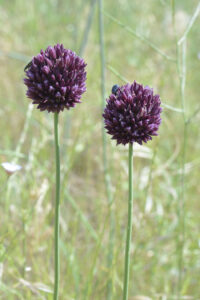








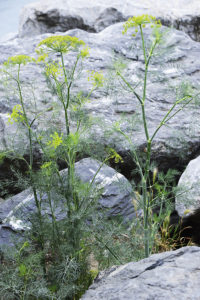
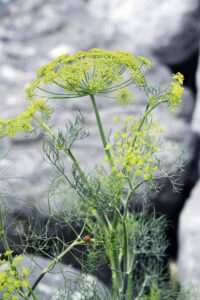



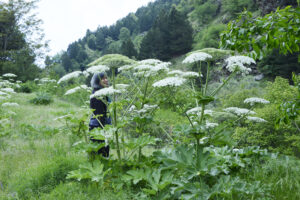
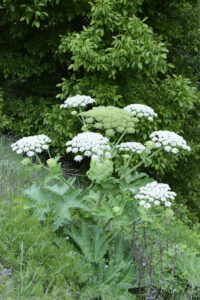




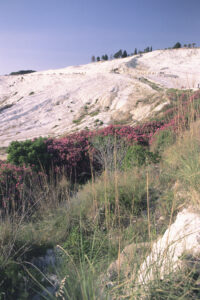







































































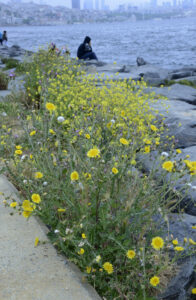












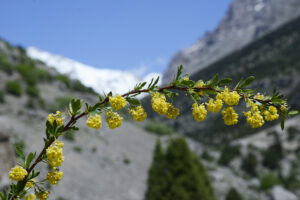


























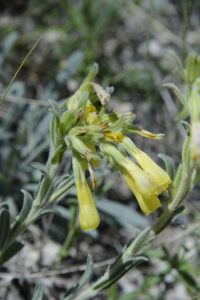

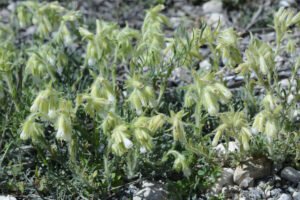








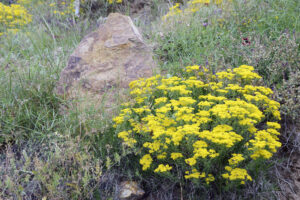




























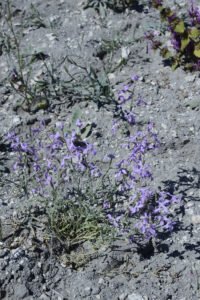


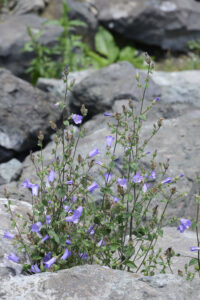






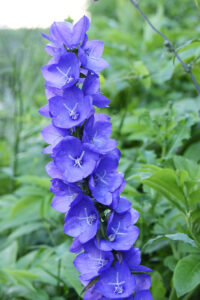







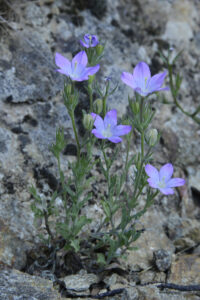






 An unidentified species of Lomelosia, Manisa. (Photos copyright © by Kaj Halberg)
An unidentified species of Lomelosia, Manisa. (Photos copyright © by Kaj Halberg)

